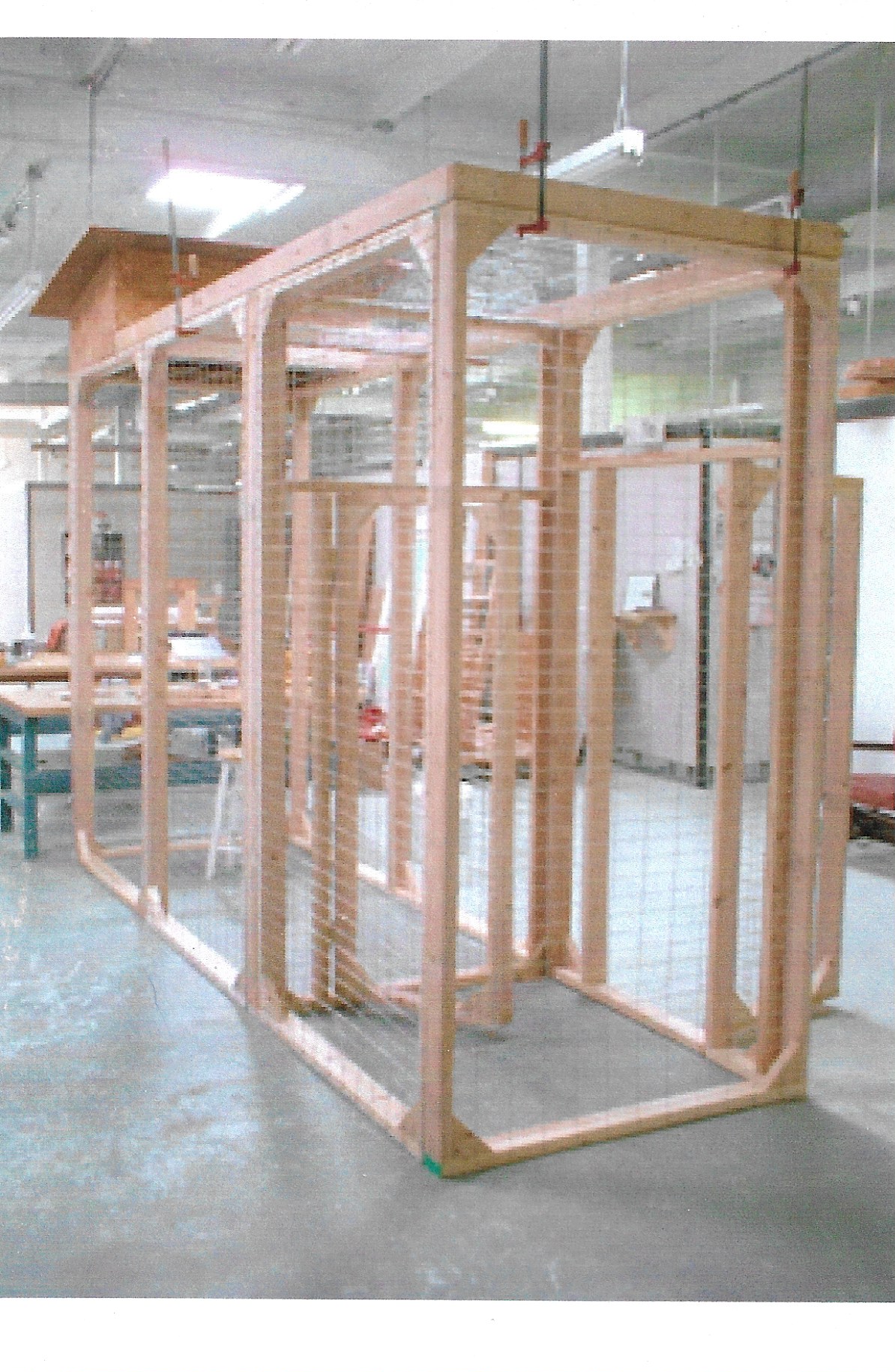Wood
Working
Projects
.
Walnut Cabinet
I recently came into the possession of a couple of walnut-veneered closet doors and decided to build a freestanding closet to go with them.
The plywood sides of my cabinet have rabbets cut into them for attaching the top, bottom, shelves and back. I assembled the entire cabinet using a biscuit joiner. I didn’t possess enough long pipe clamps for the final assembly, so I did some research and made wooden clamps from scrap wood, which worked fine for this project.
The bottom has holes in it for leveling the adjustable feet and will be covered with a proper maple veneer, hinged plywood “floor”.
After gluing up the cabinet, I used a couple of different stains to match the color as close as I could to that of the existing doors and finished it with a water-based, satin polyurethane. The doors were quite tall and I didn’t want to cut them, so the finished closet stands about 93″ high, which will accommodate a shelf for shoes.
- Walnut and maple veneer plywood
- Salvaged walnut-veneered solid core doors
- Hardware
- Water-based polyurethane
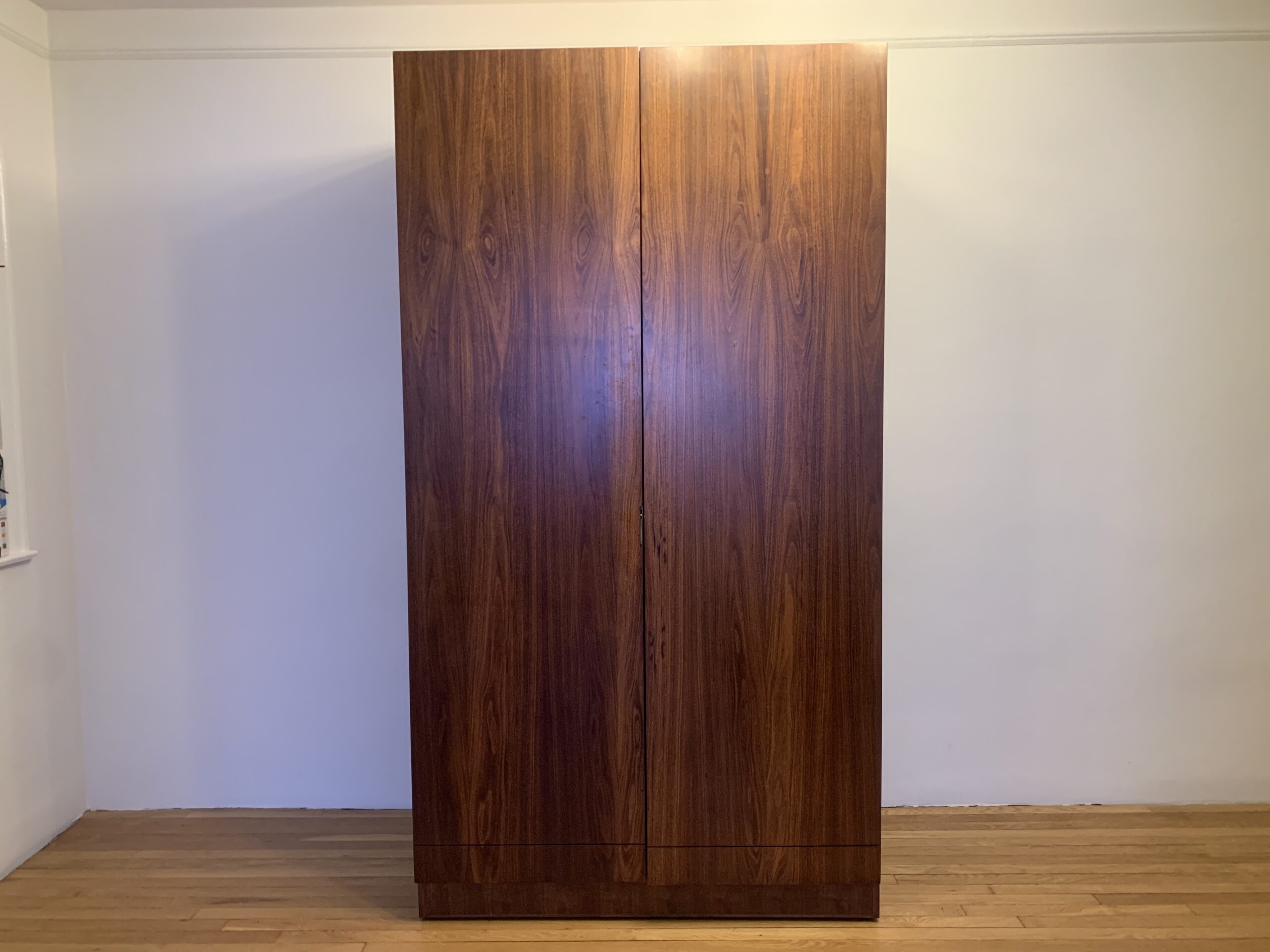
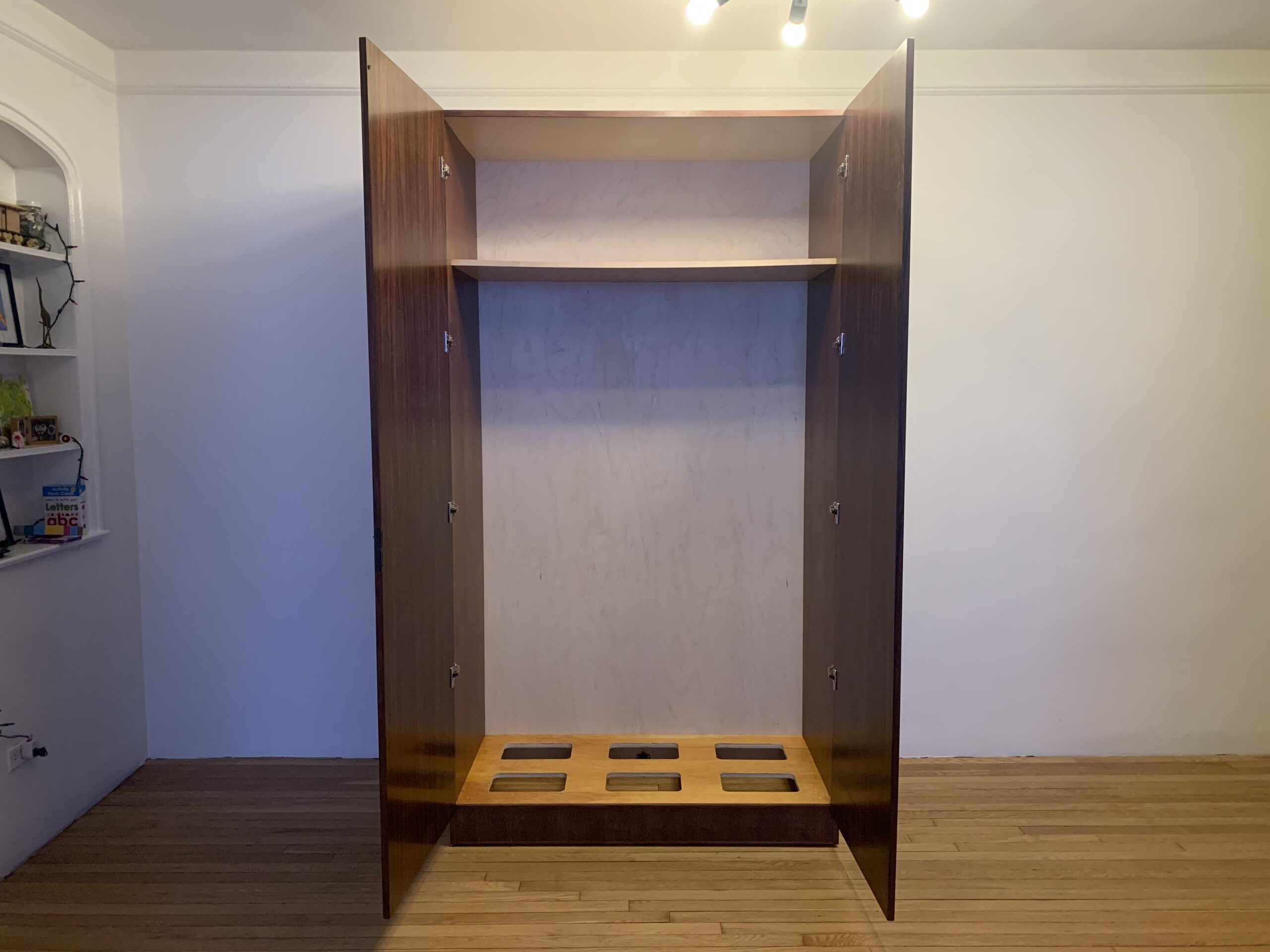
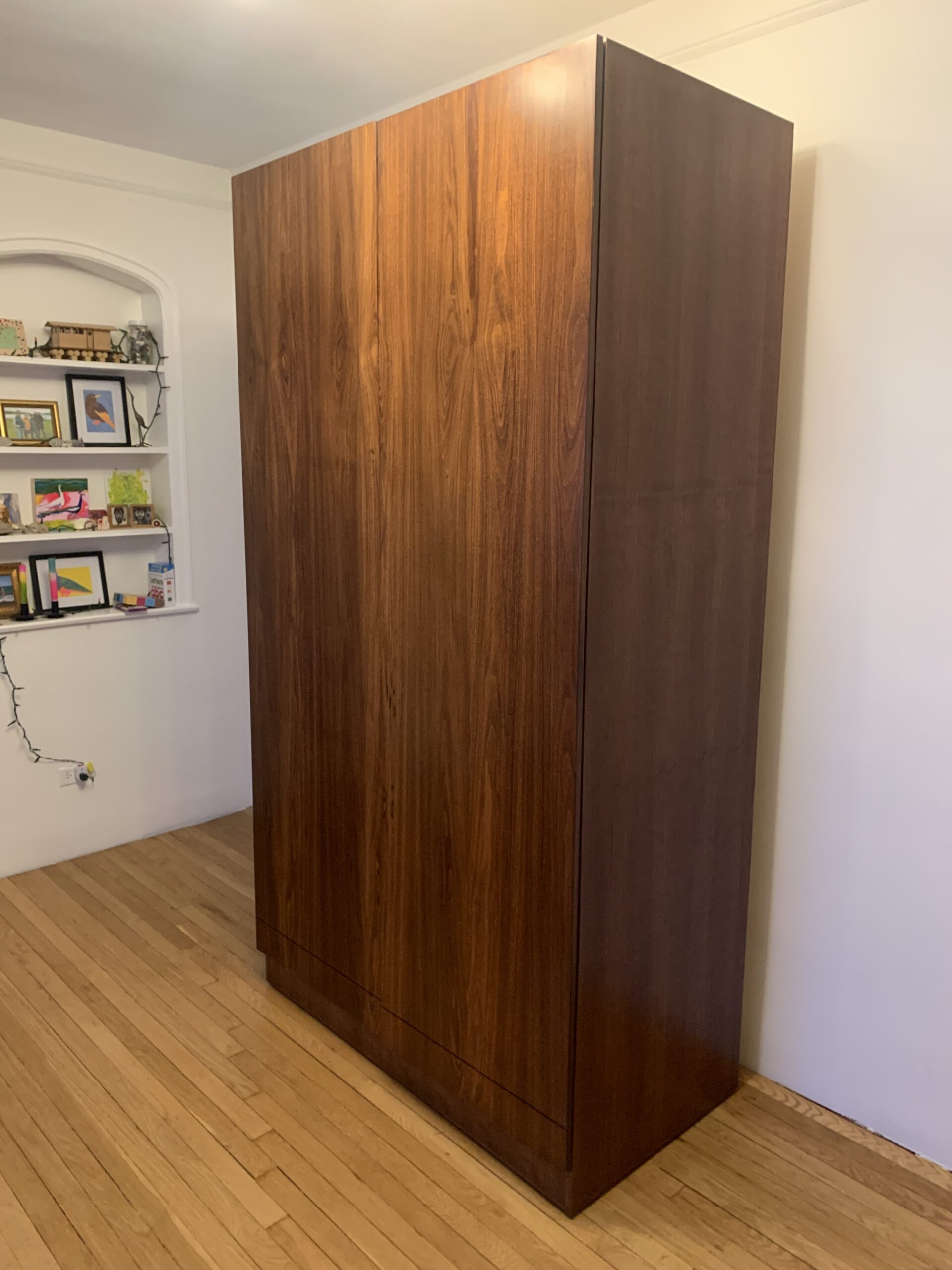
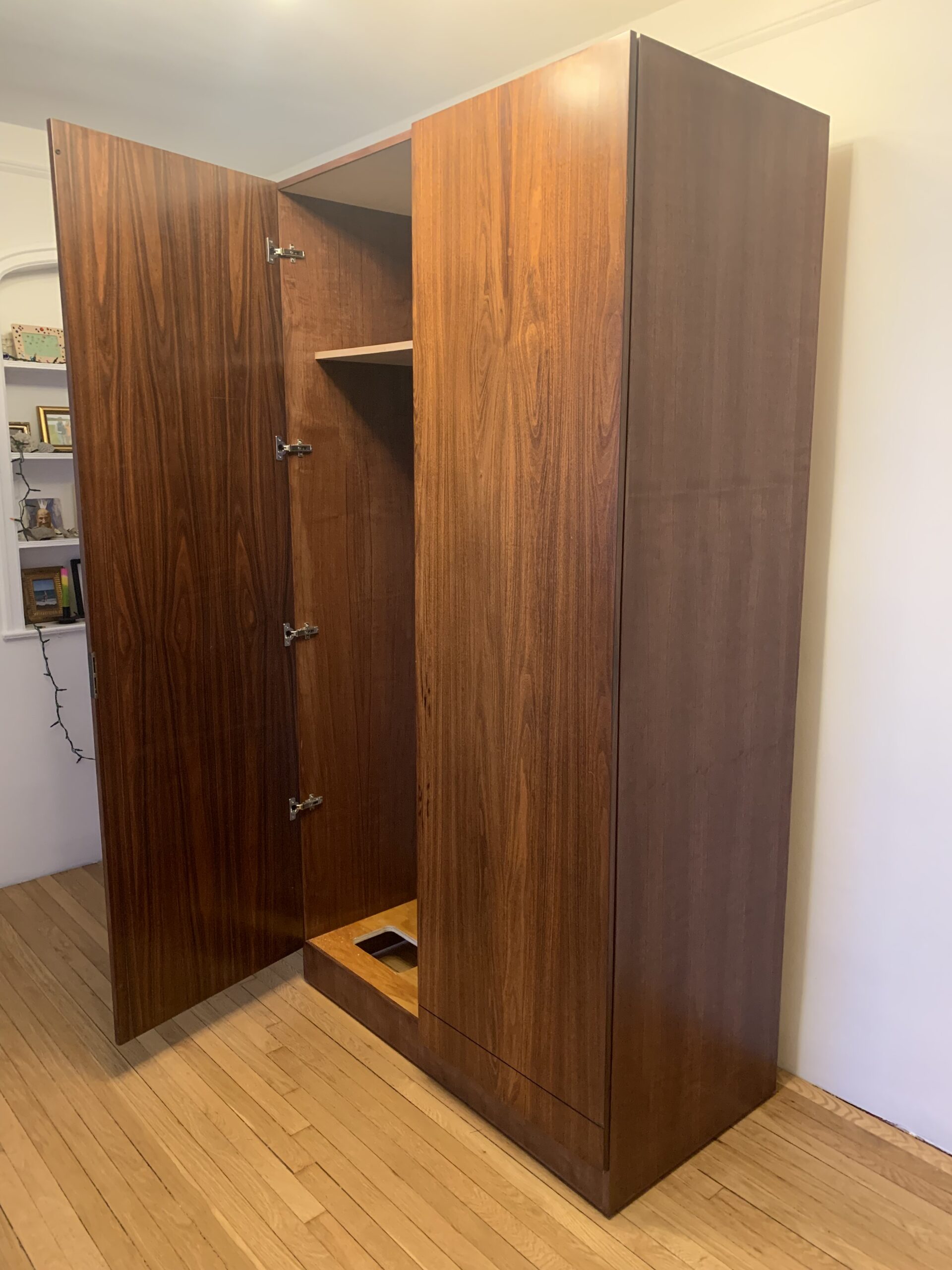
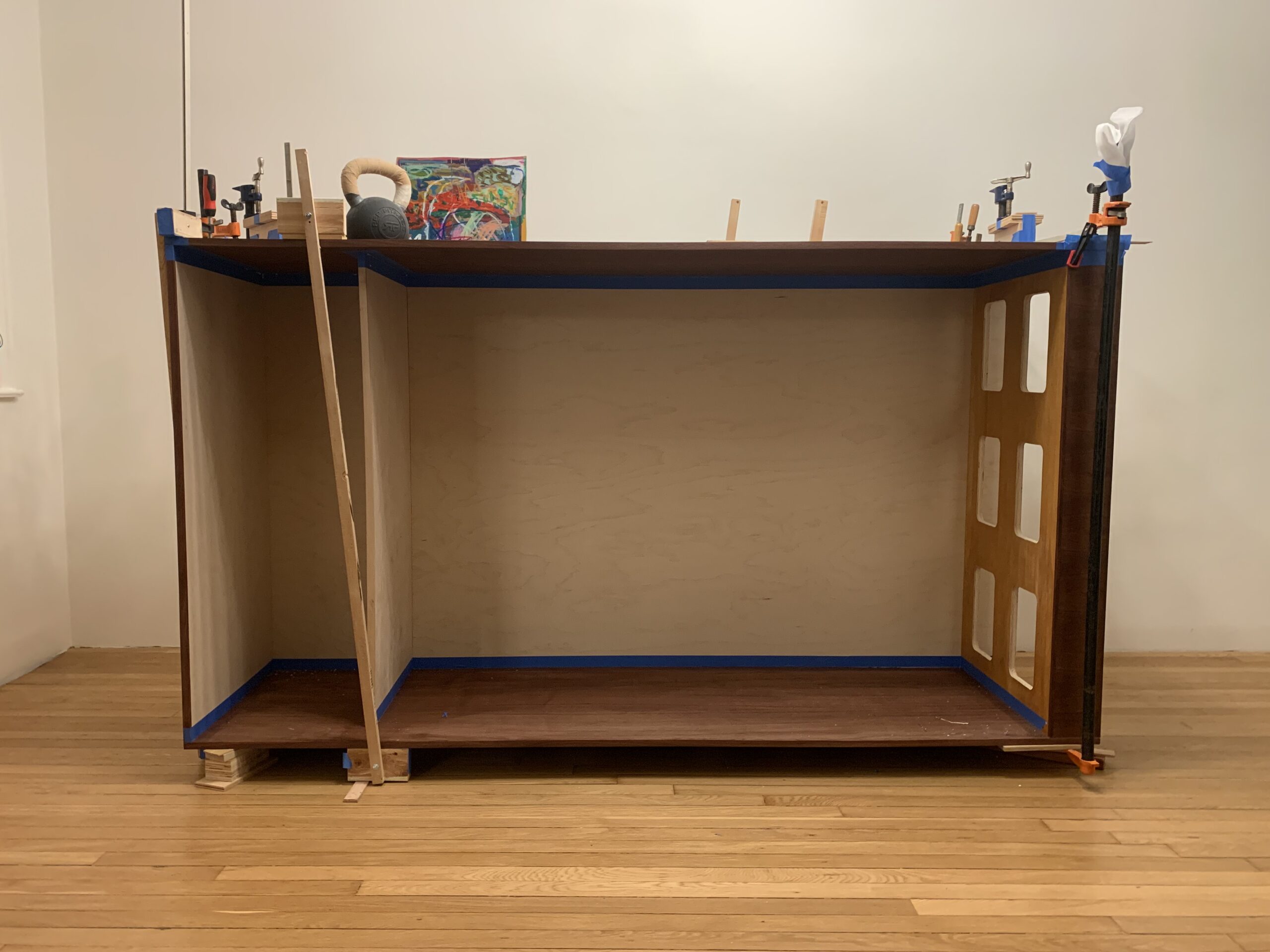
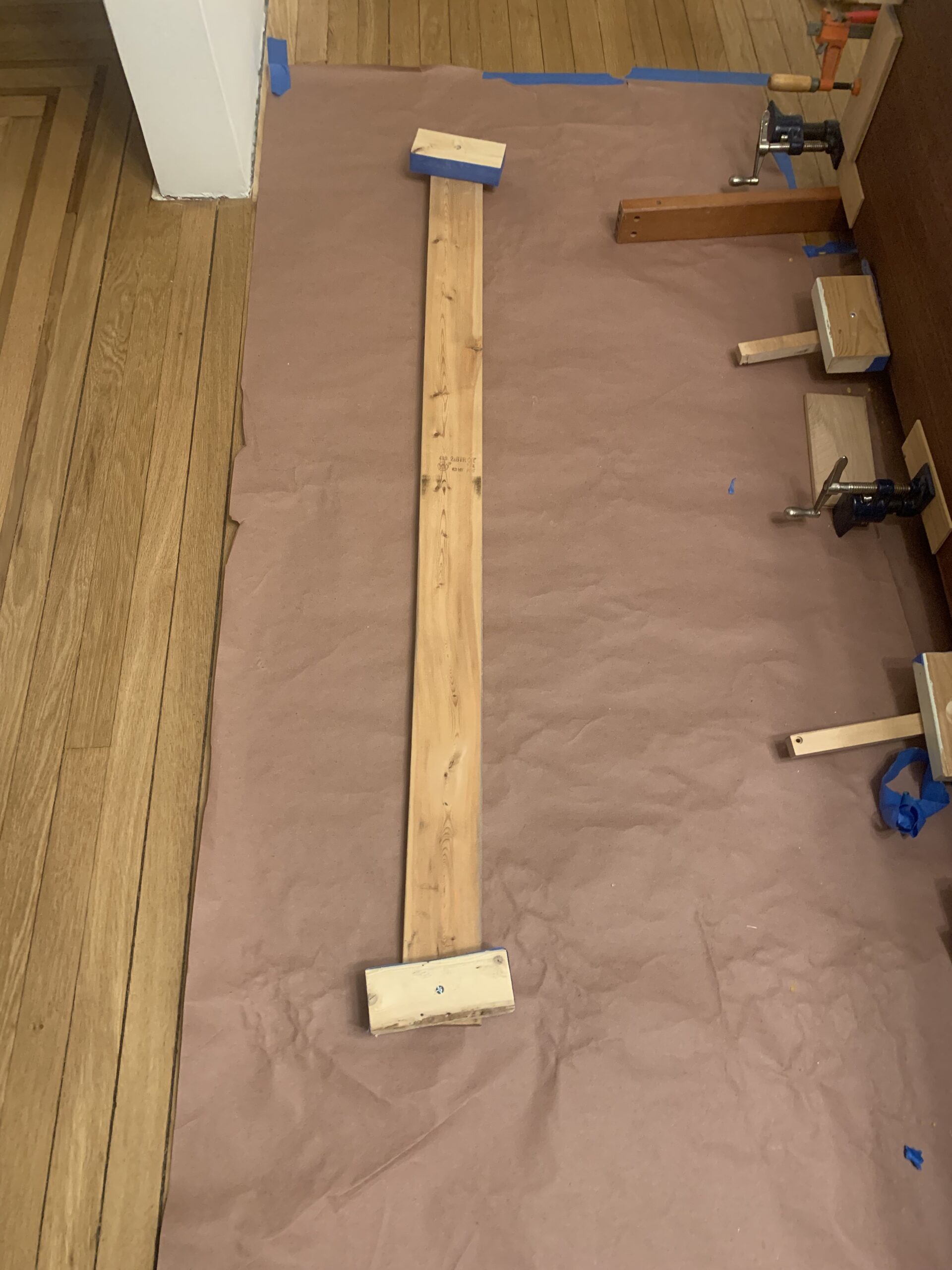
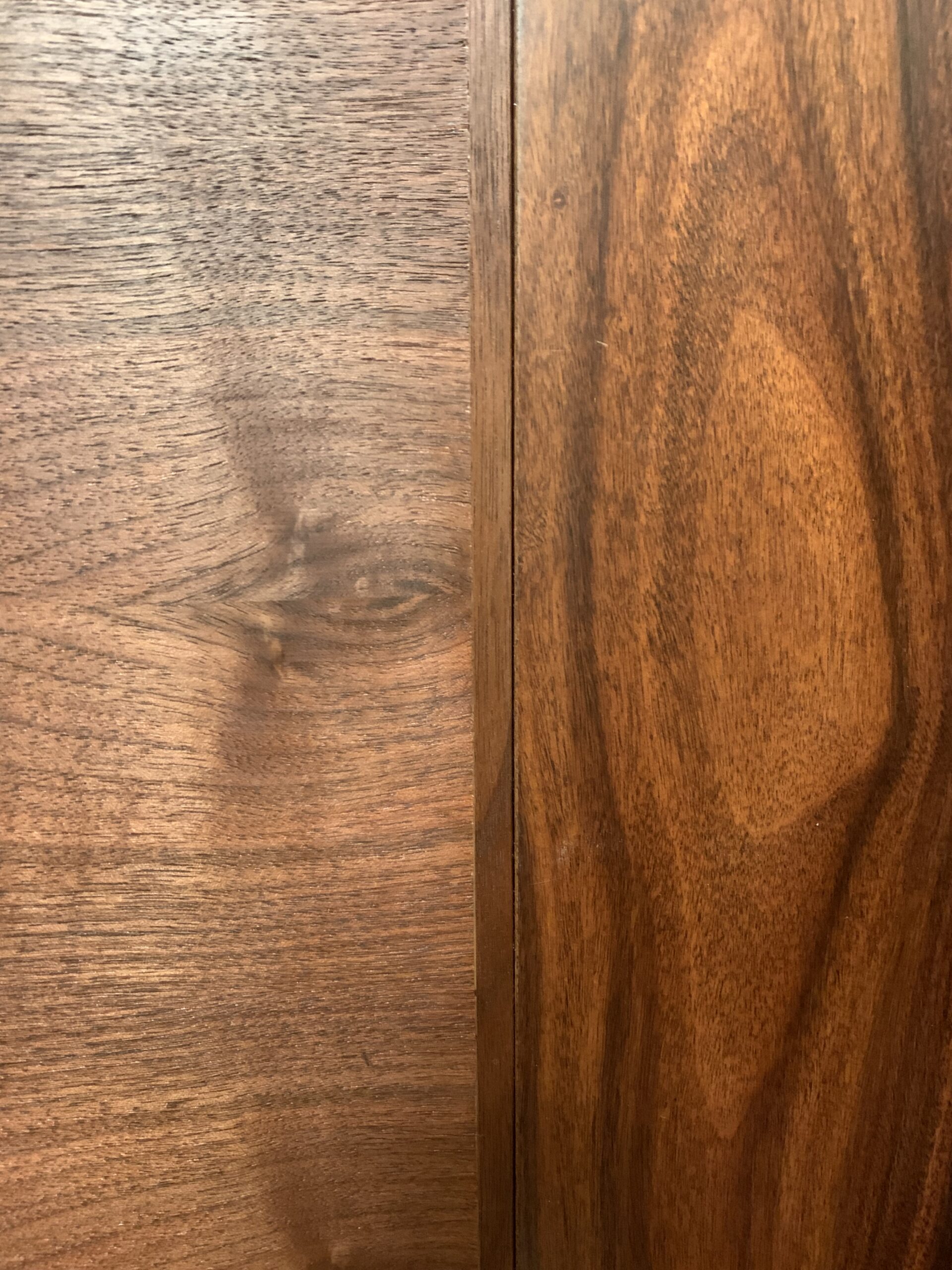

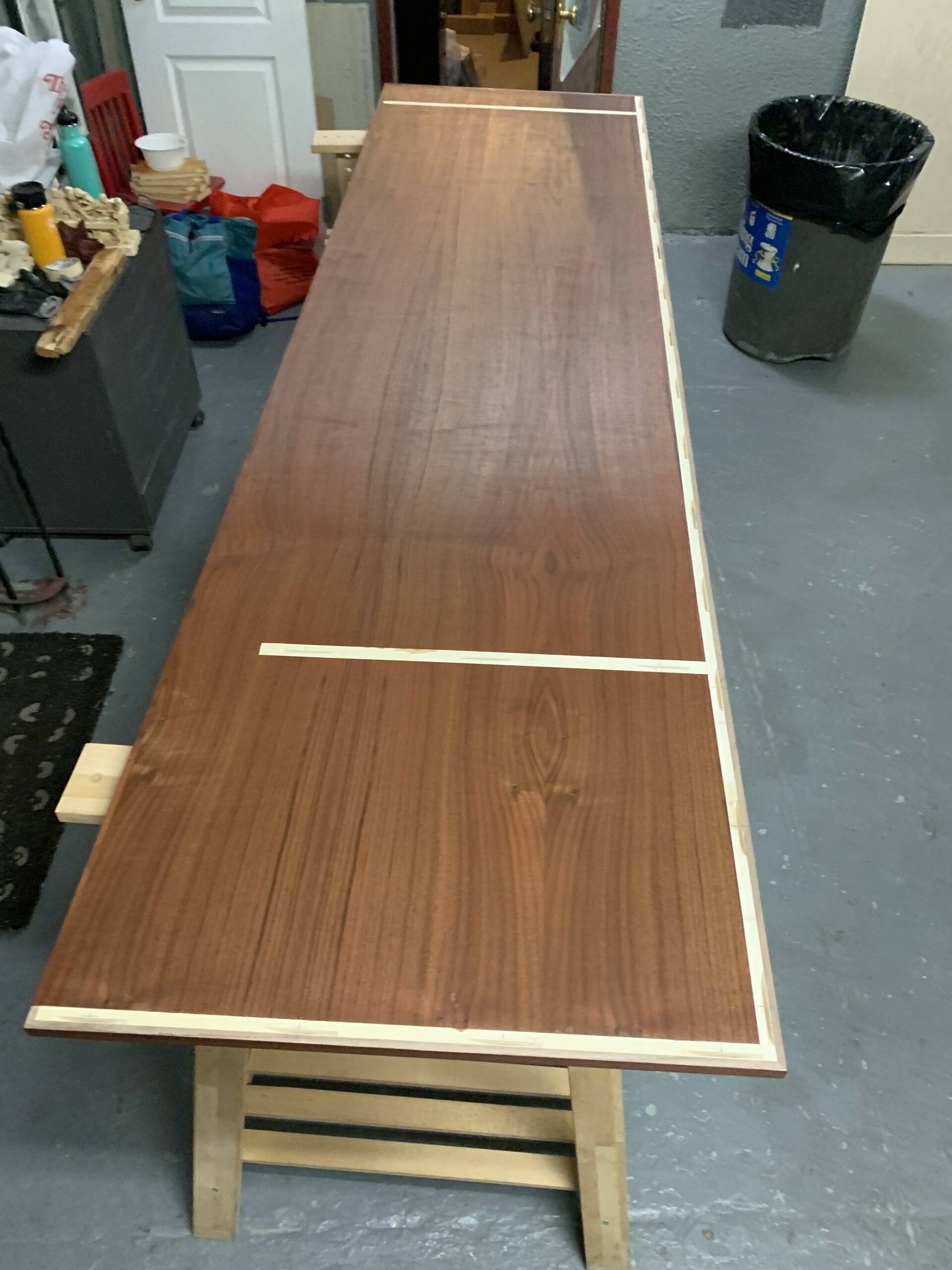
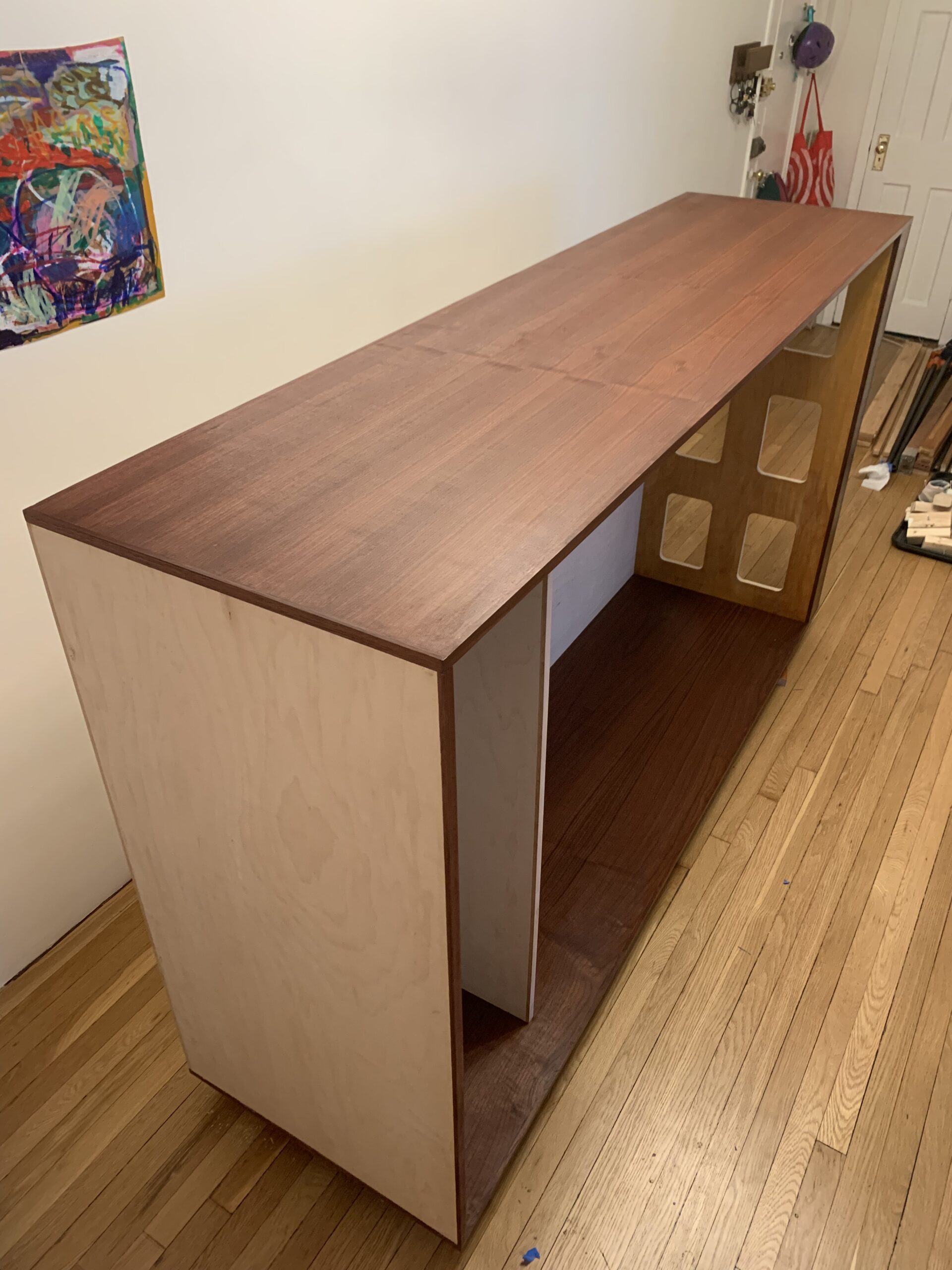
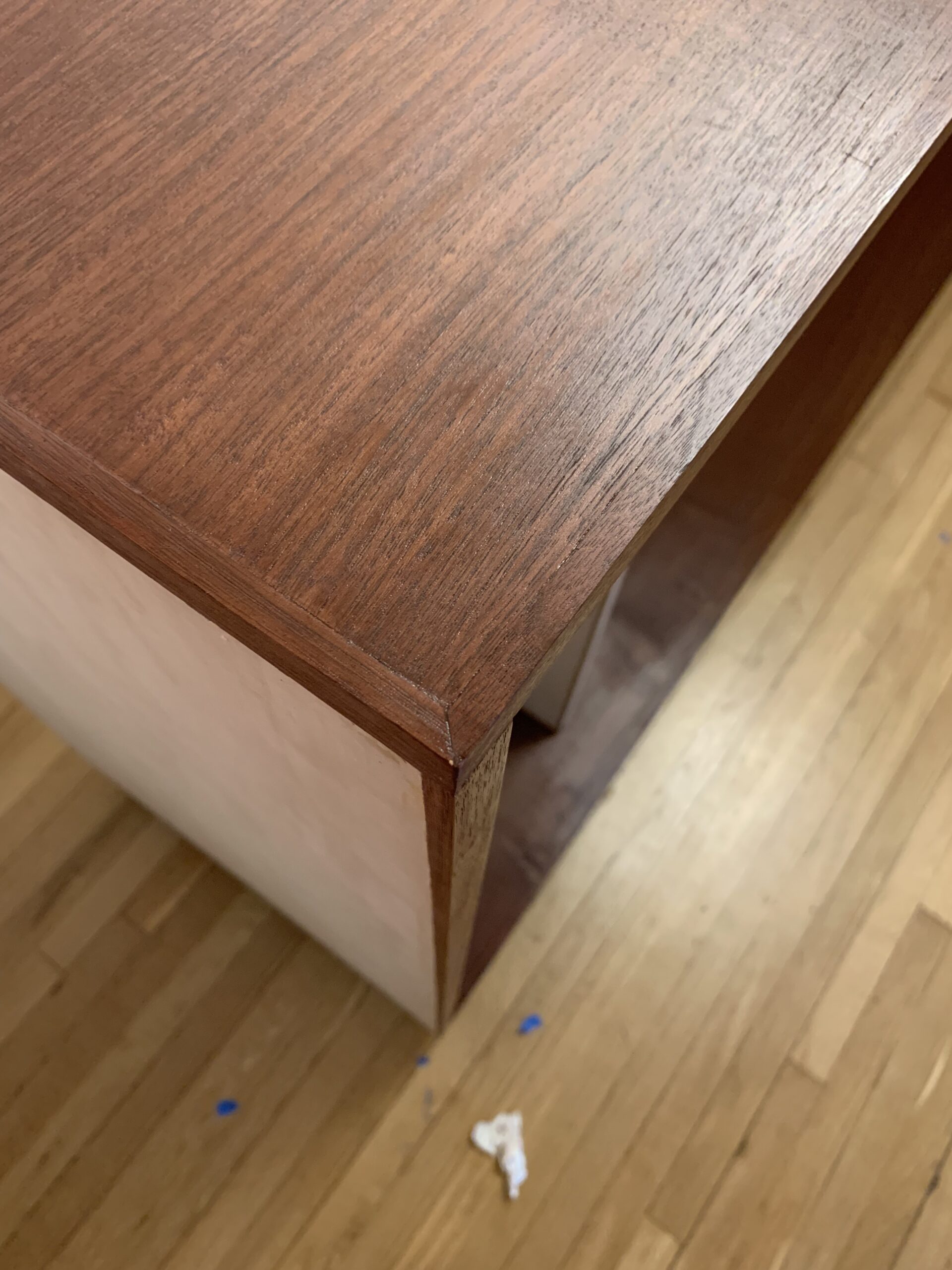
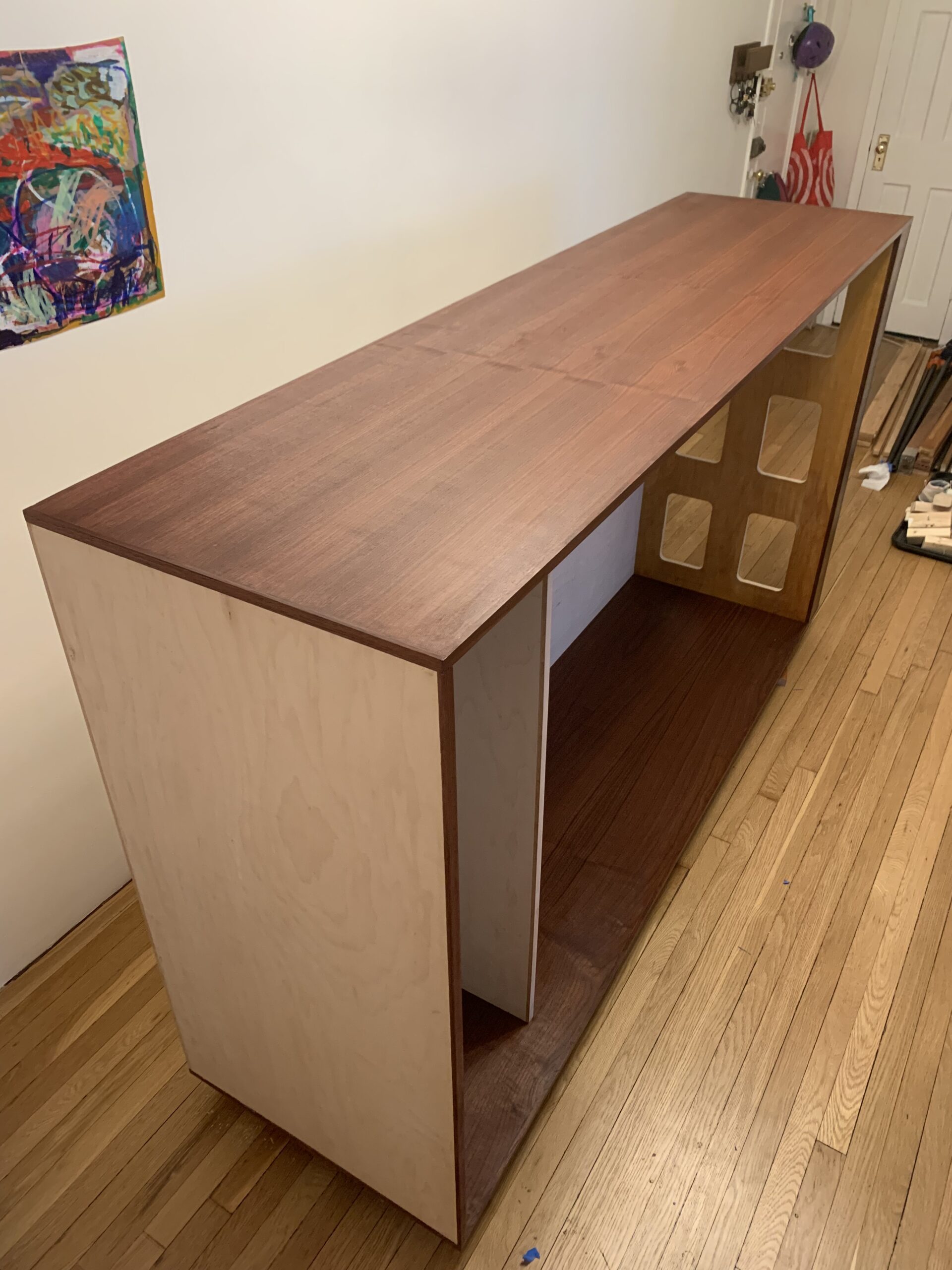
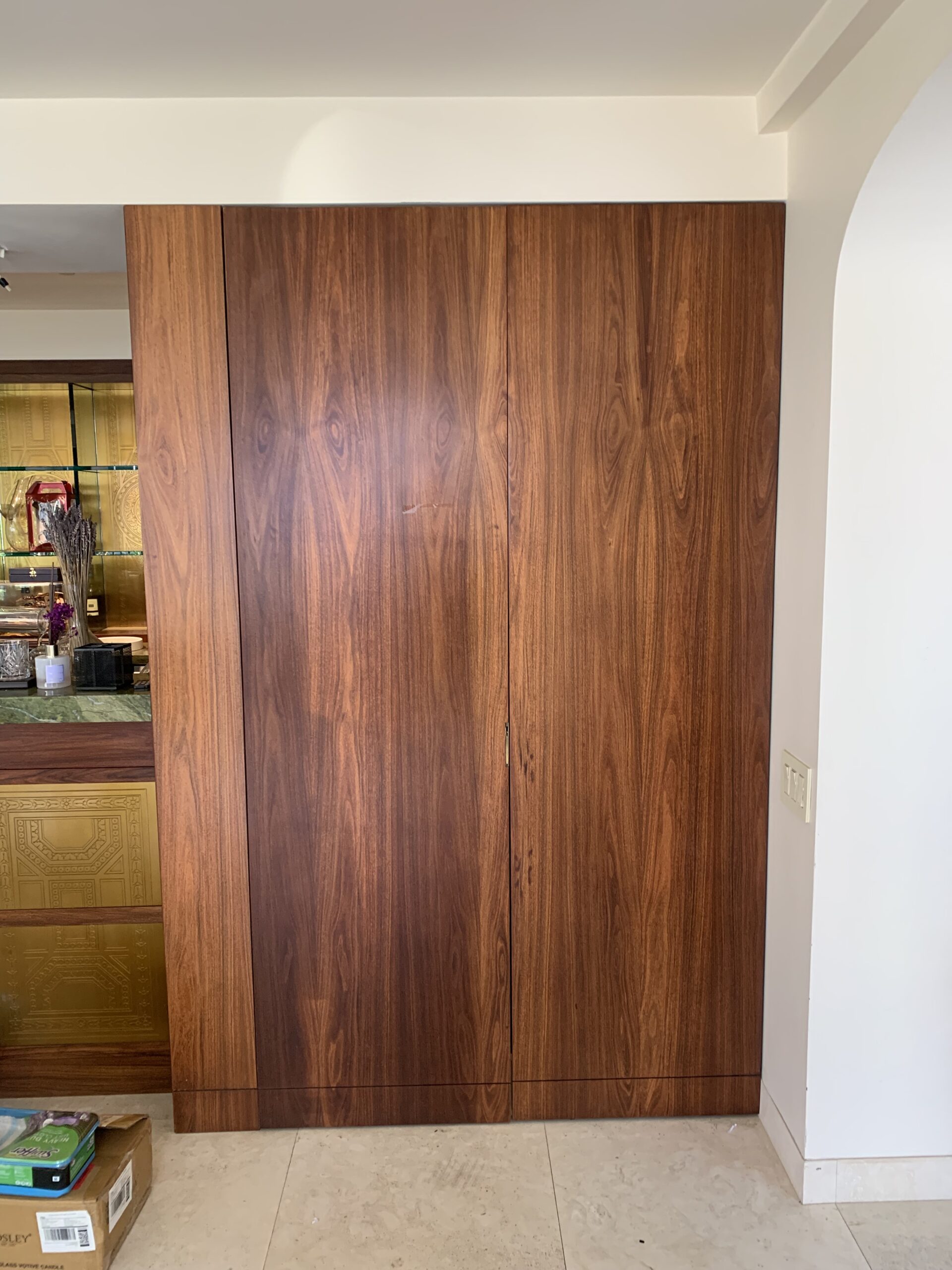
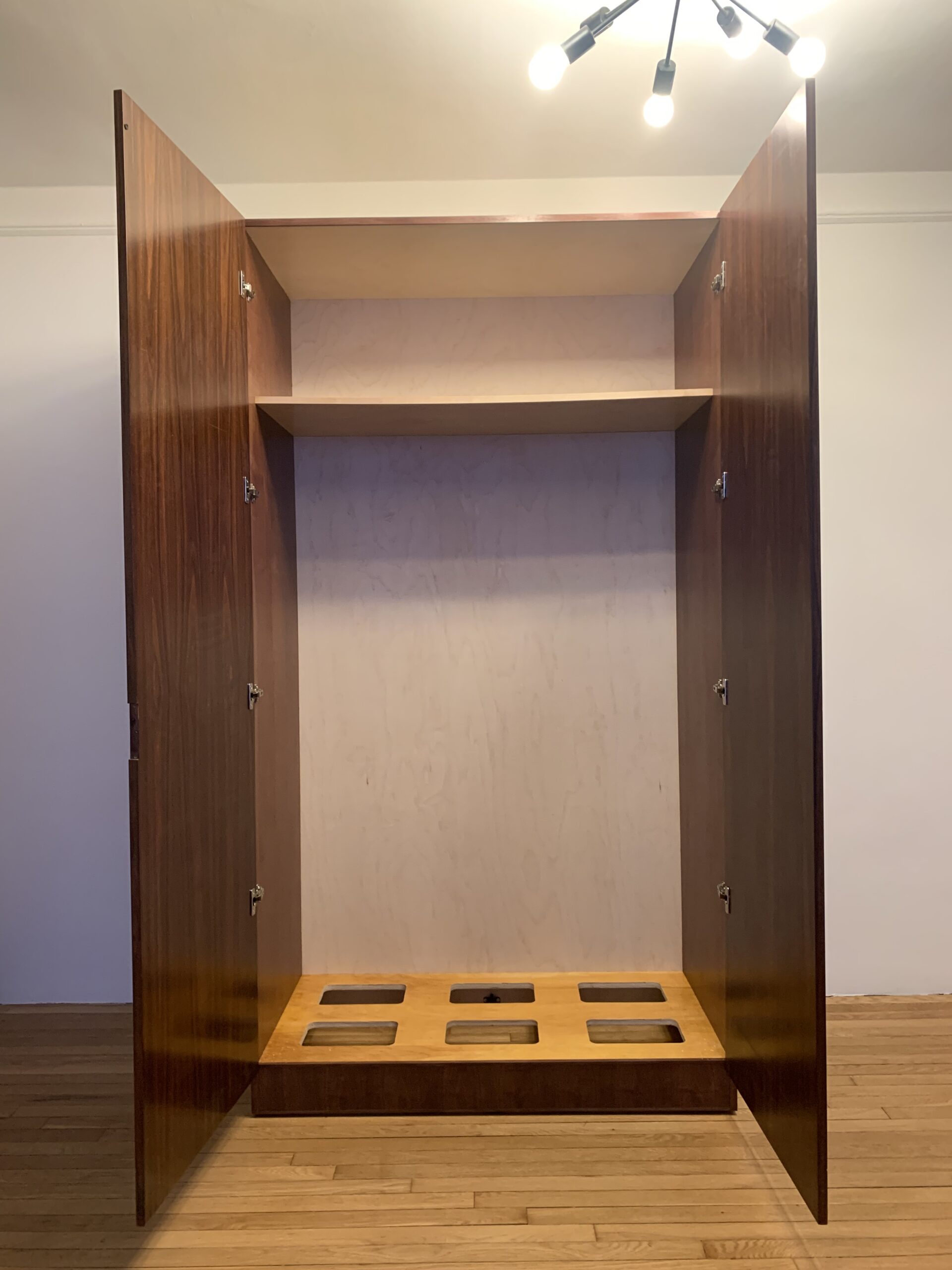
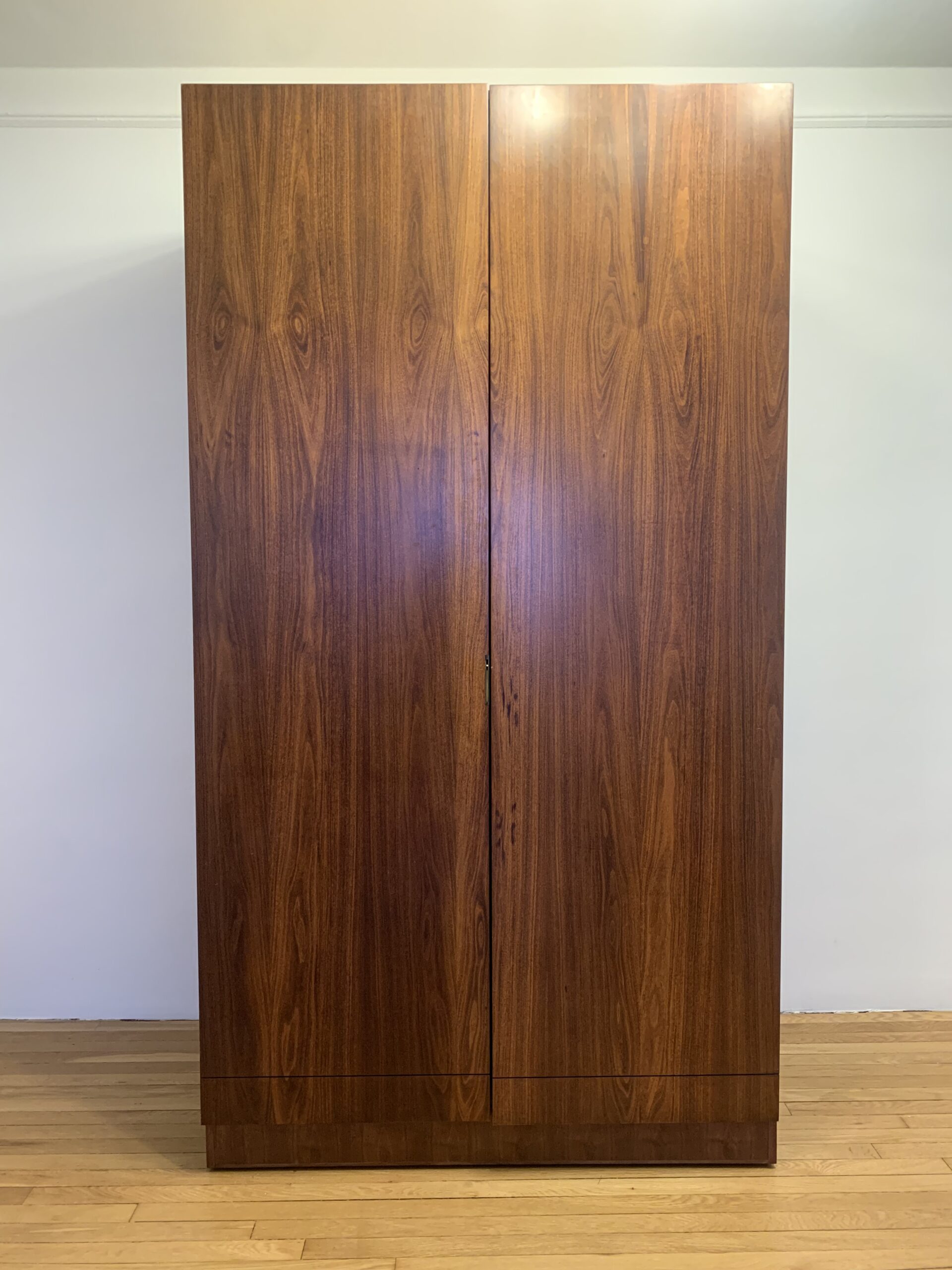
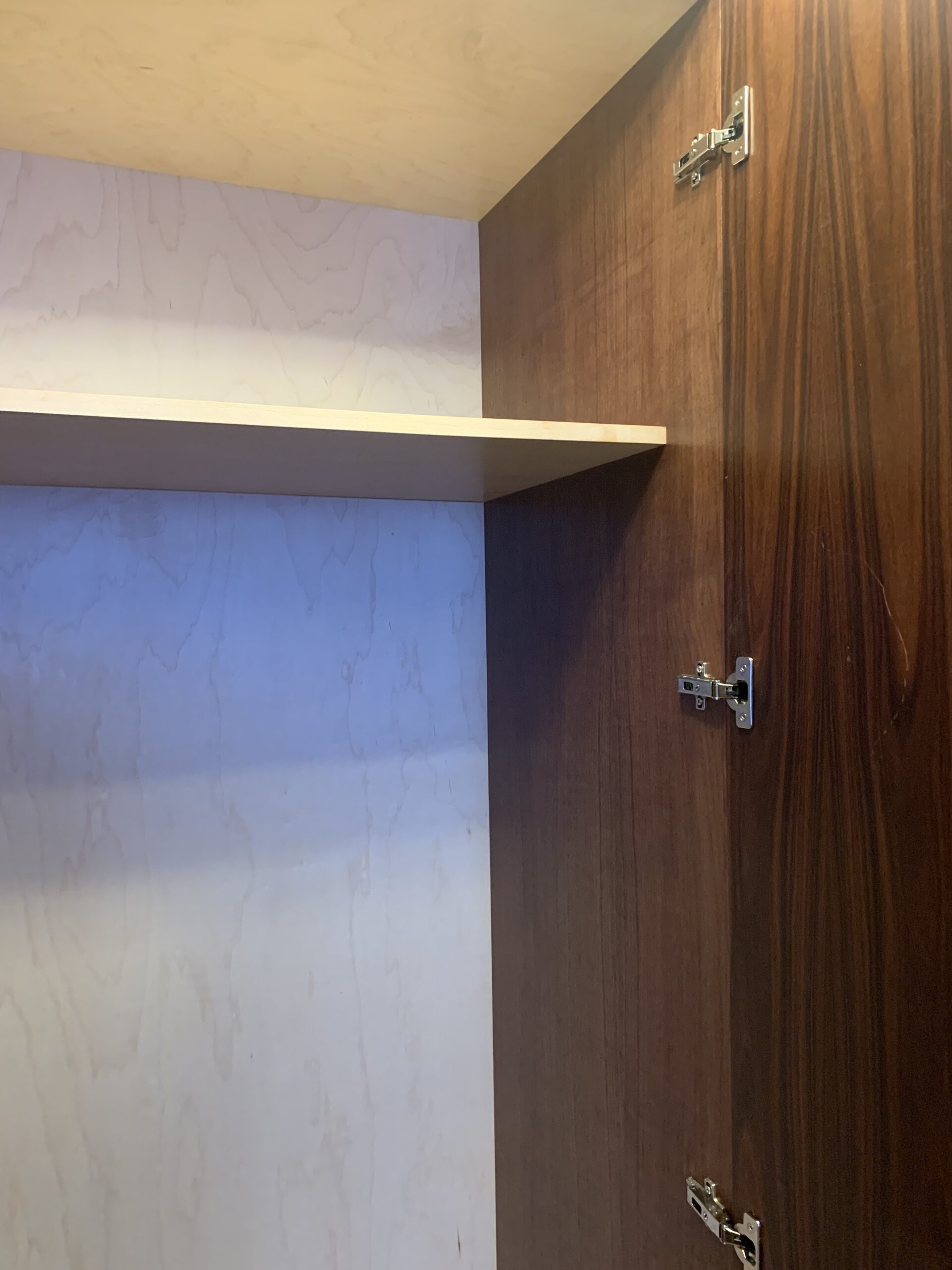
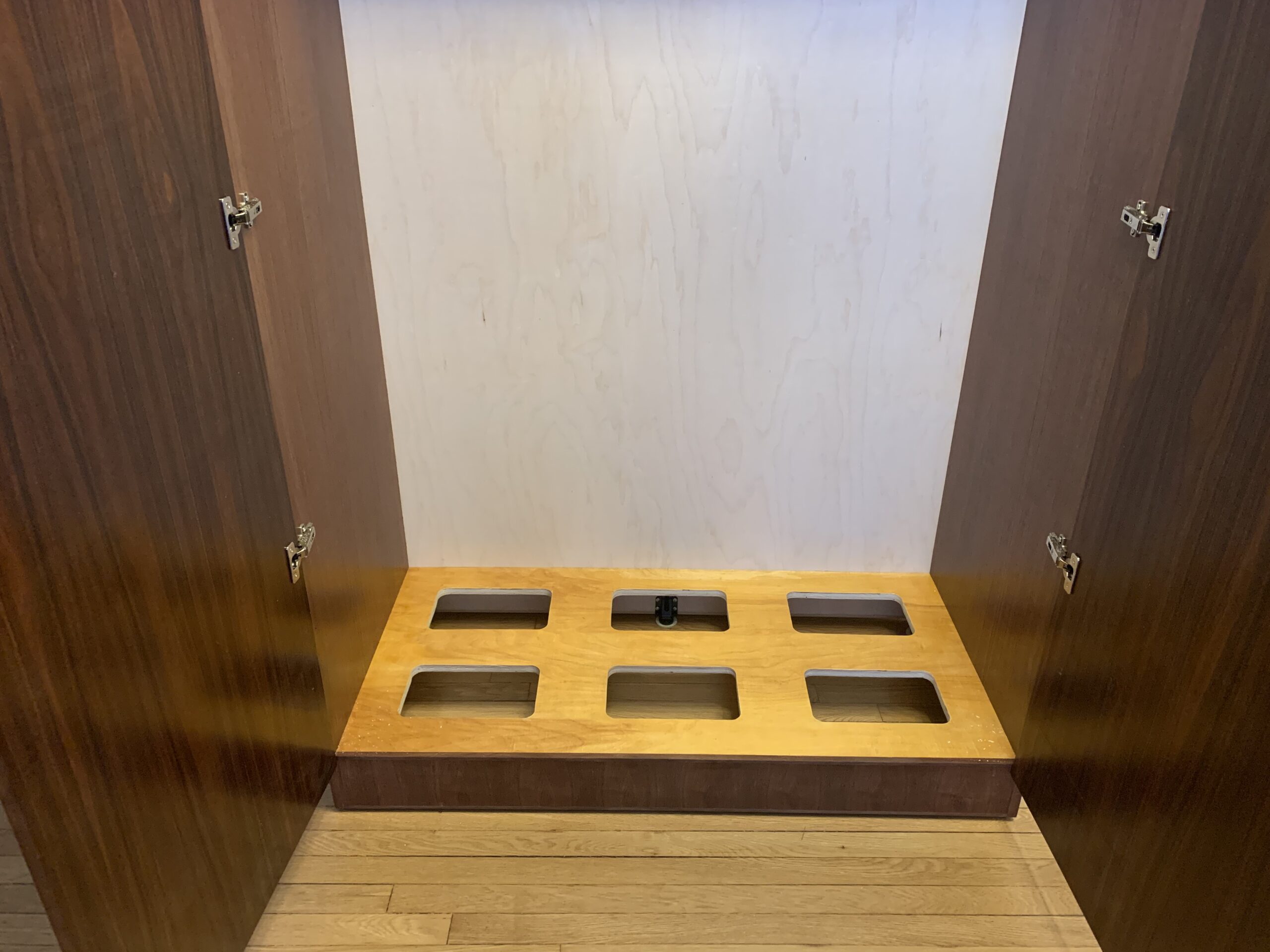
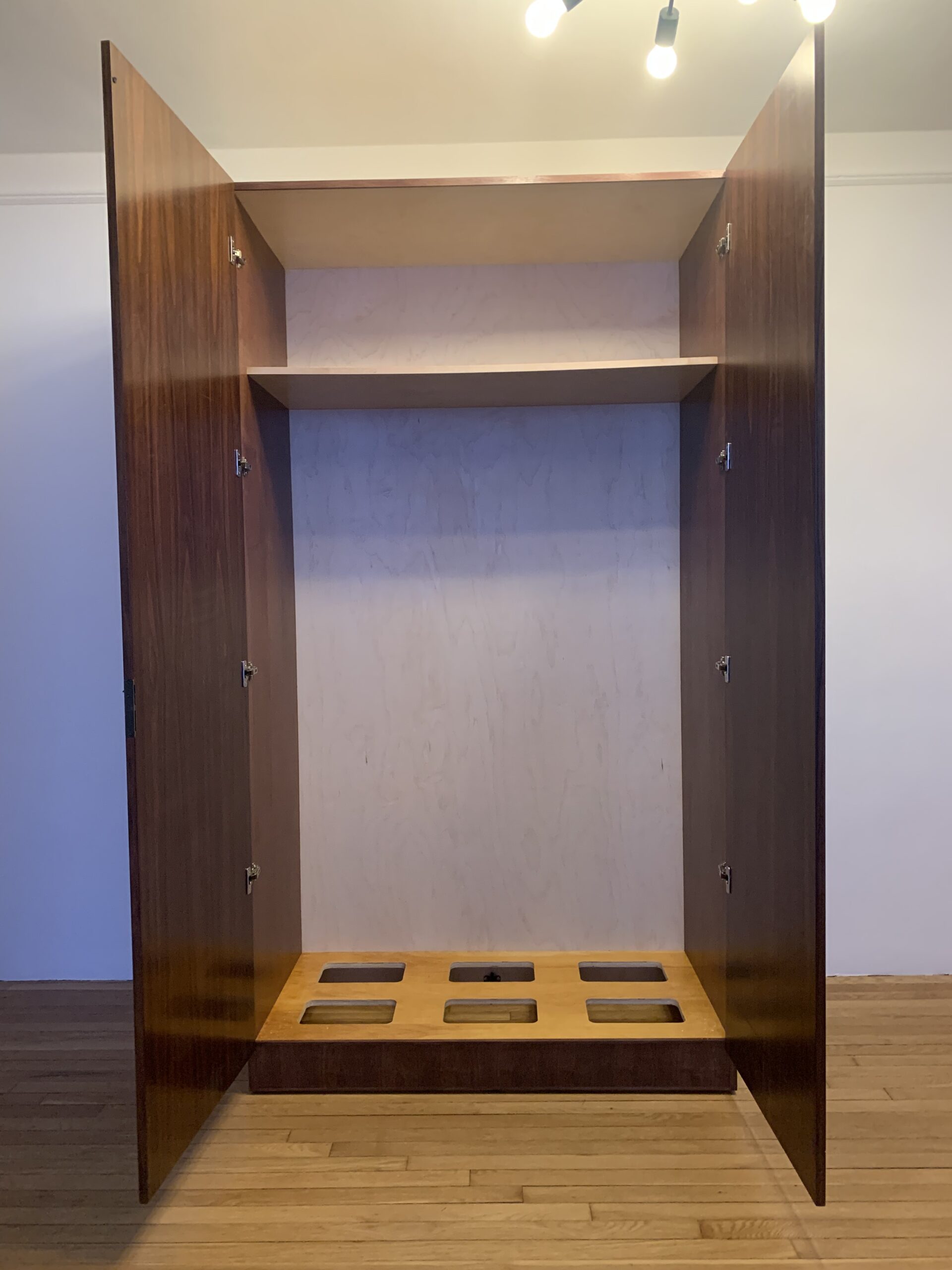
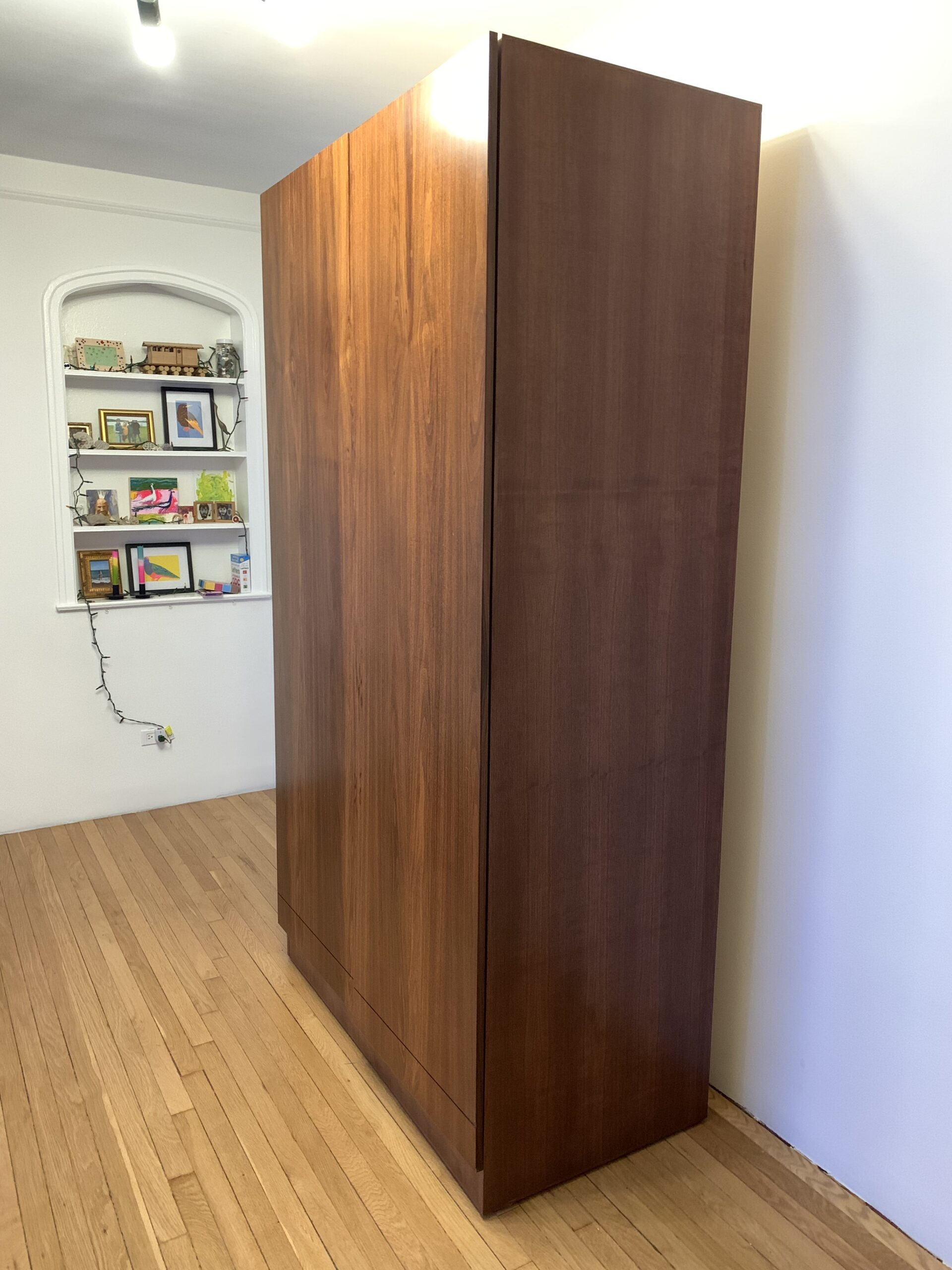
Locking Closet Bar Sockets
A work in progress at the moment. This is a set of walnut bar sockets for my freestanding closet. I designed this in order to have closed sockets on both ends of the wooden bar (unlike commercially made sockets where one side is open), because I knew that if I didn’t do it this way I would inevitably knock the hanger bar down while grabbing my coat. This design allows me to install the bar and then lock it in place on both ends using this little wooden locking mechanism, and no glue or hardware.
- Walnut
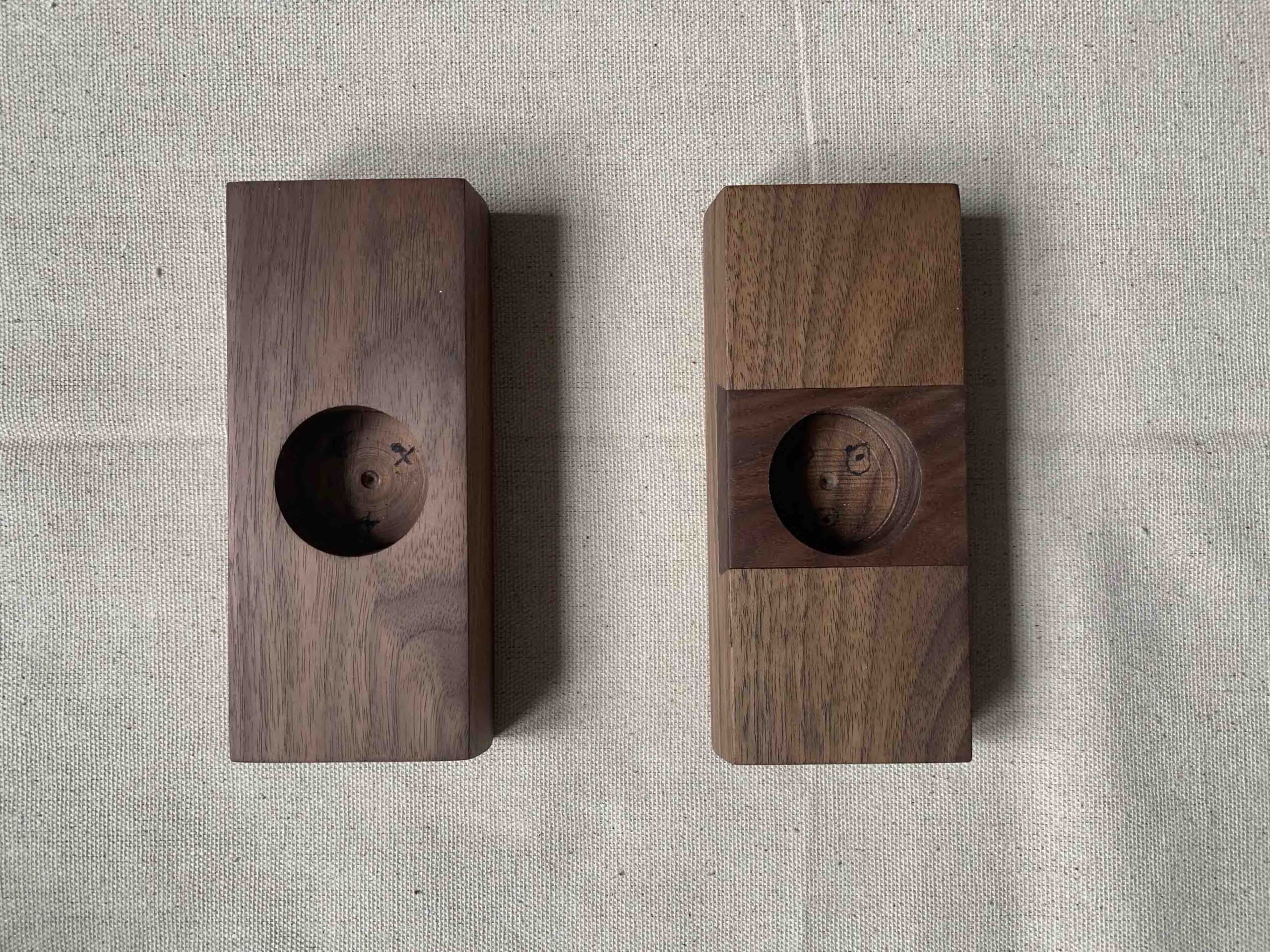
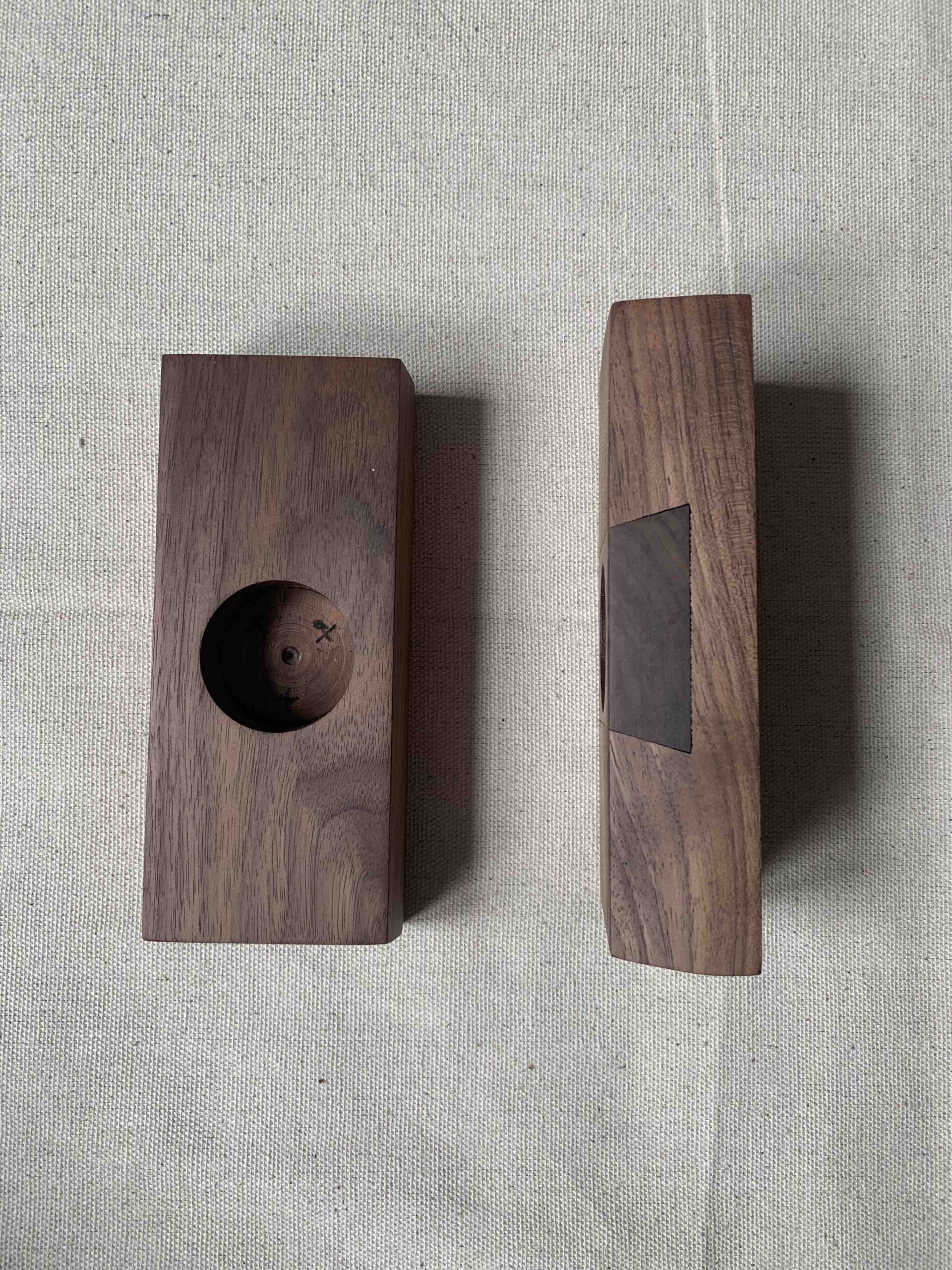
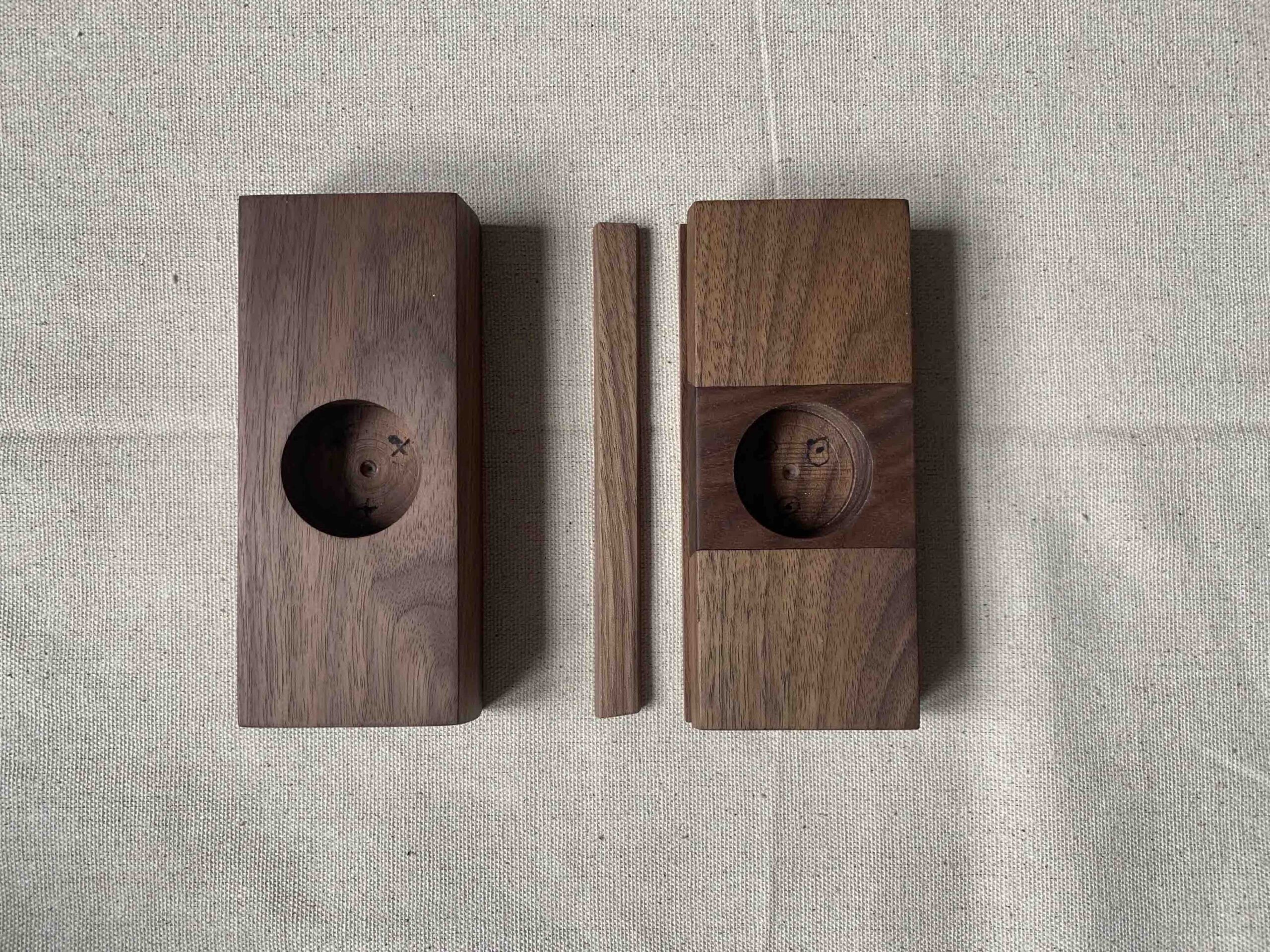


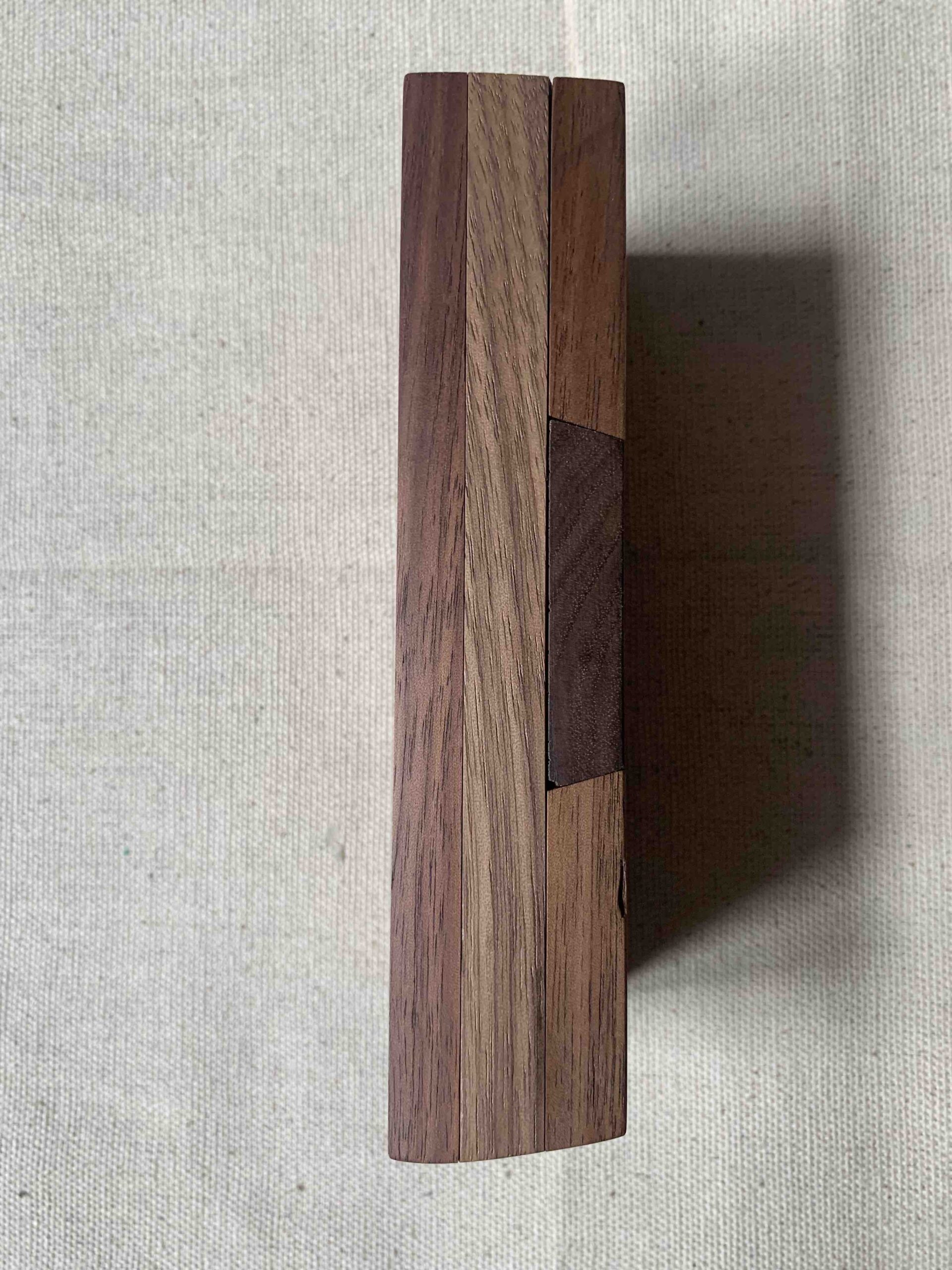
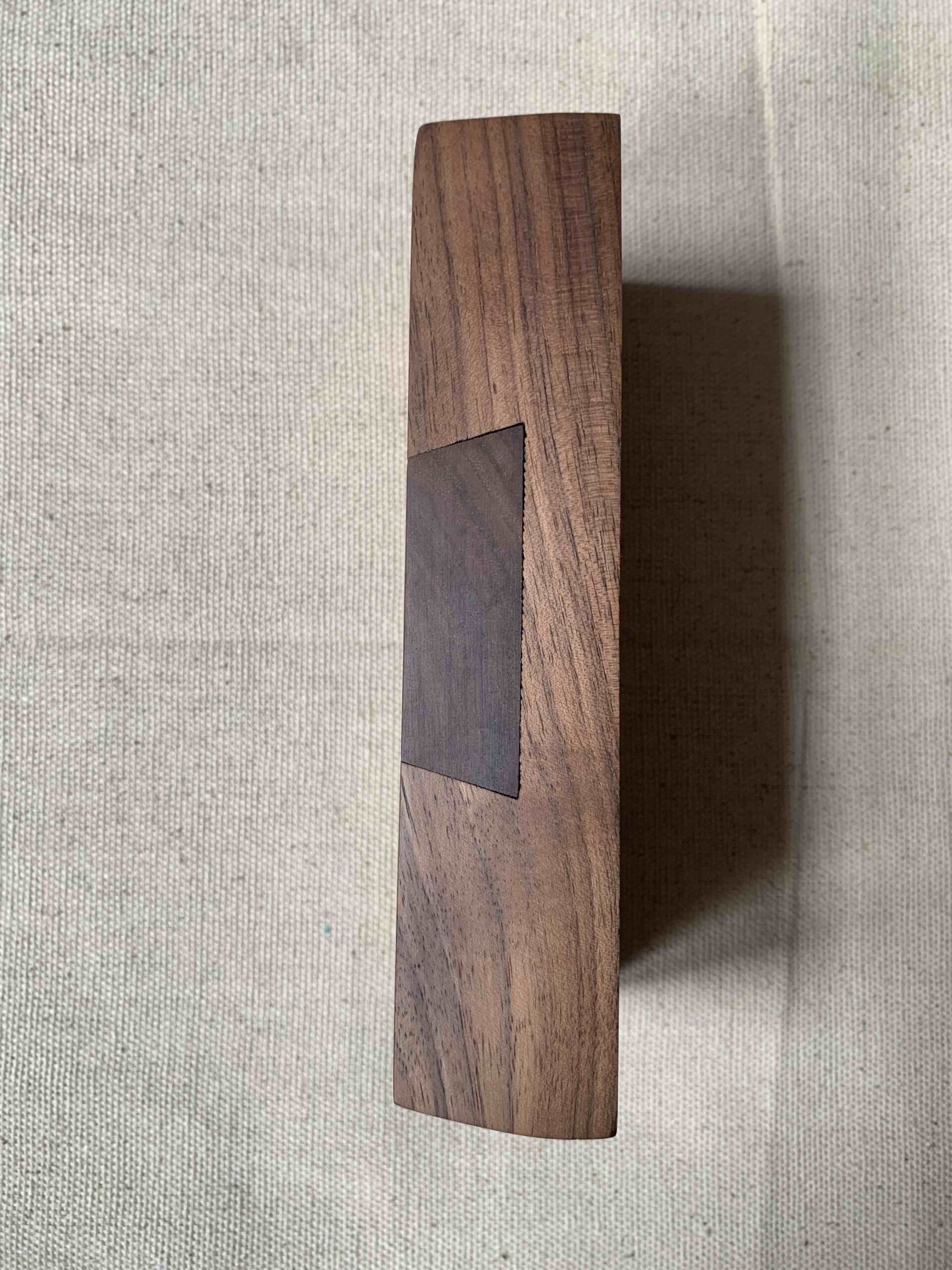
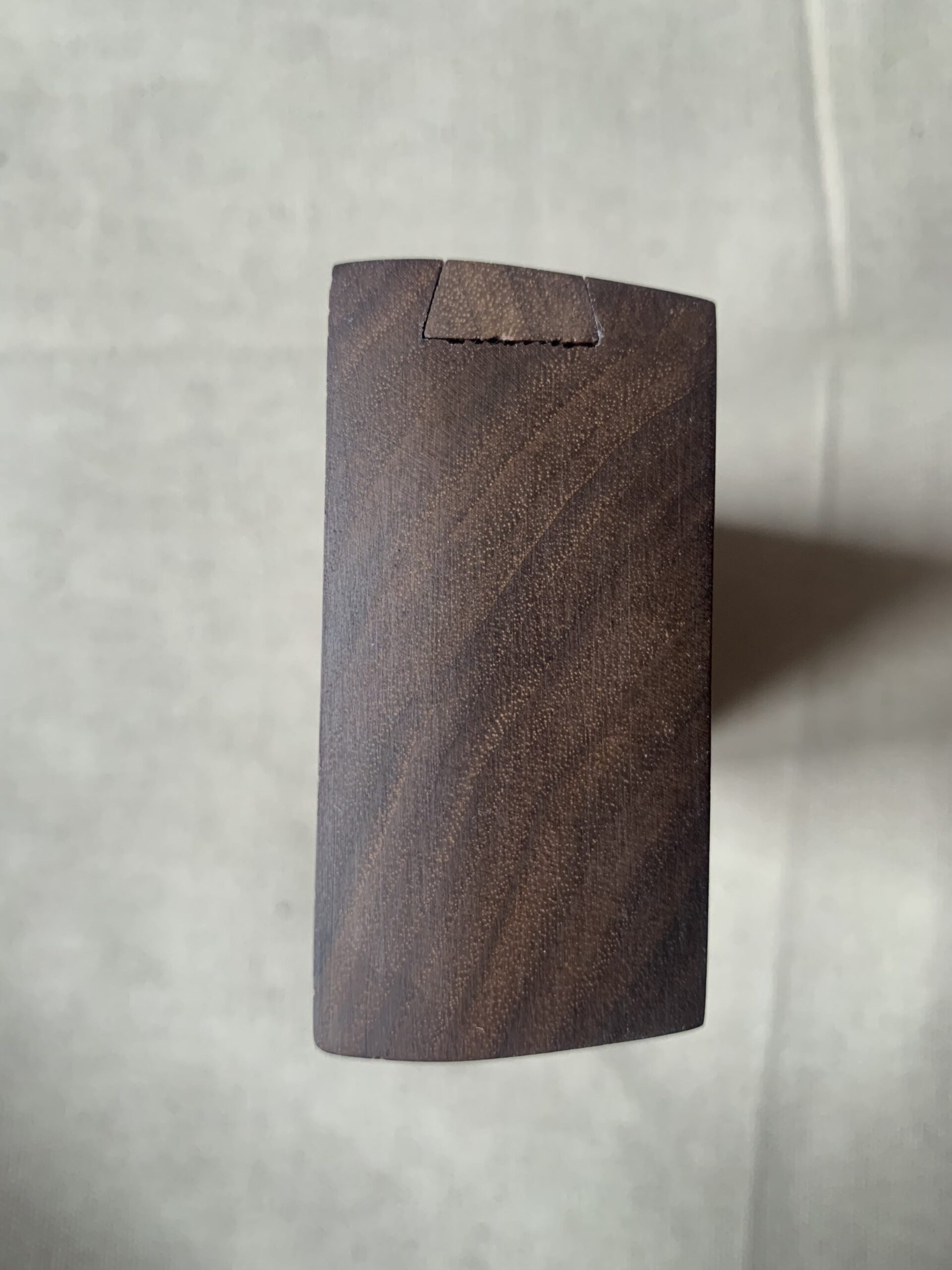
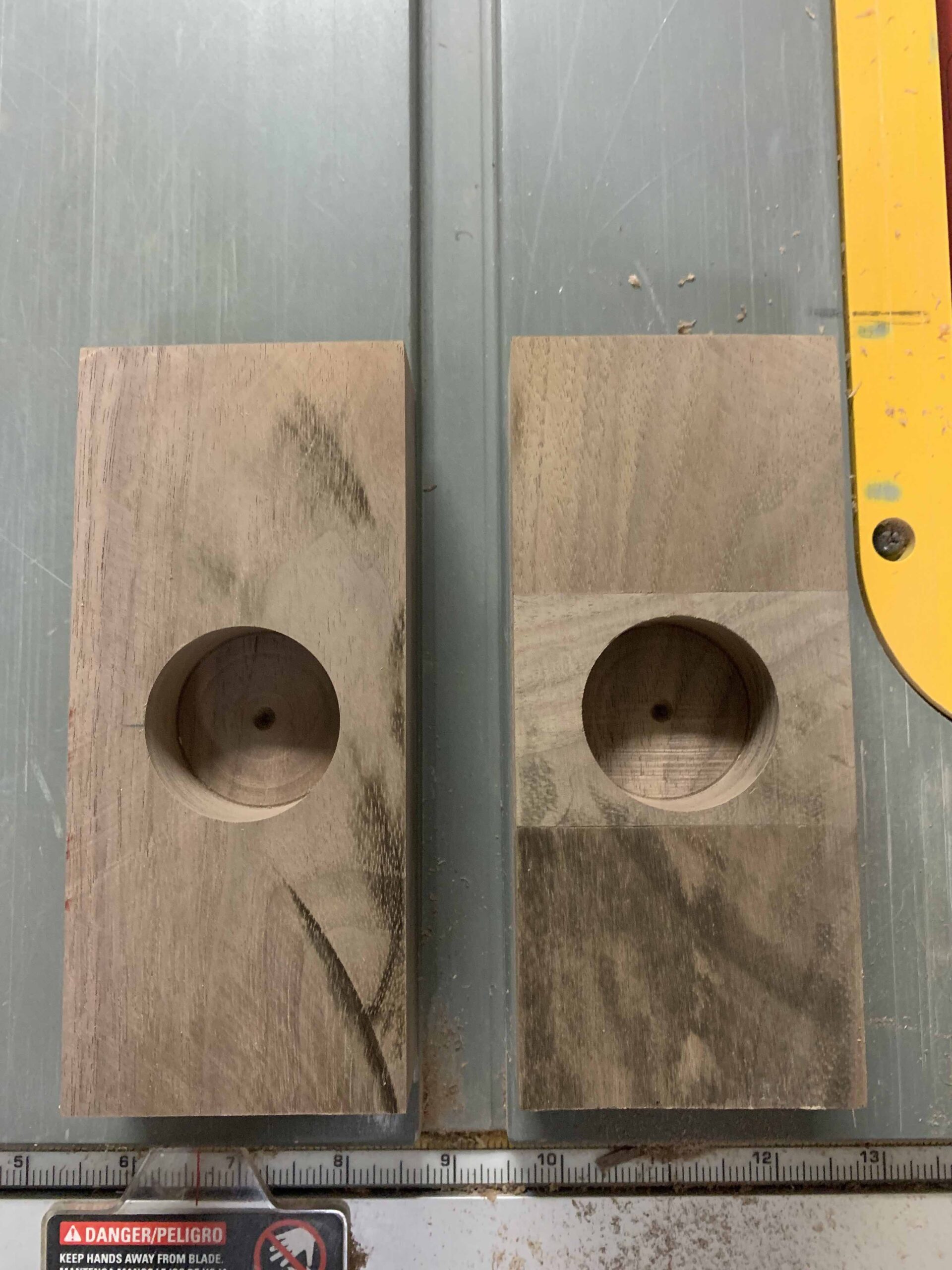
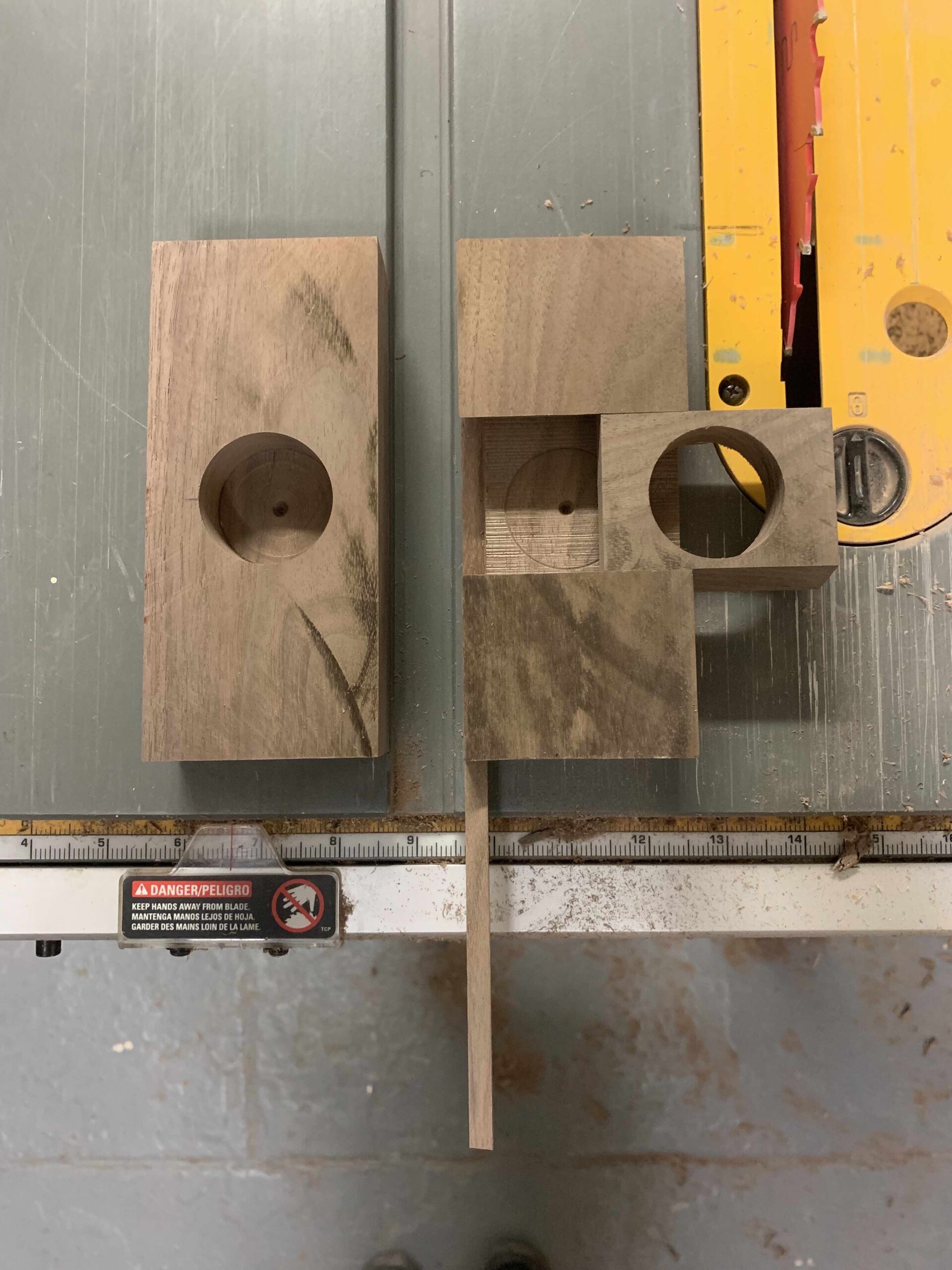
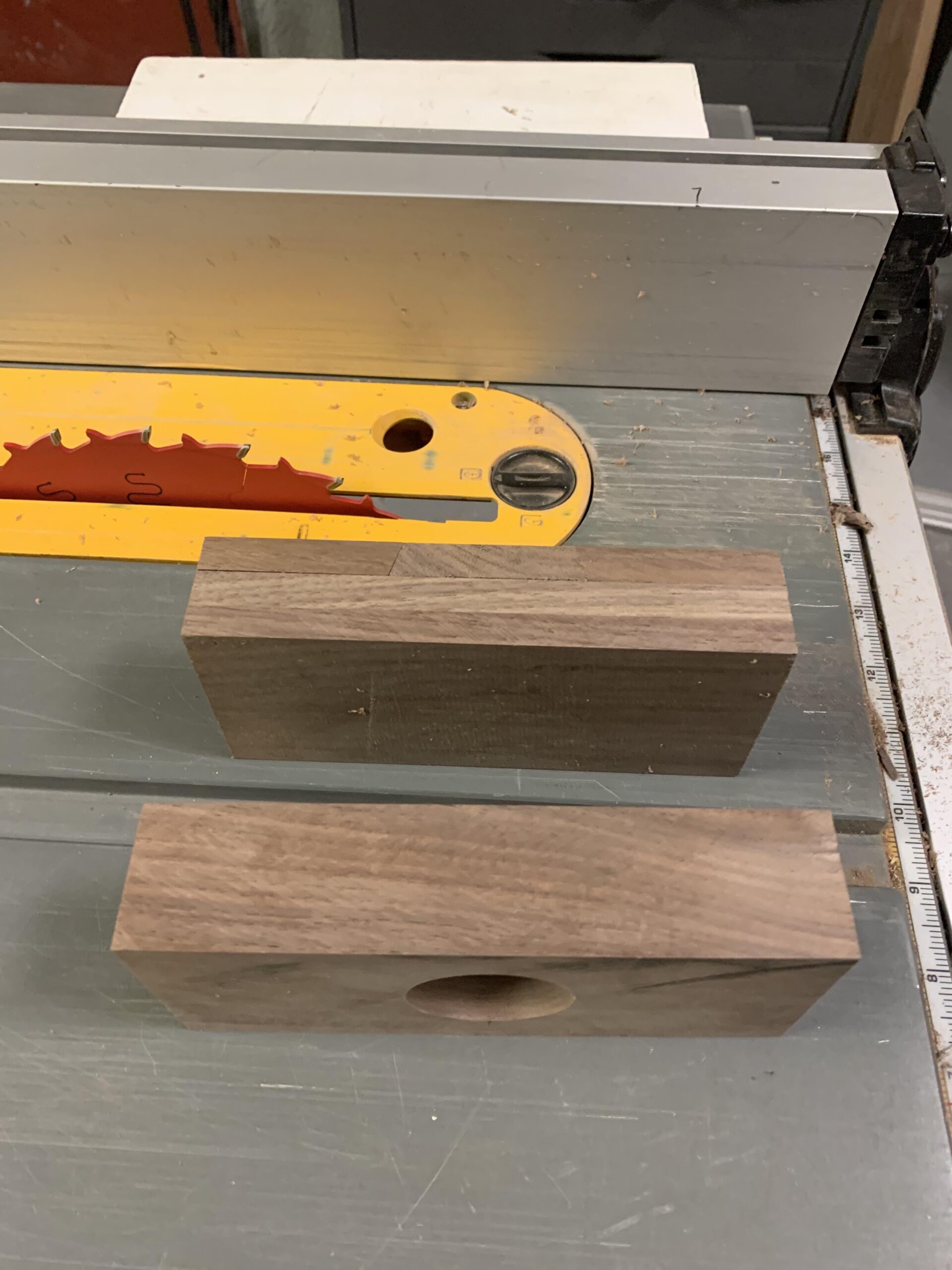
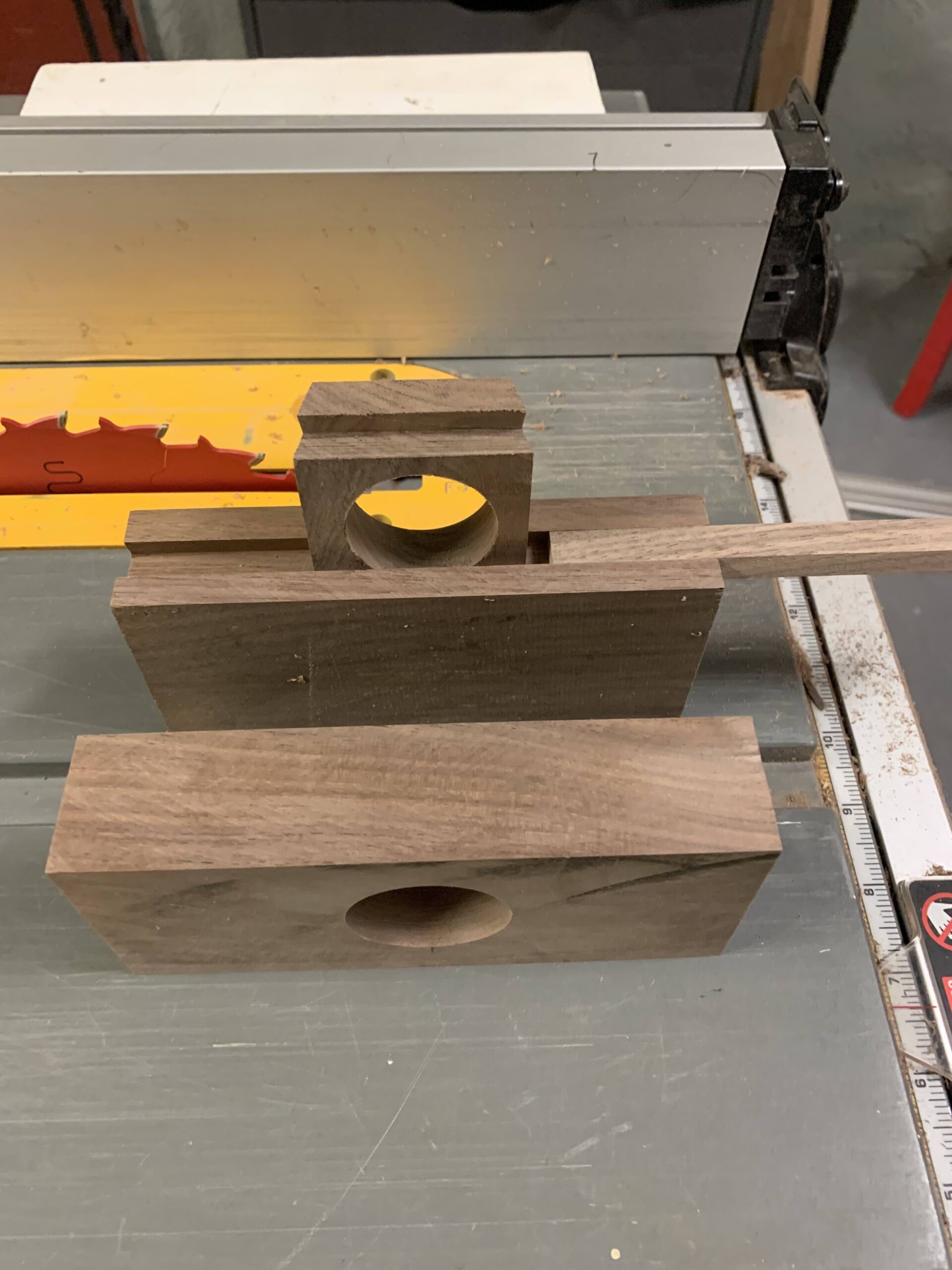
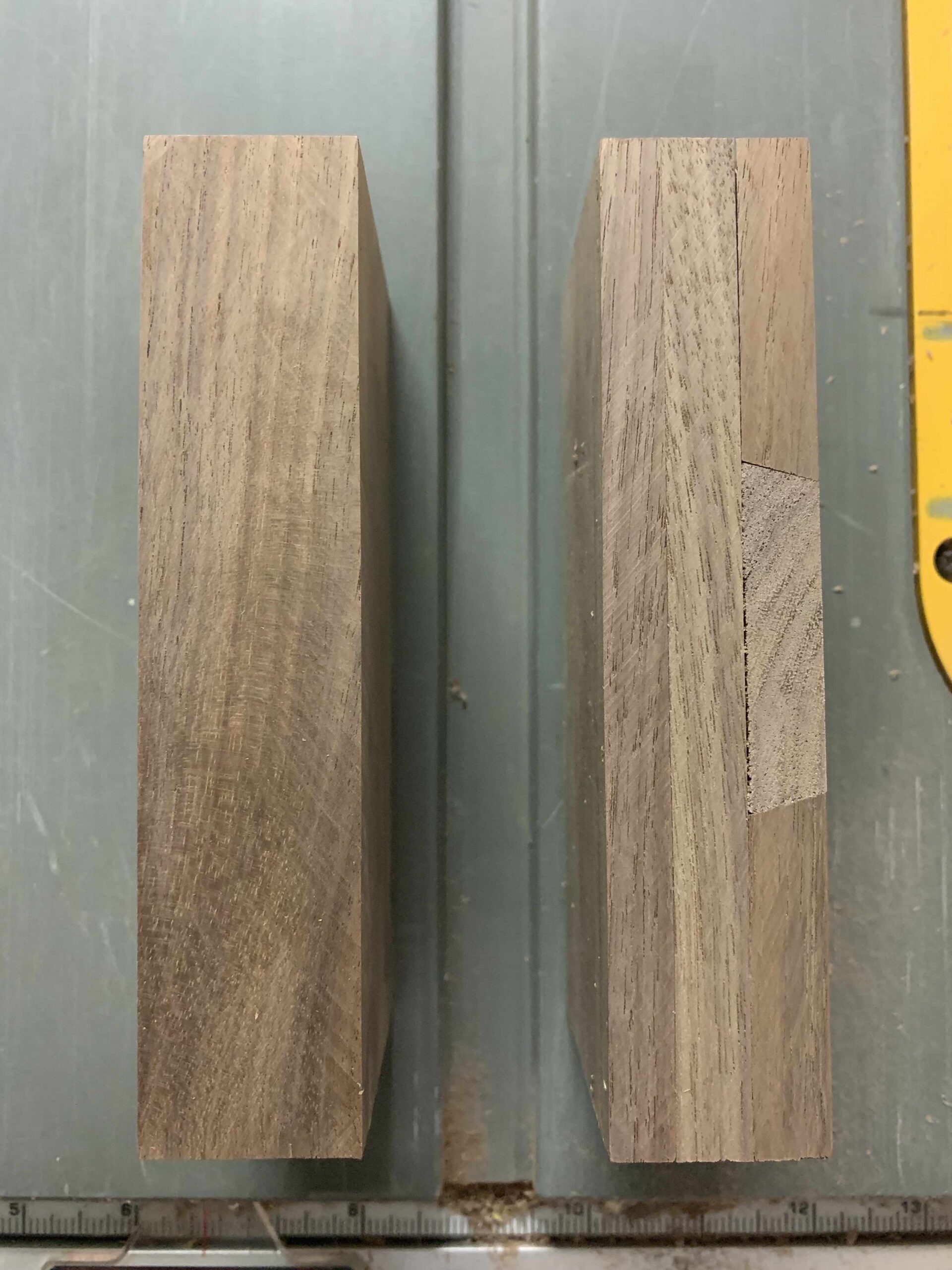
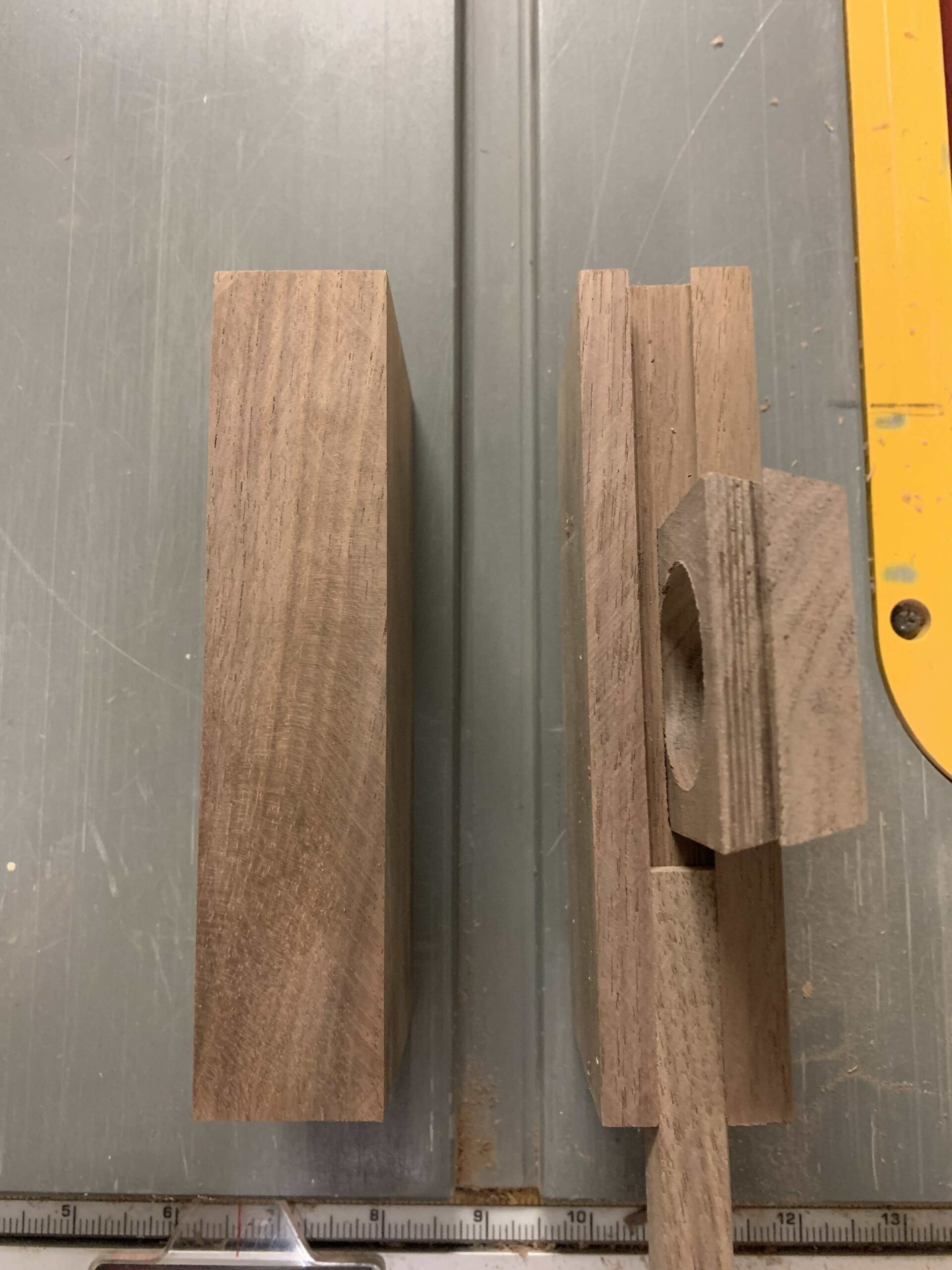
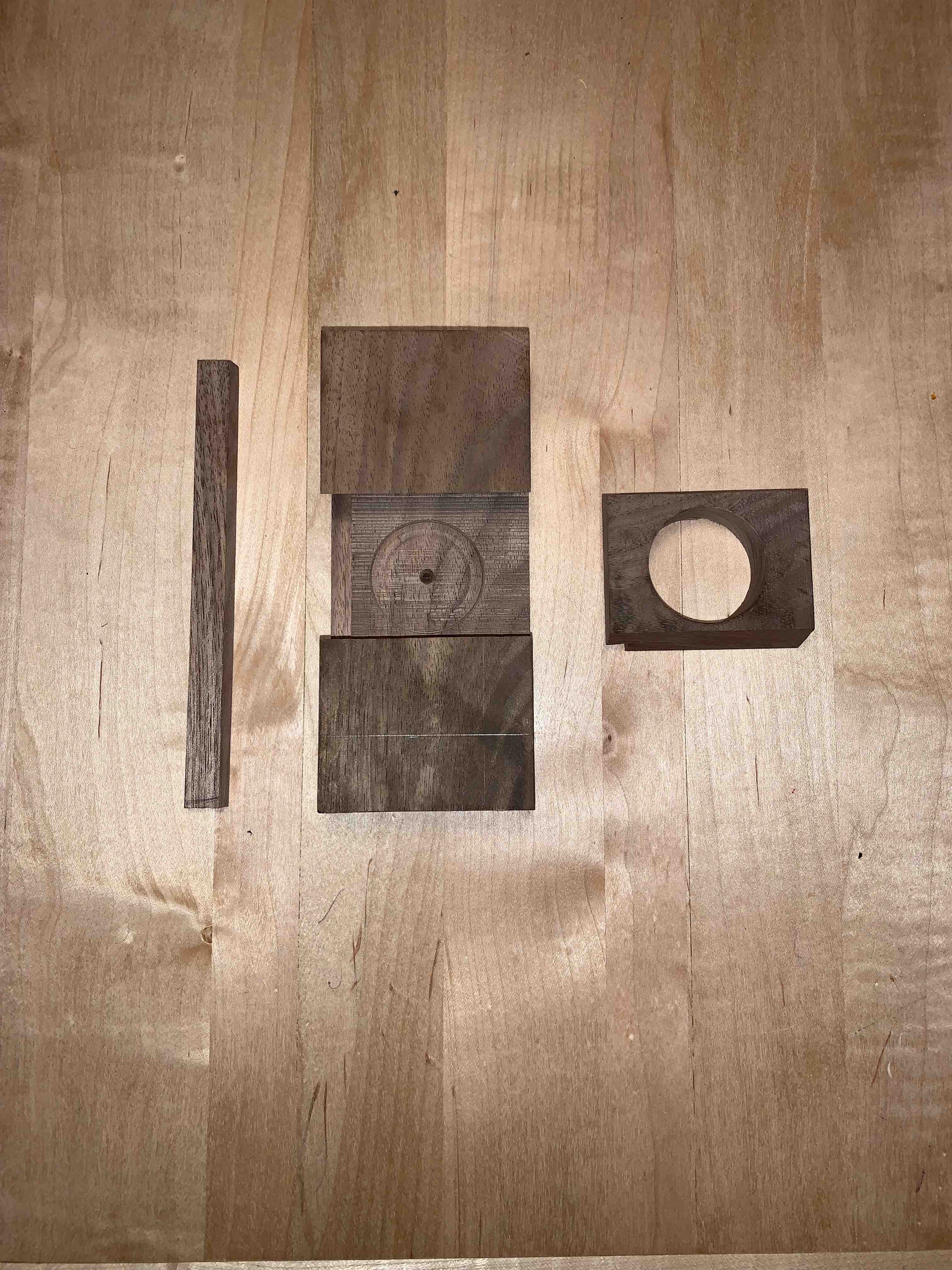
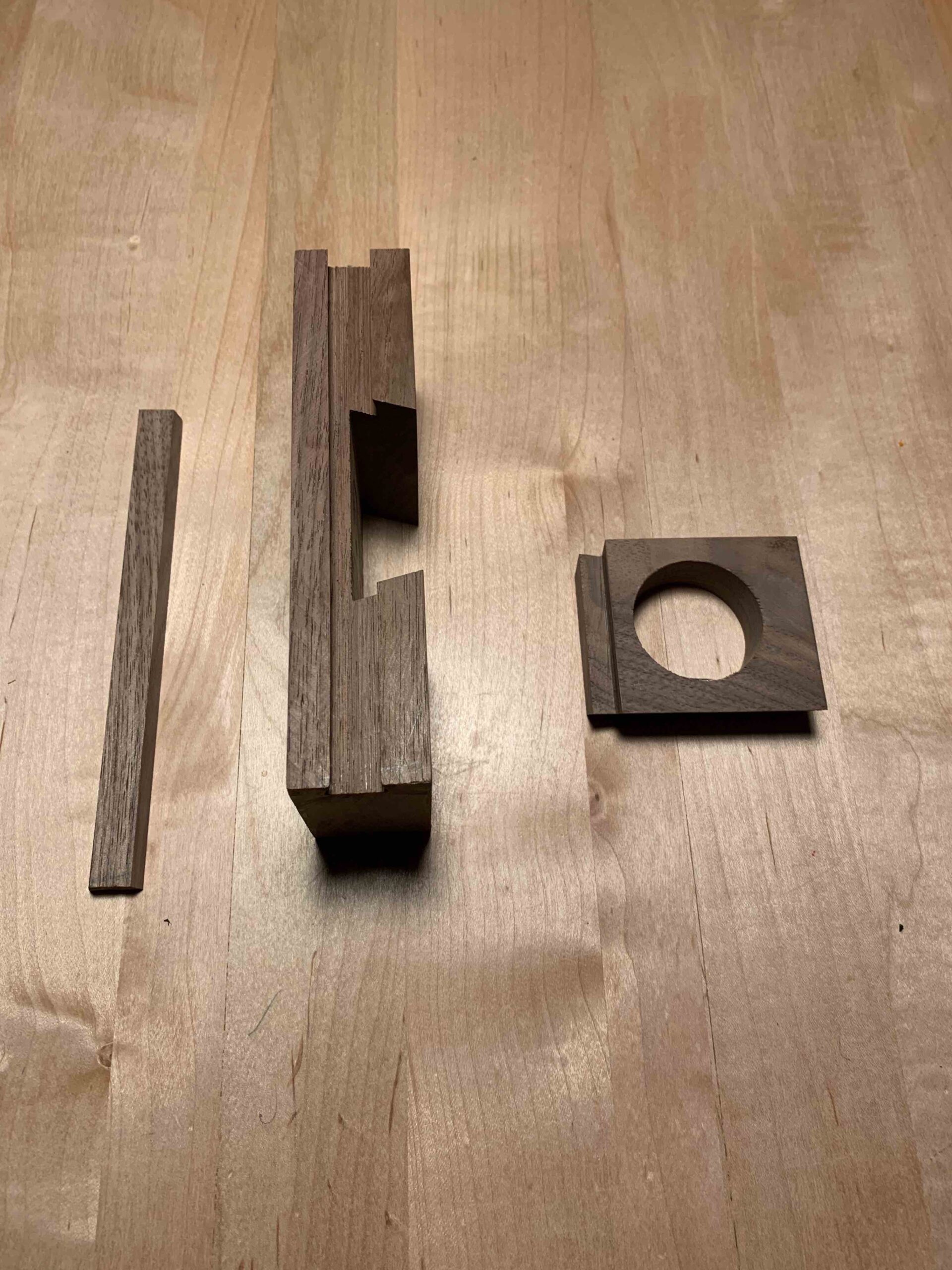
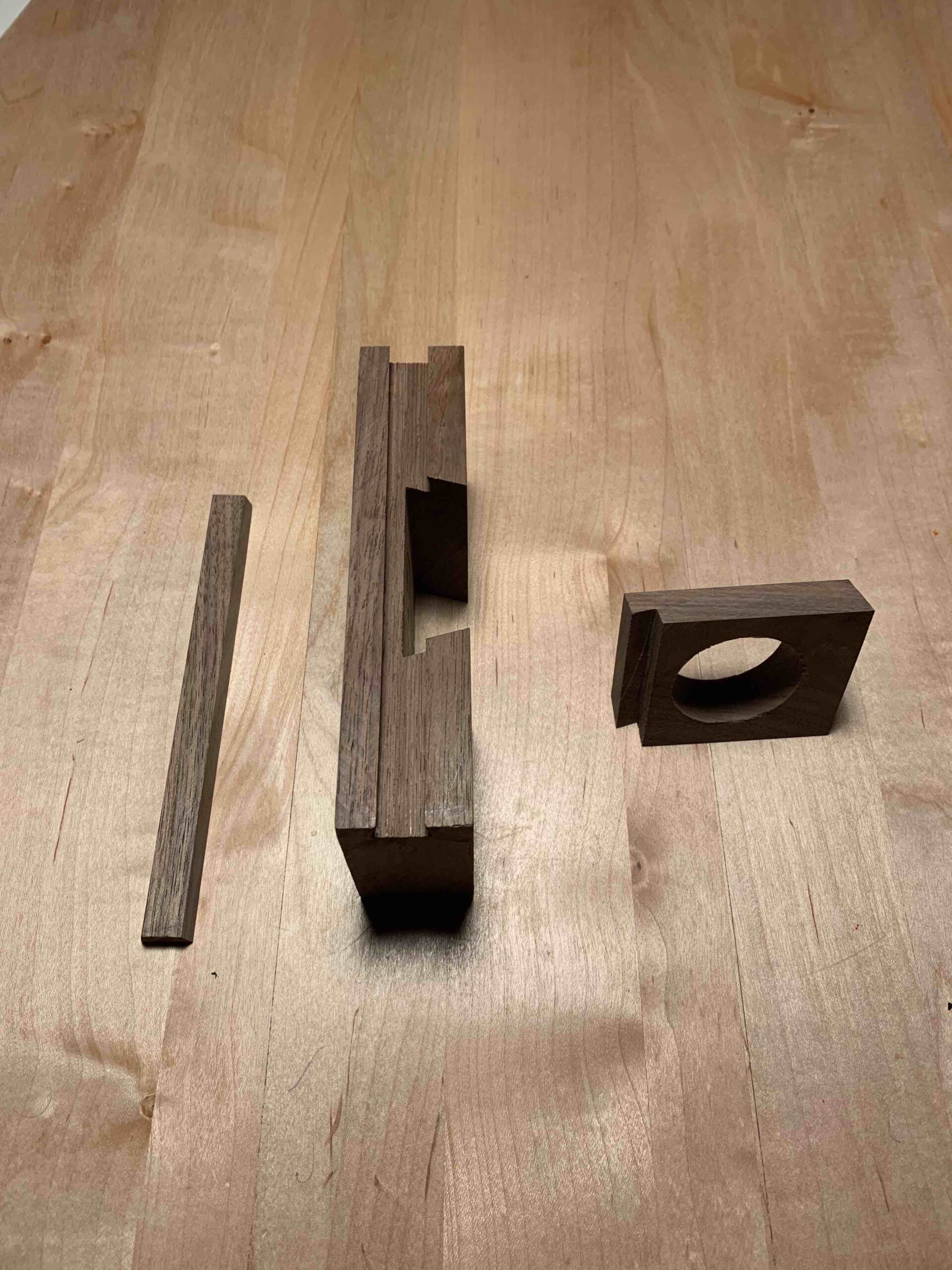
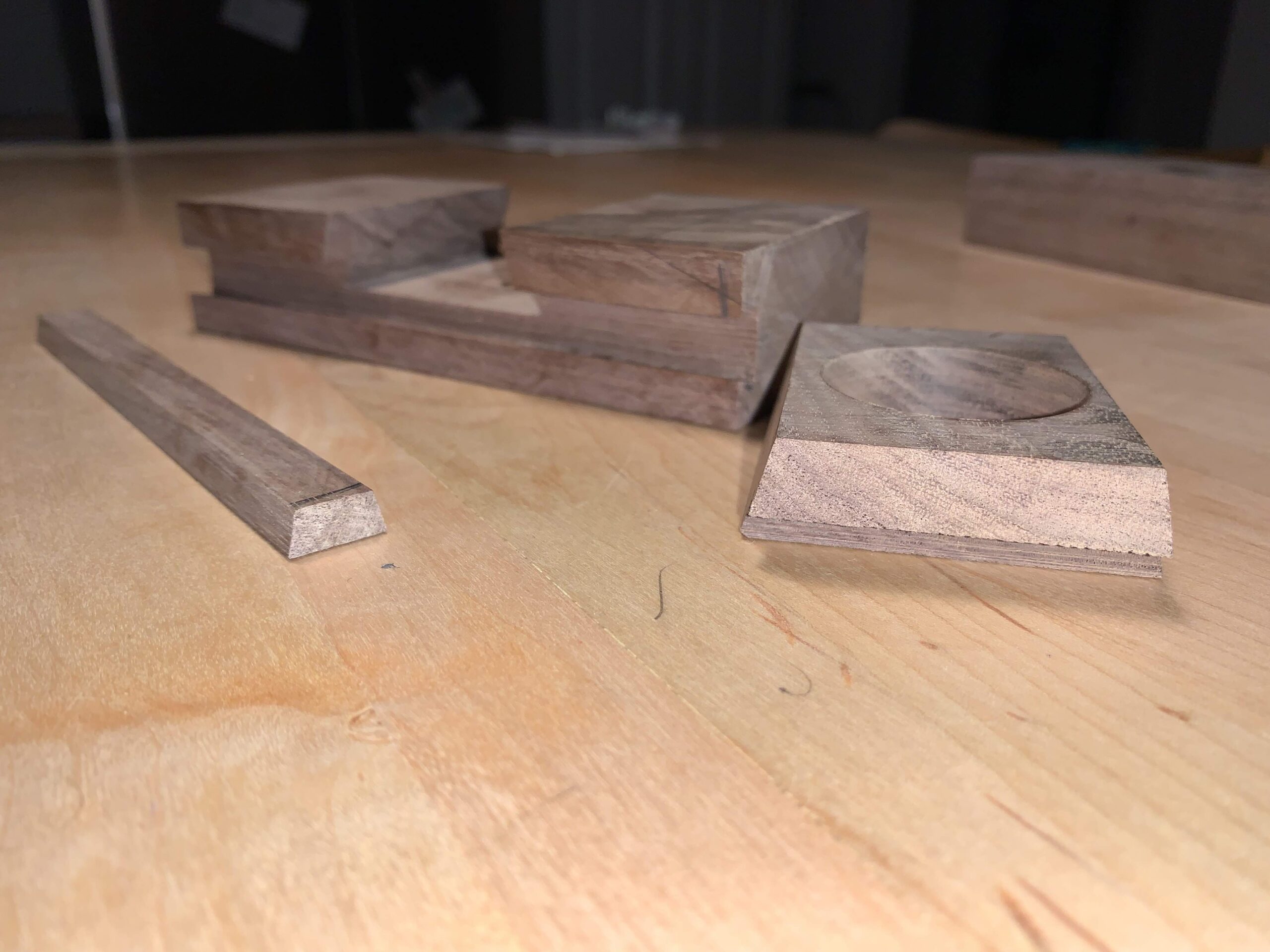
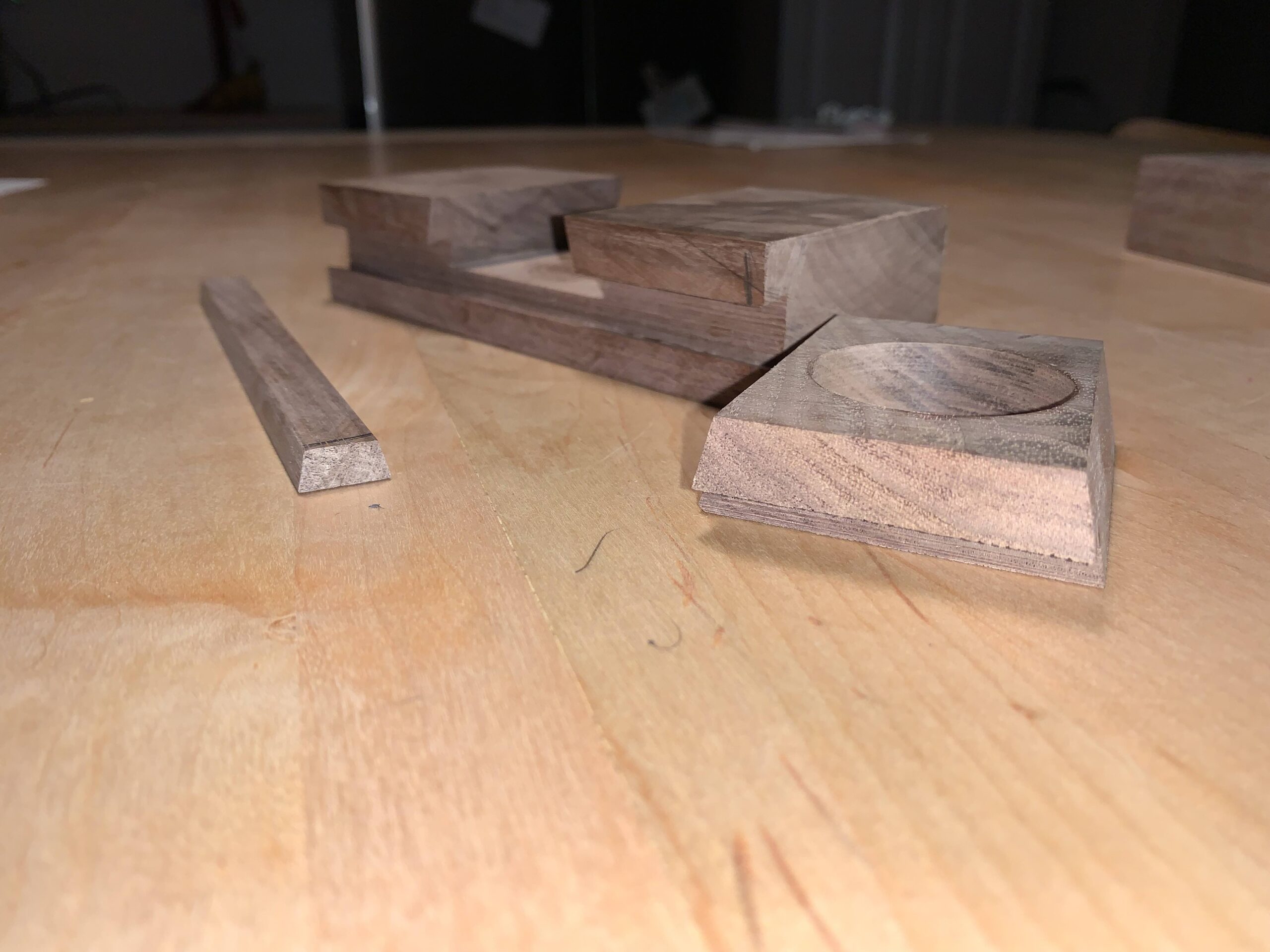
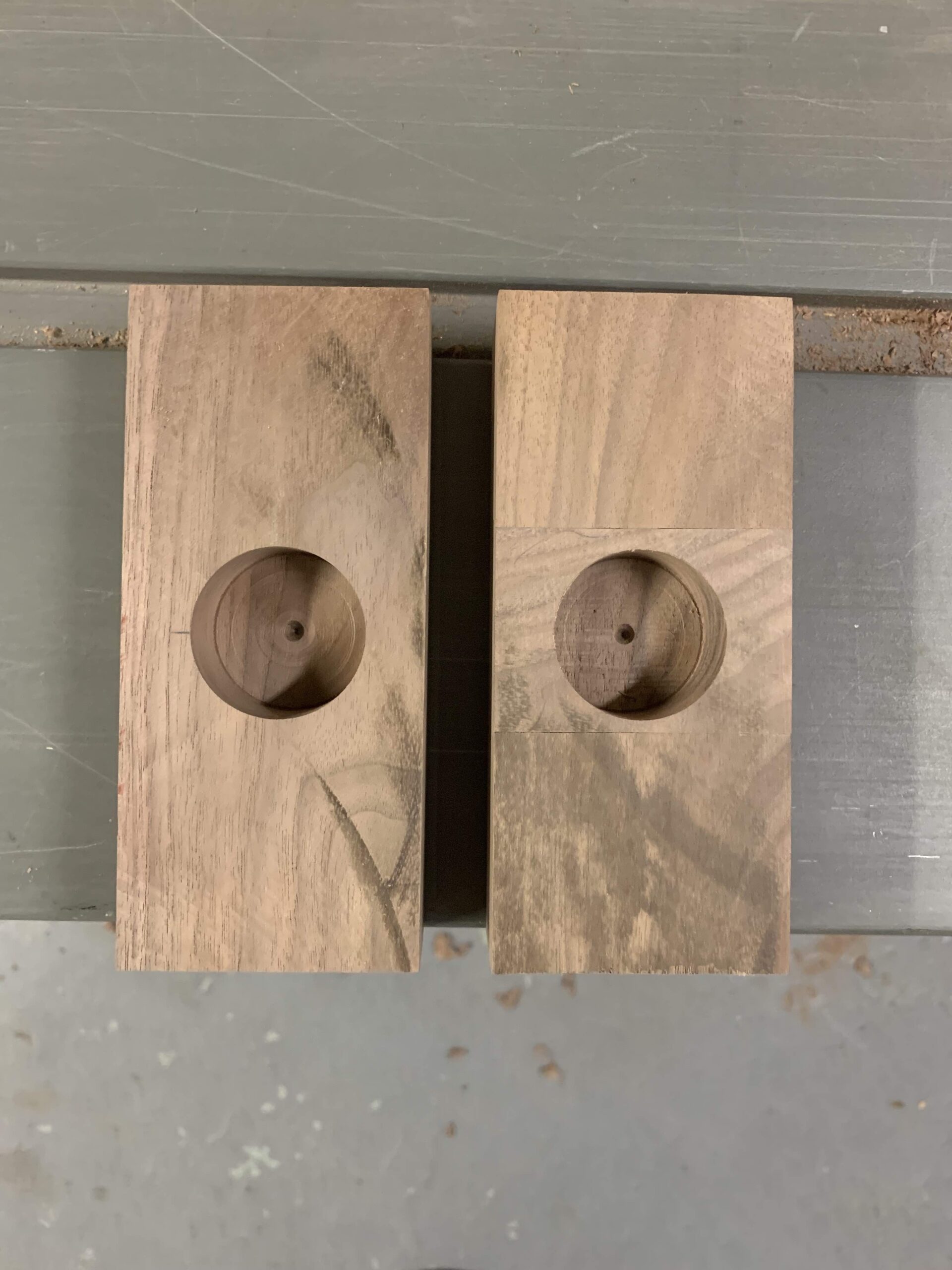
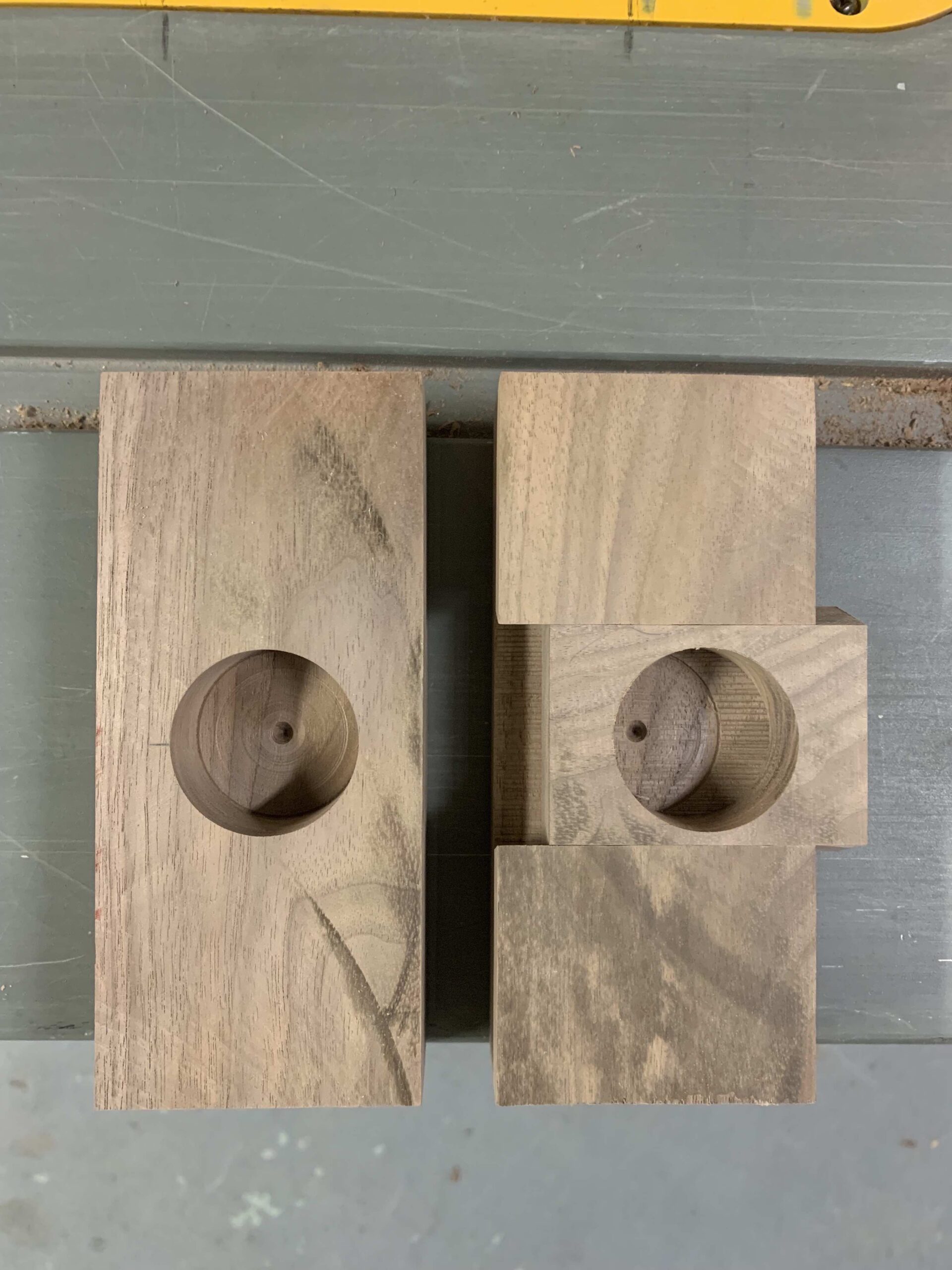
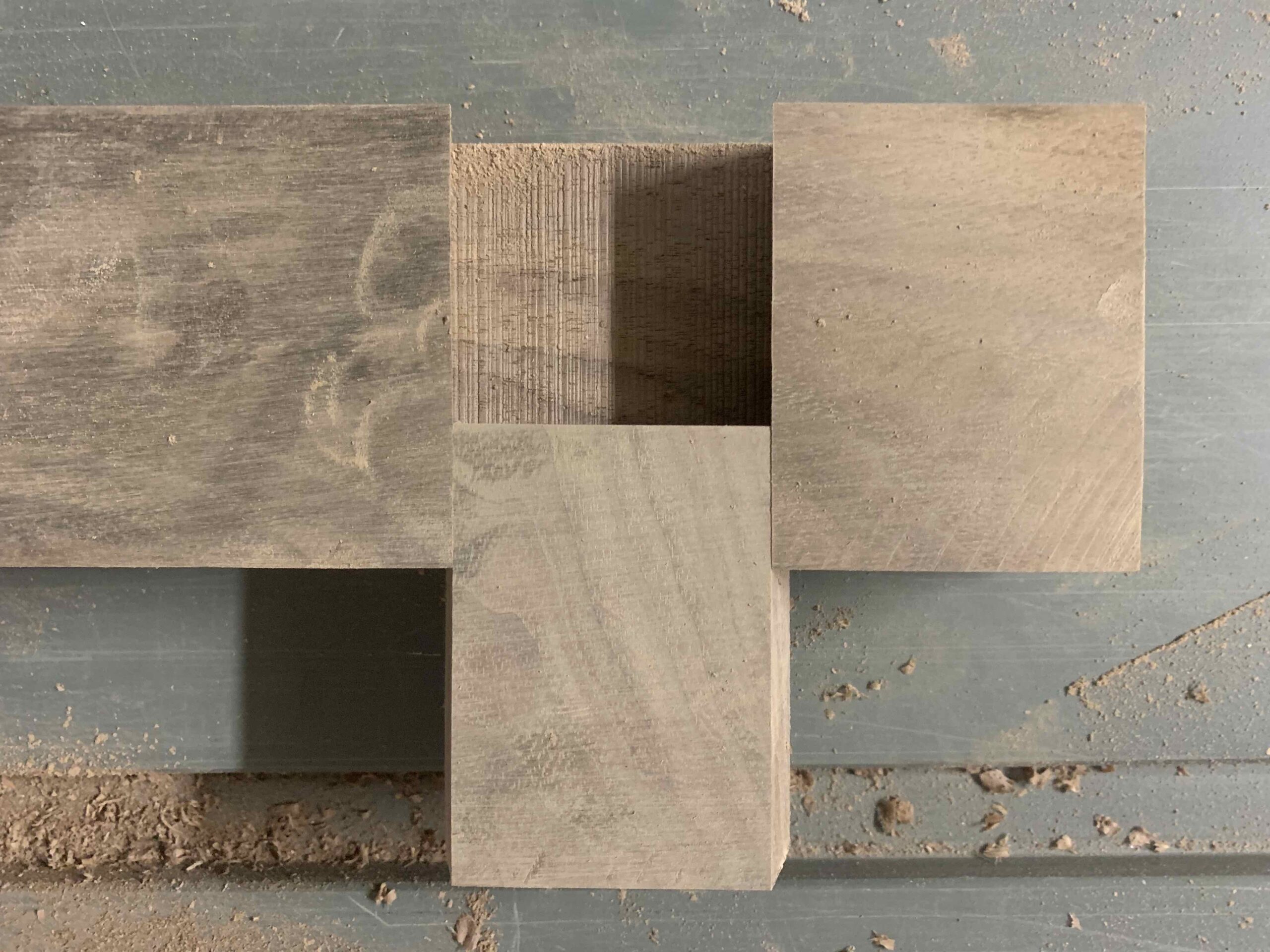
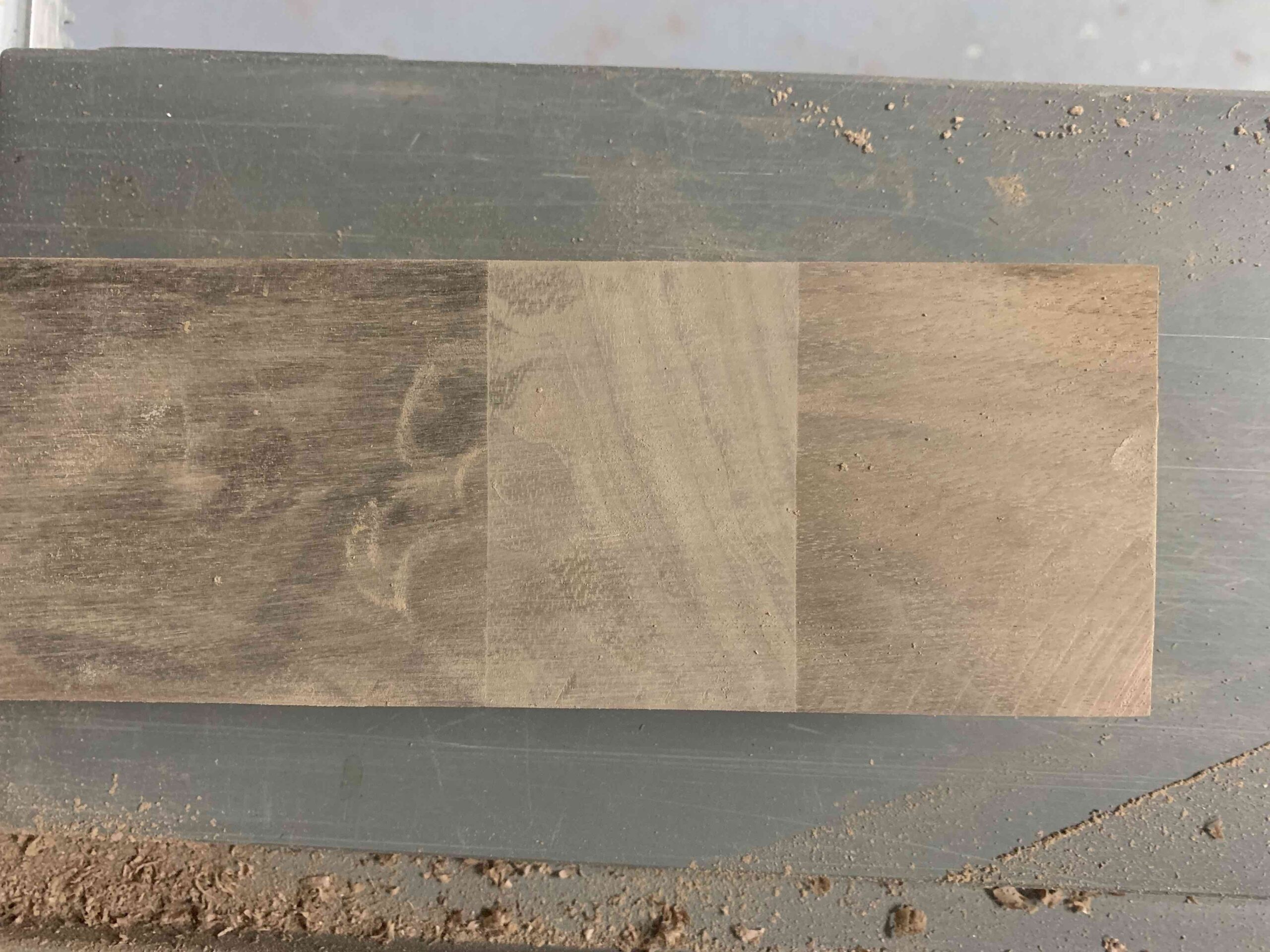
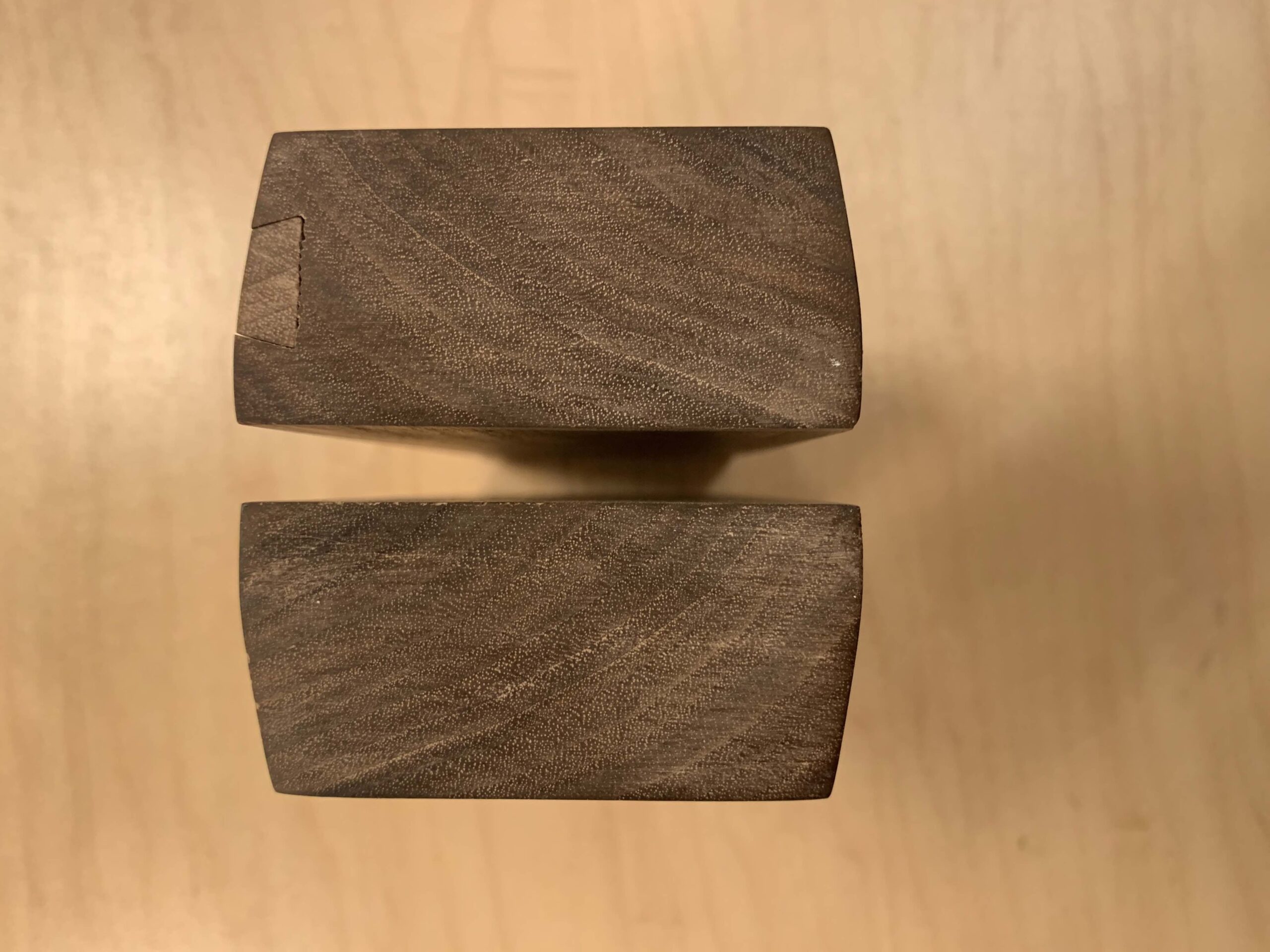

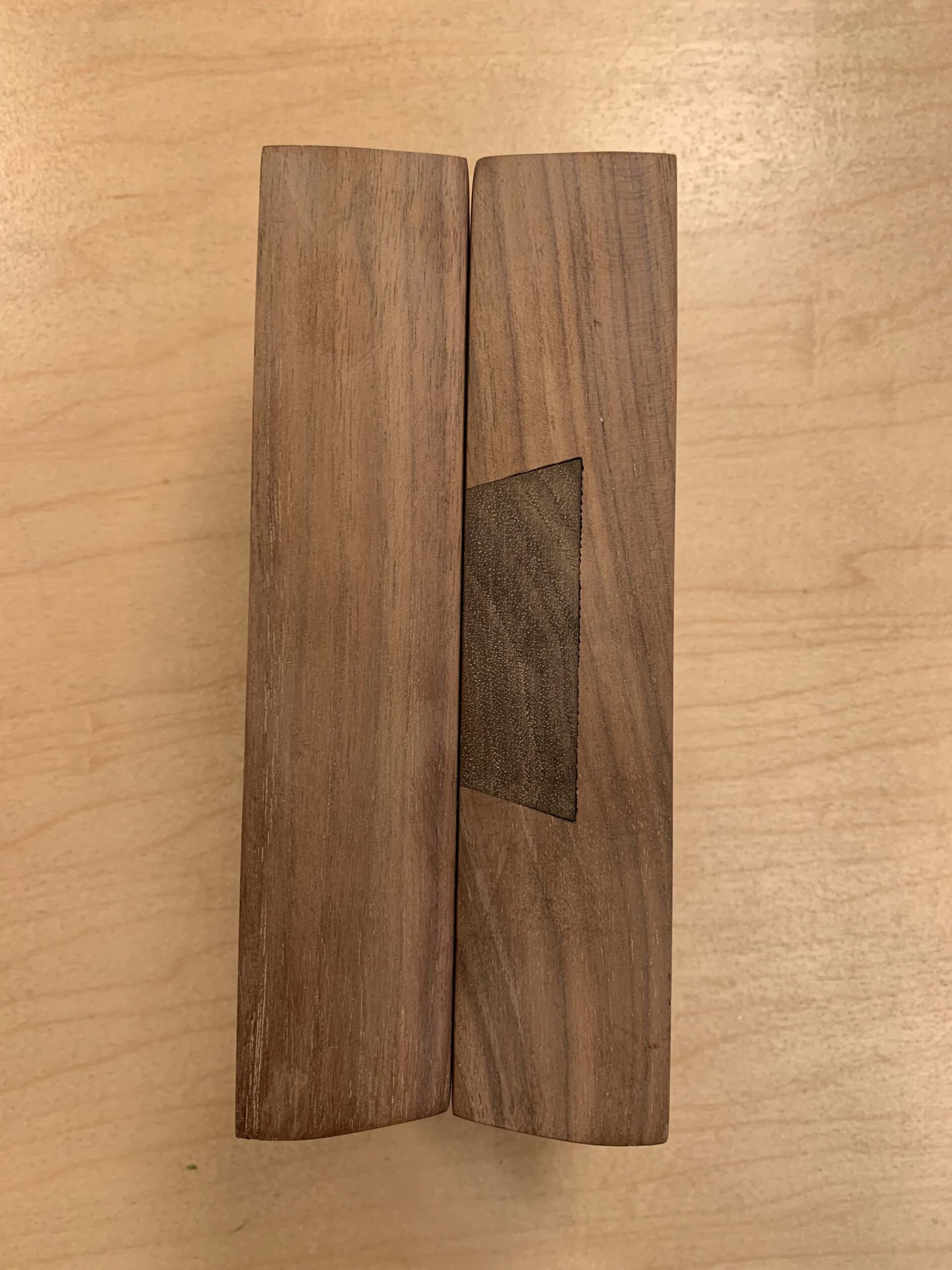
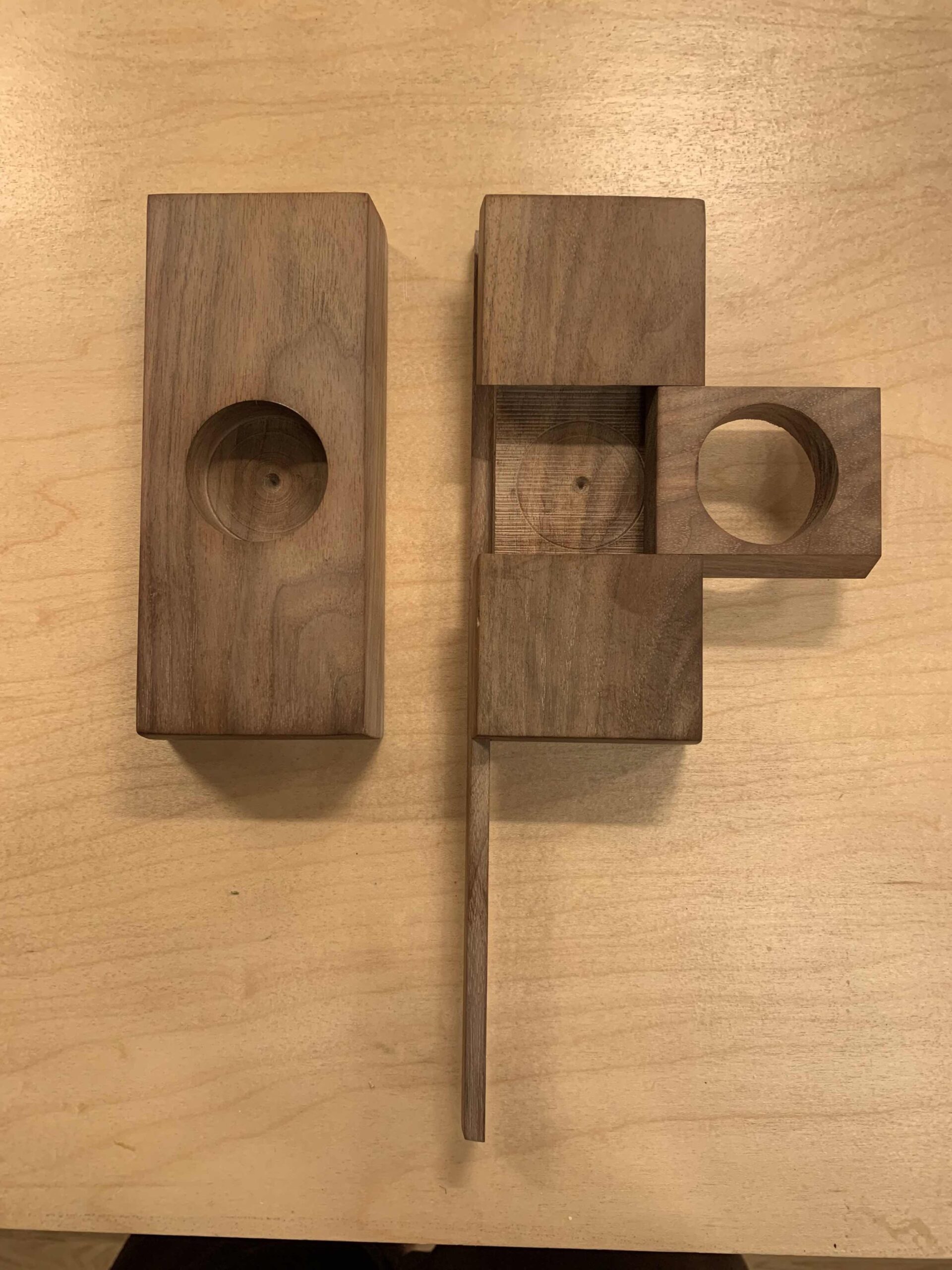
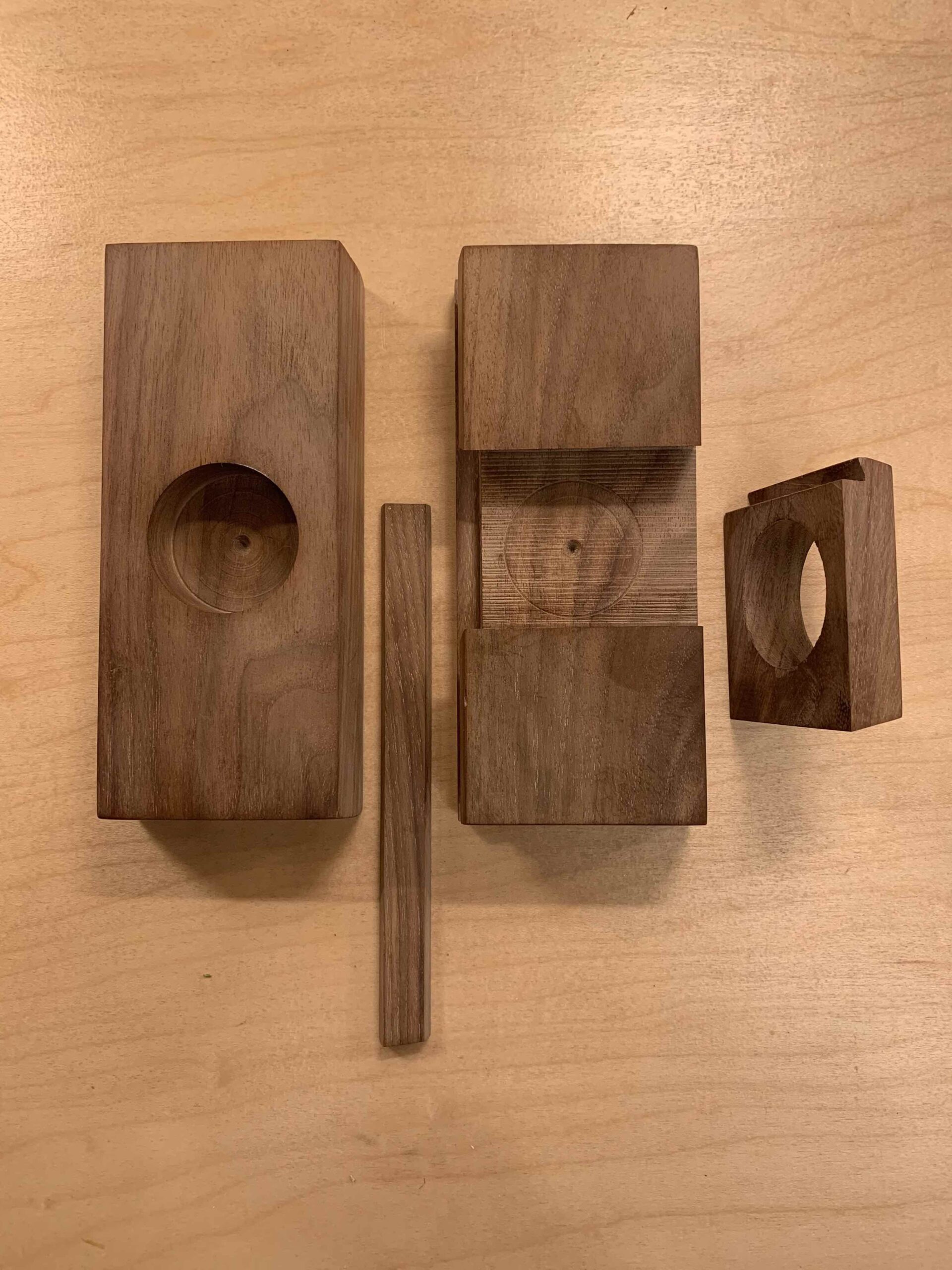
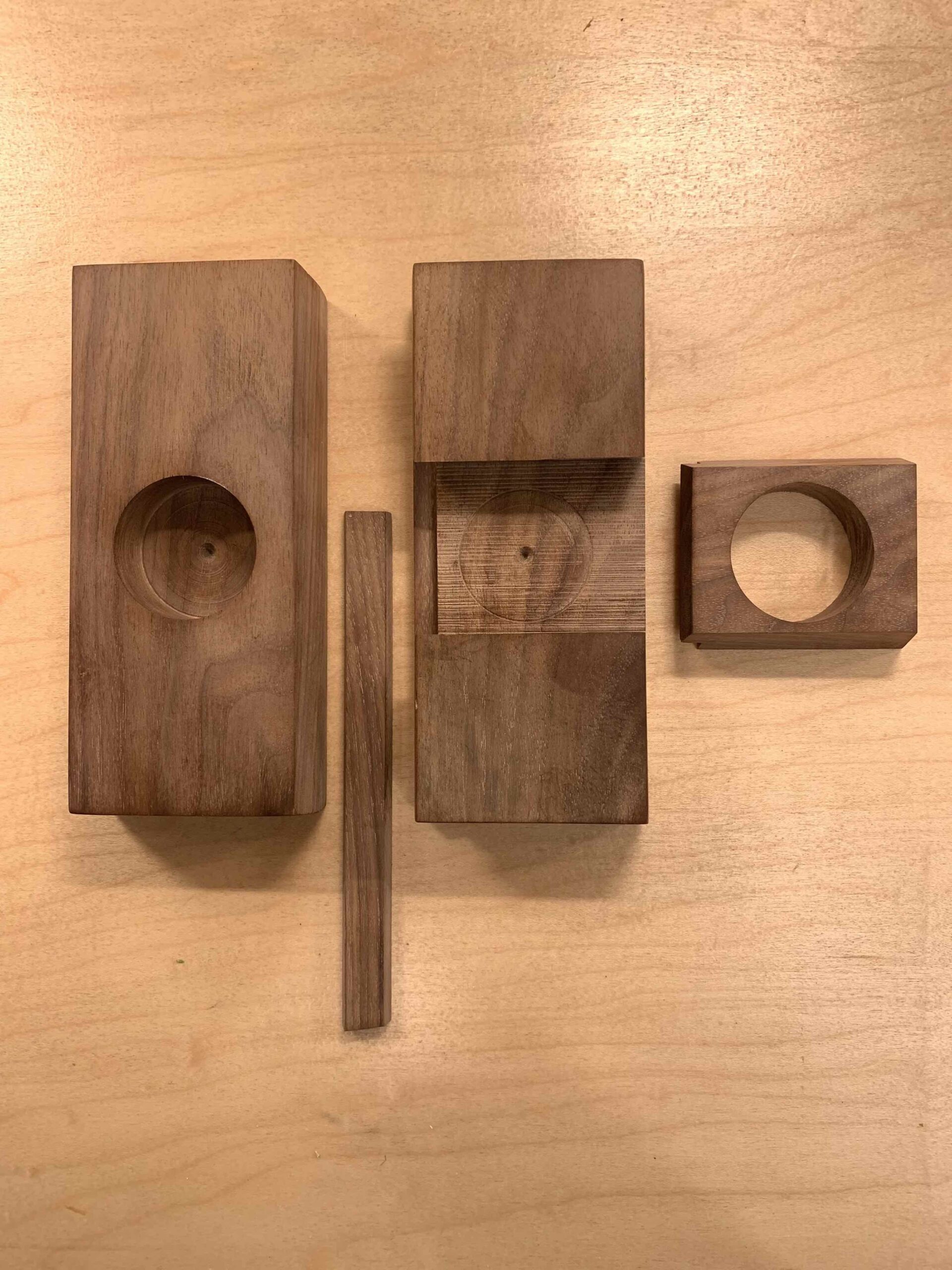
Breadboard Table
For our apartment, I wanted to make a peninsula table that would sit between the kitchen and living room. I reused the maple table top from our previous kitchen island, and after cutting it down and rejoining the pieces, I made it a little larger by surrounding it with some 5/4″ maple from the local lumber yard. I refashioned the edges of the original top so that tenons protrude from a tongue that runs along the edge. The edge pieces that run perpendicular to the main table have a groove cut into the edges and mortises cut at strategic points in the groove. The edges are fastened to the table top using draw bore pegs, that draw the pieces together tight when the pegs are hammered into the holes. The final product is pretty stable and uses no glue.
- Maple top
- Maple sides
- Pegs made of a found mahogany dowel
- Osmo polymerized wax finish
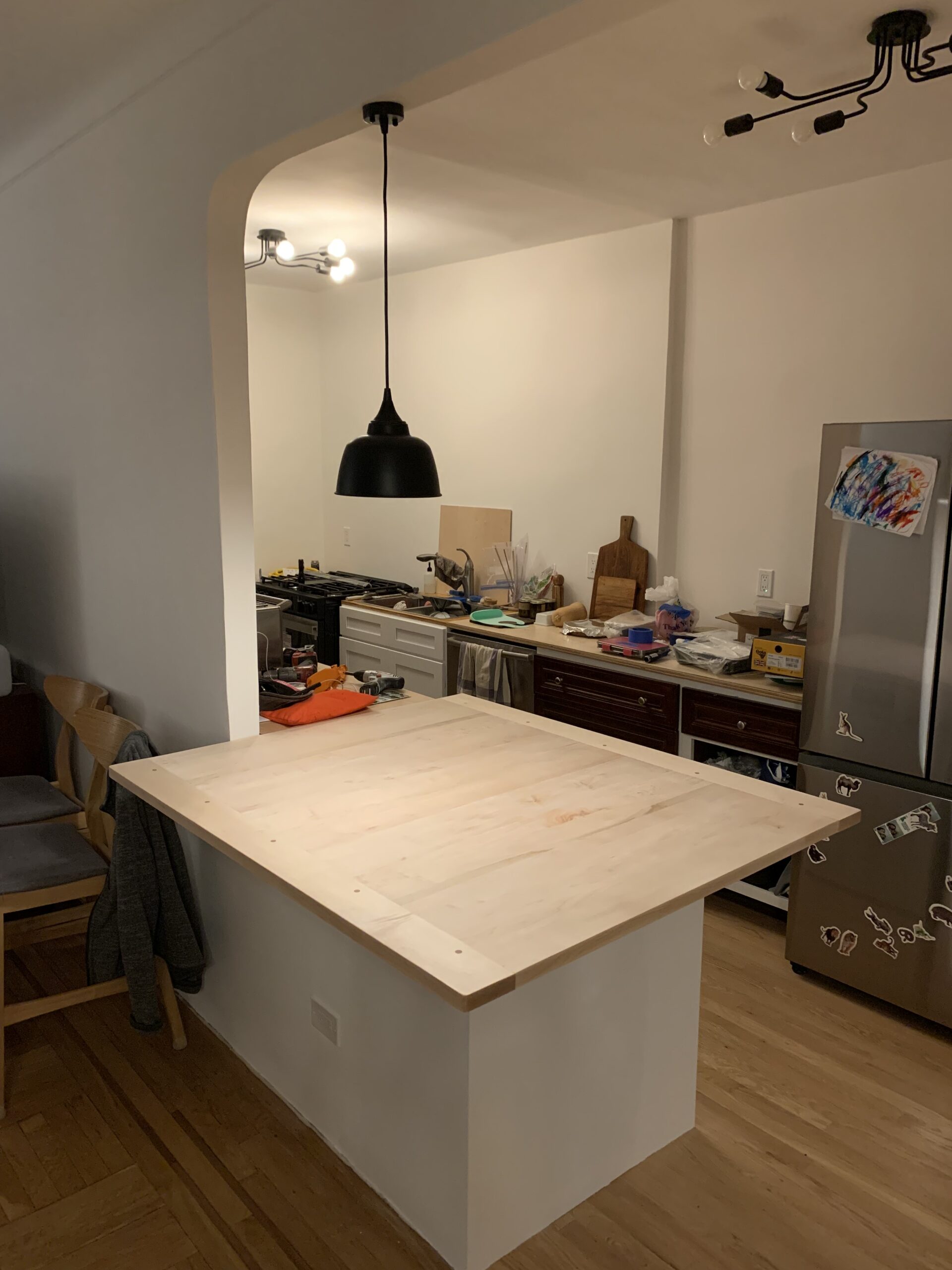
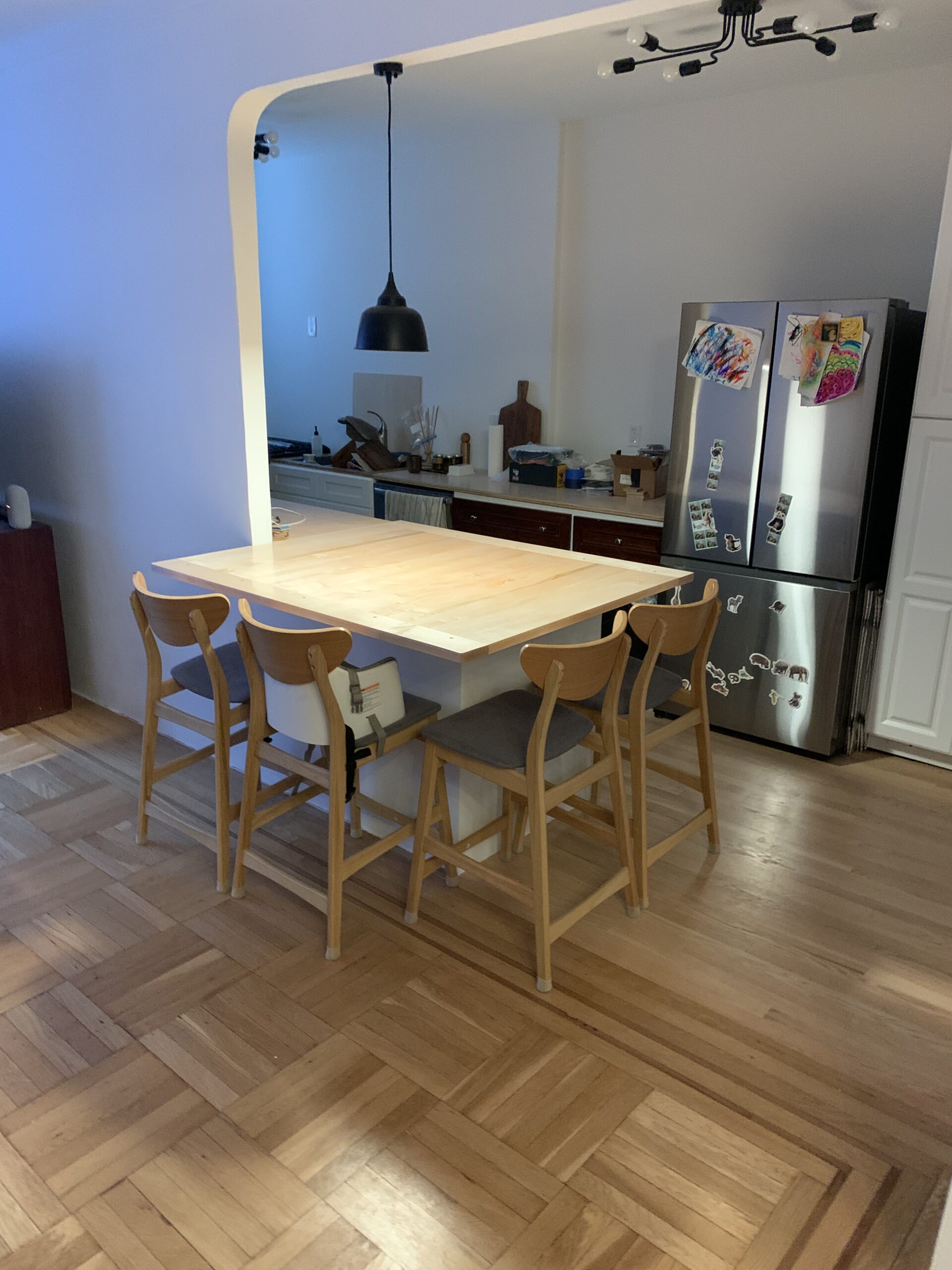
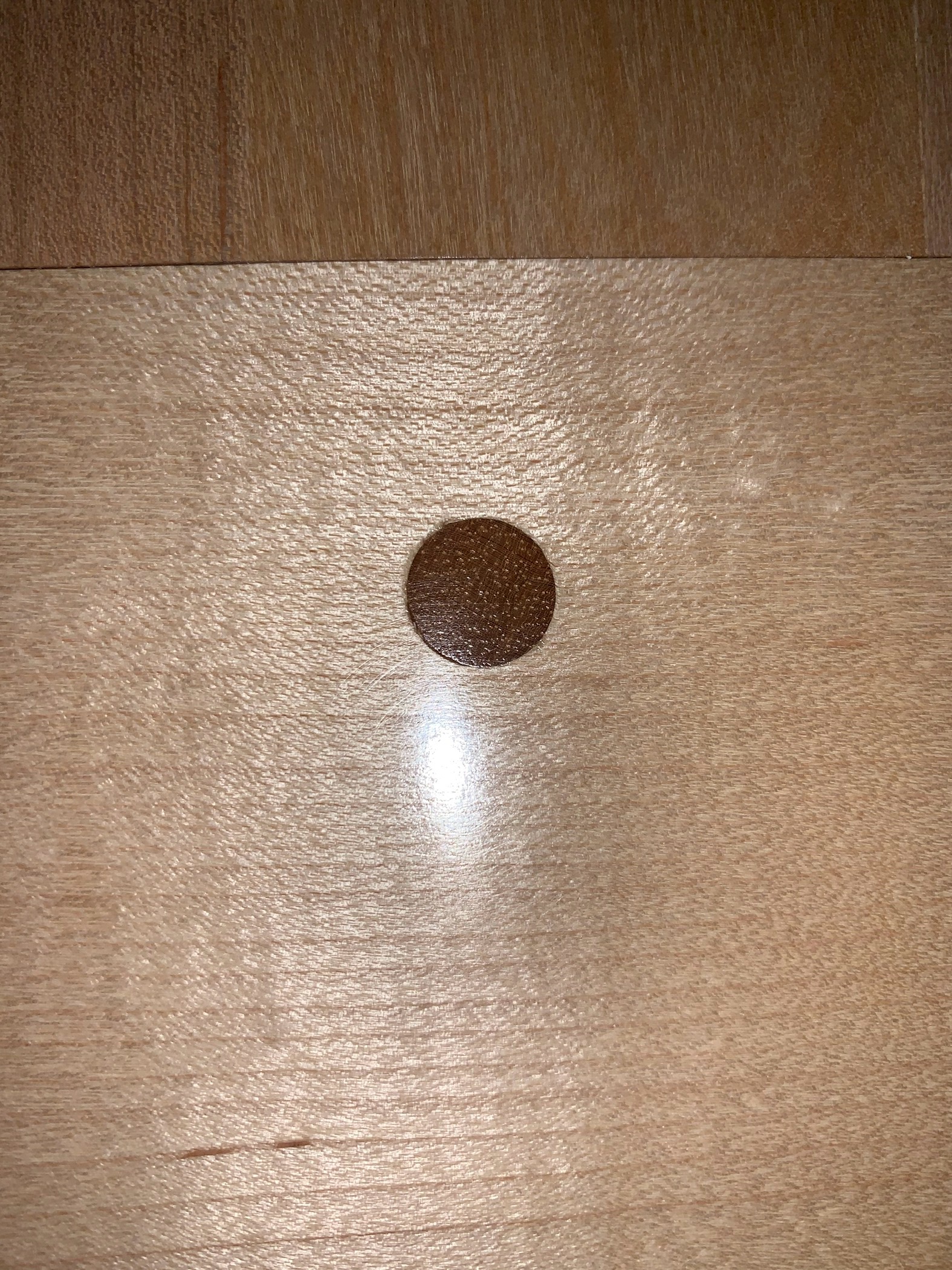
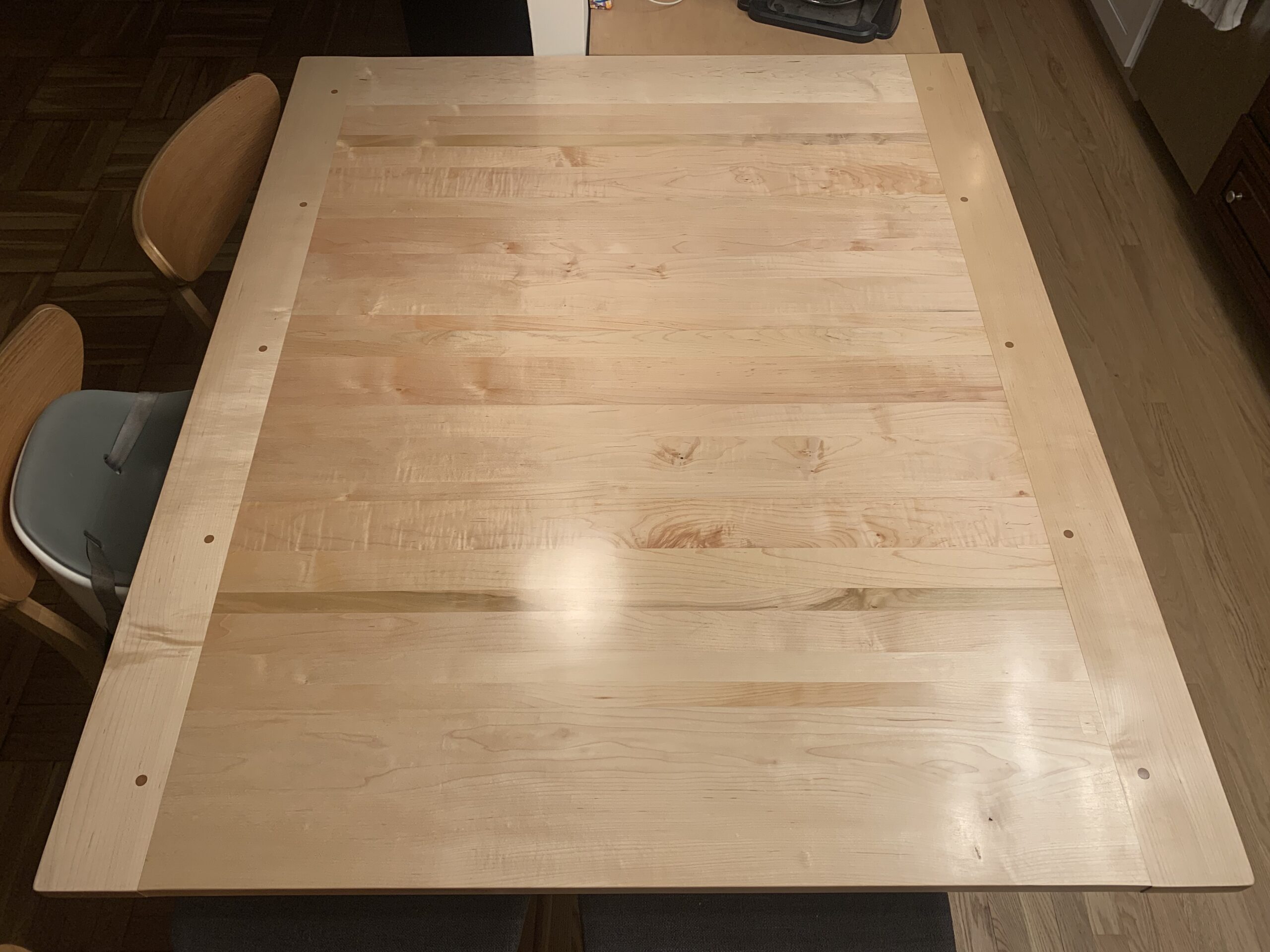
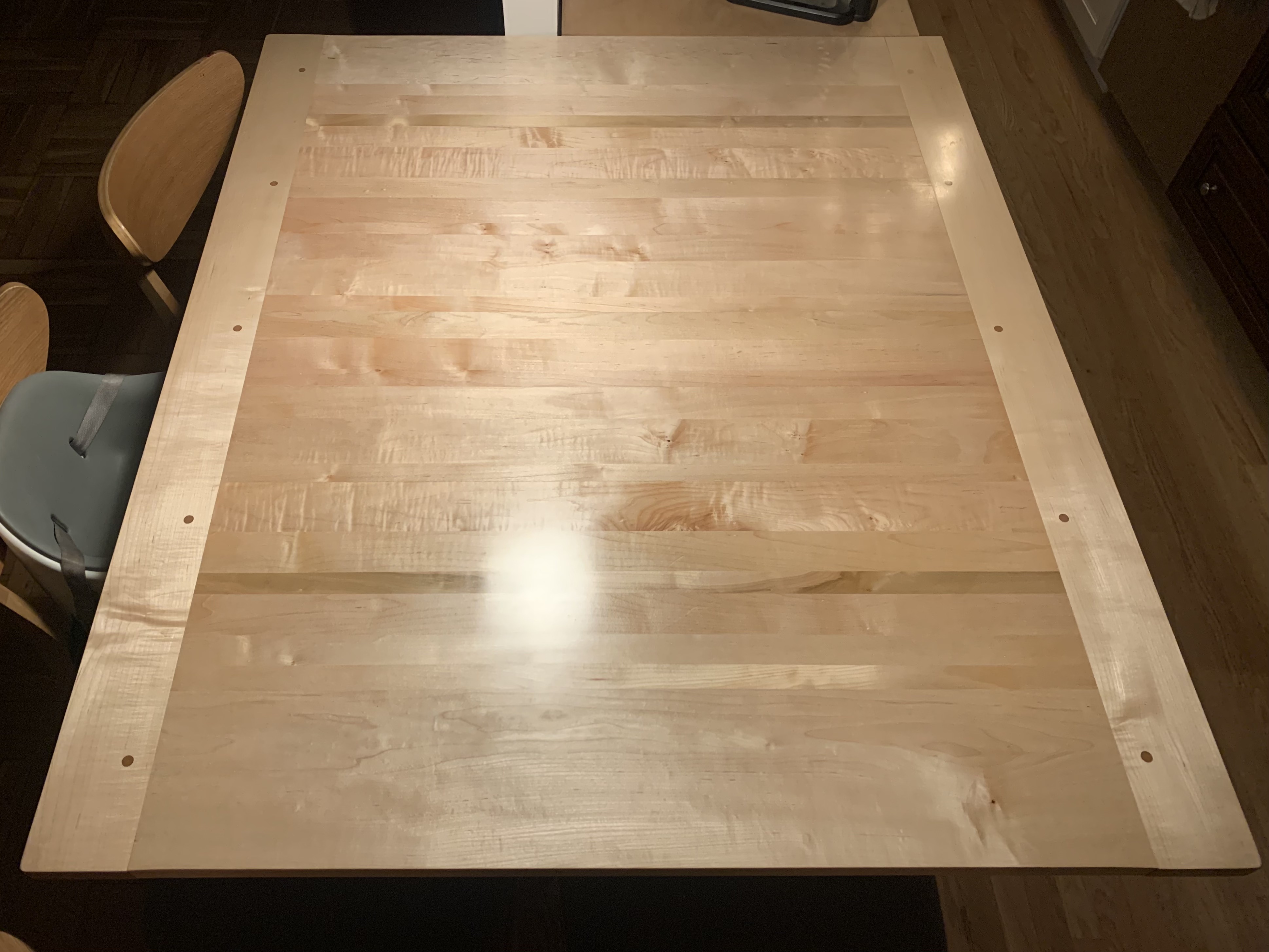
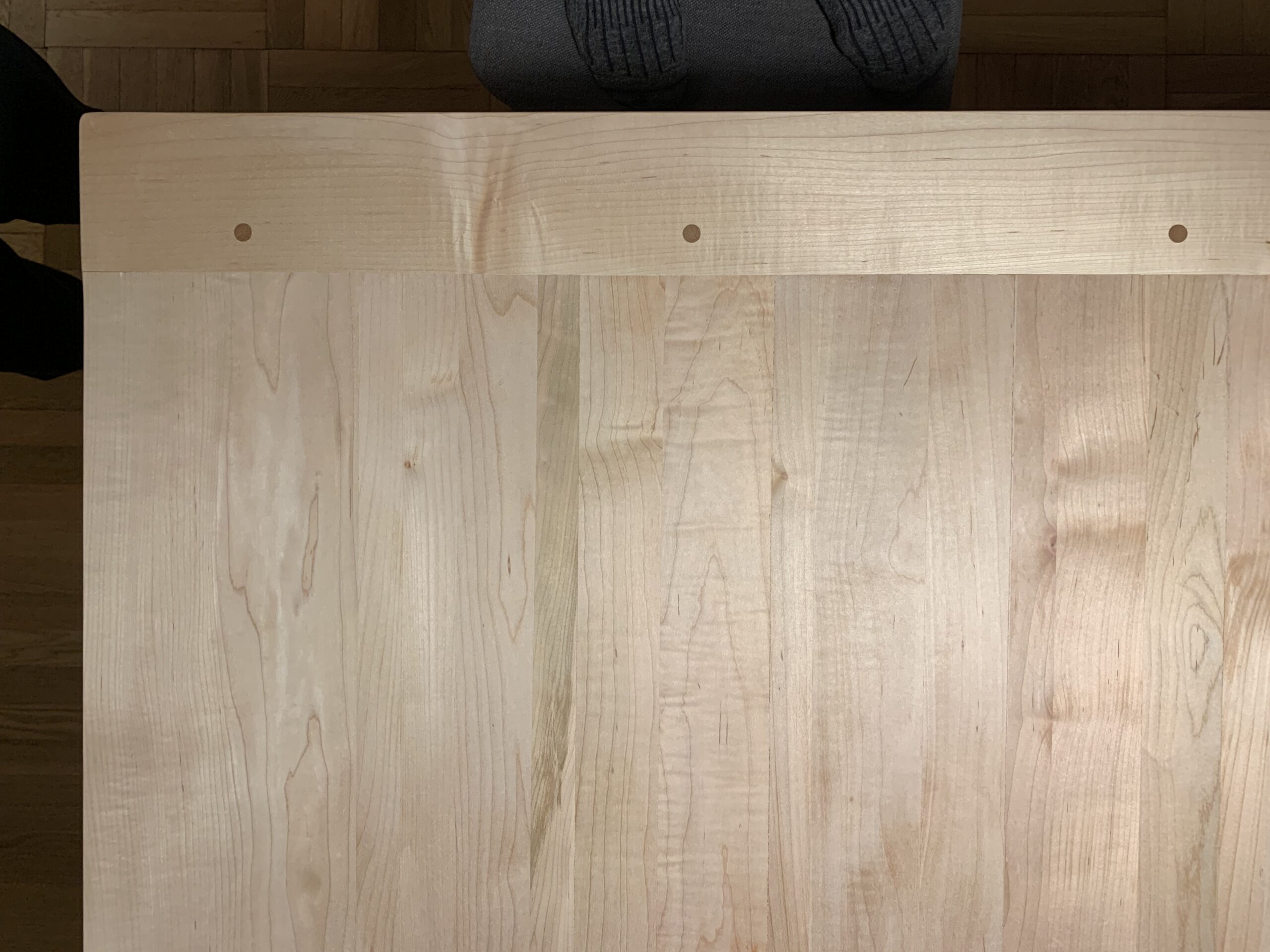
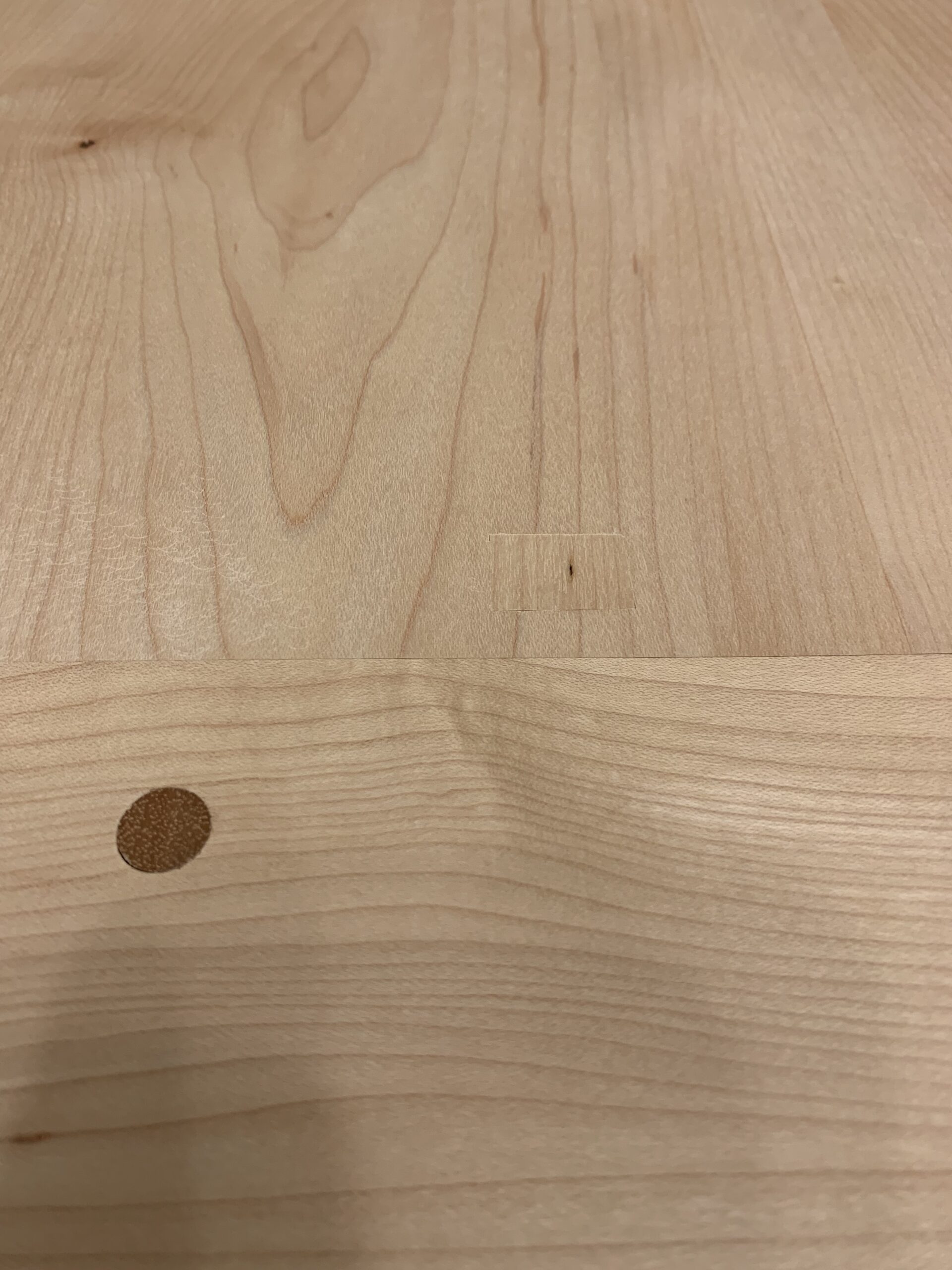
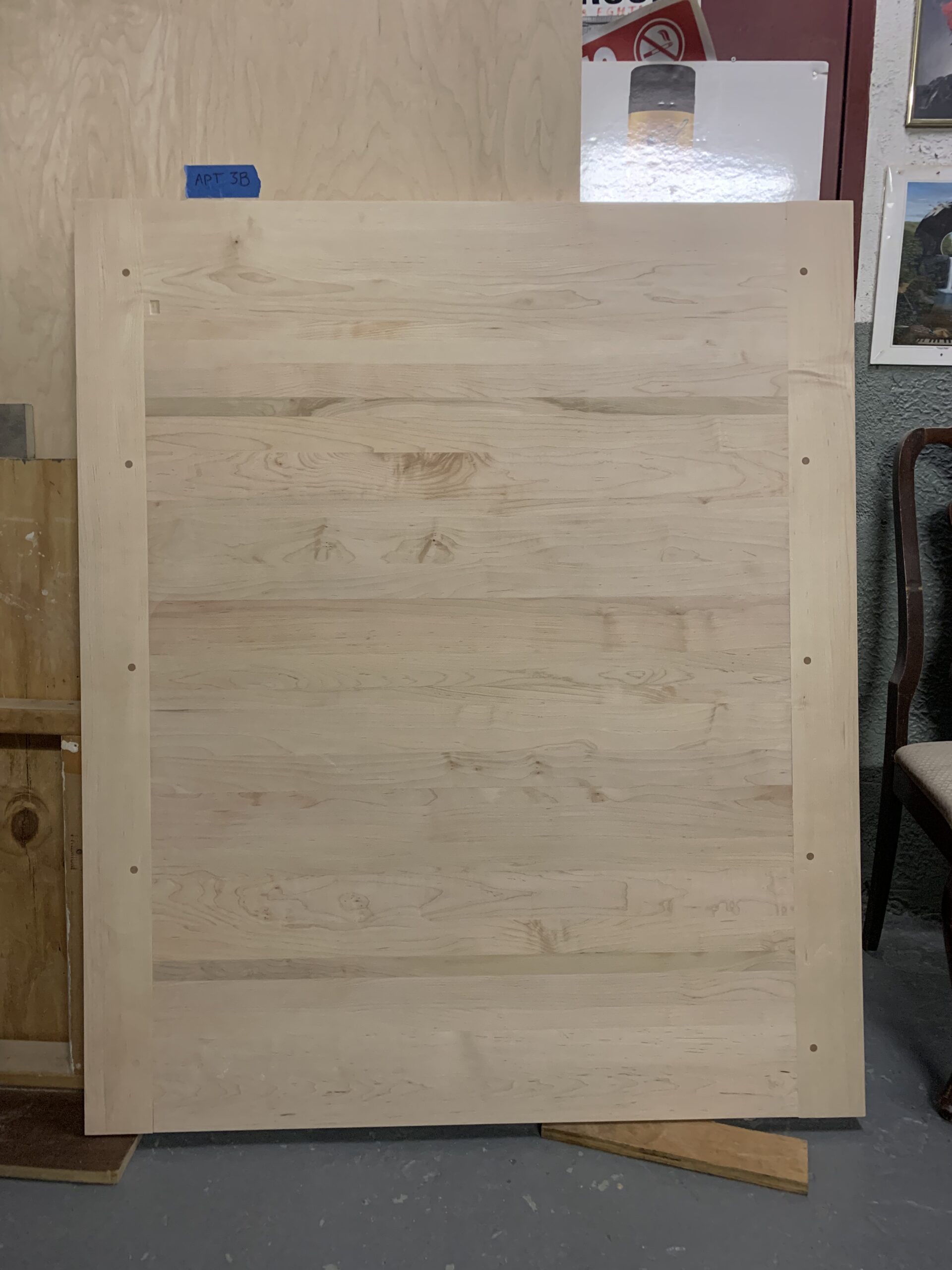
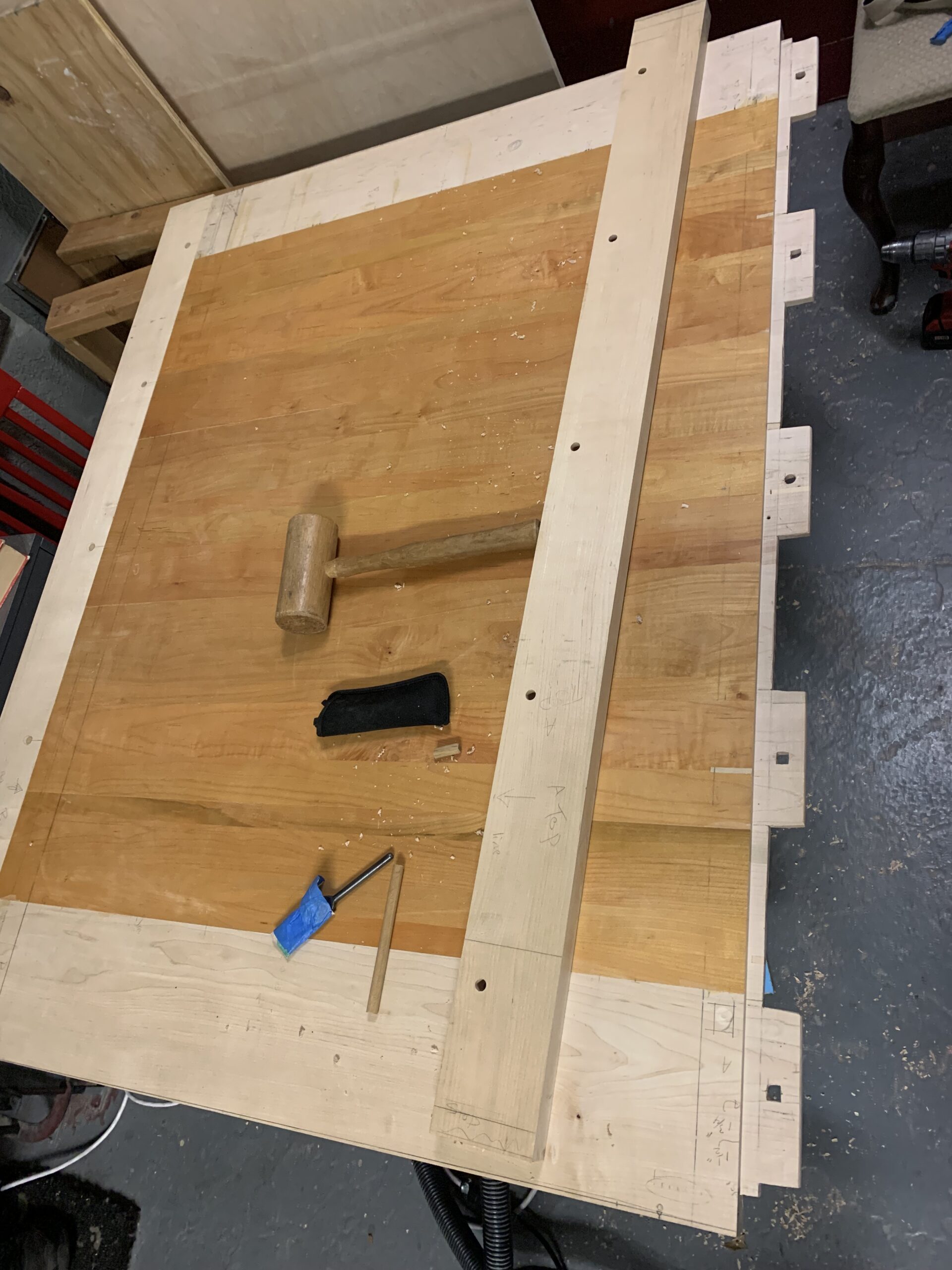
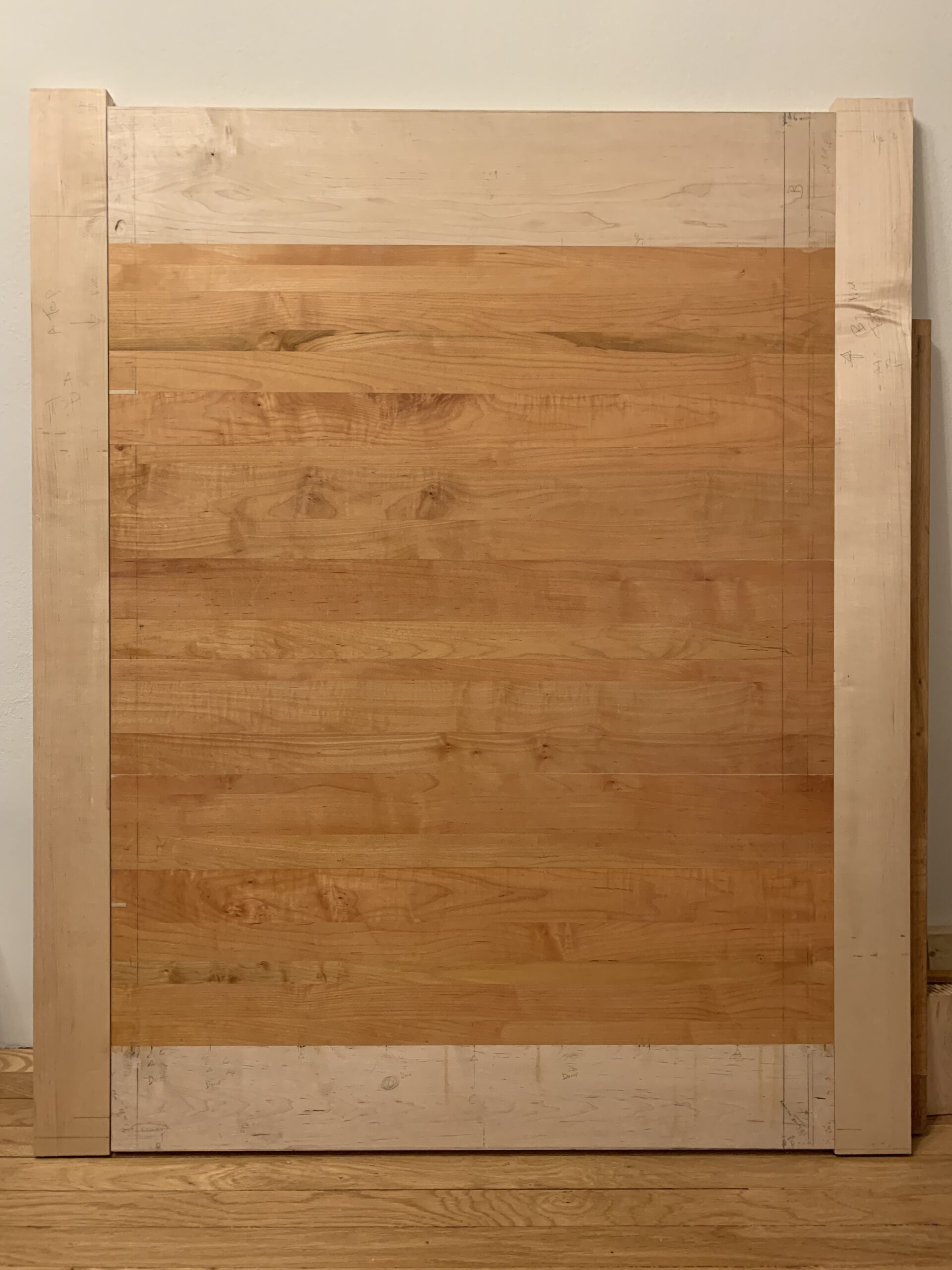
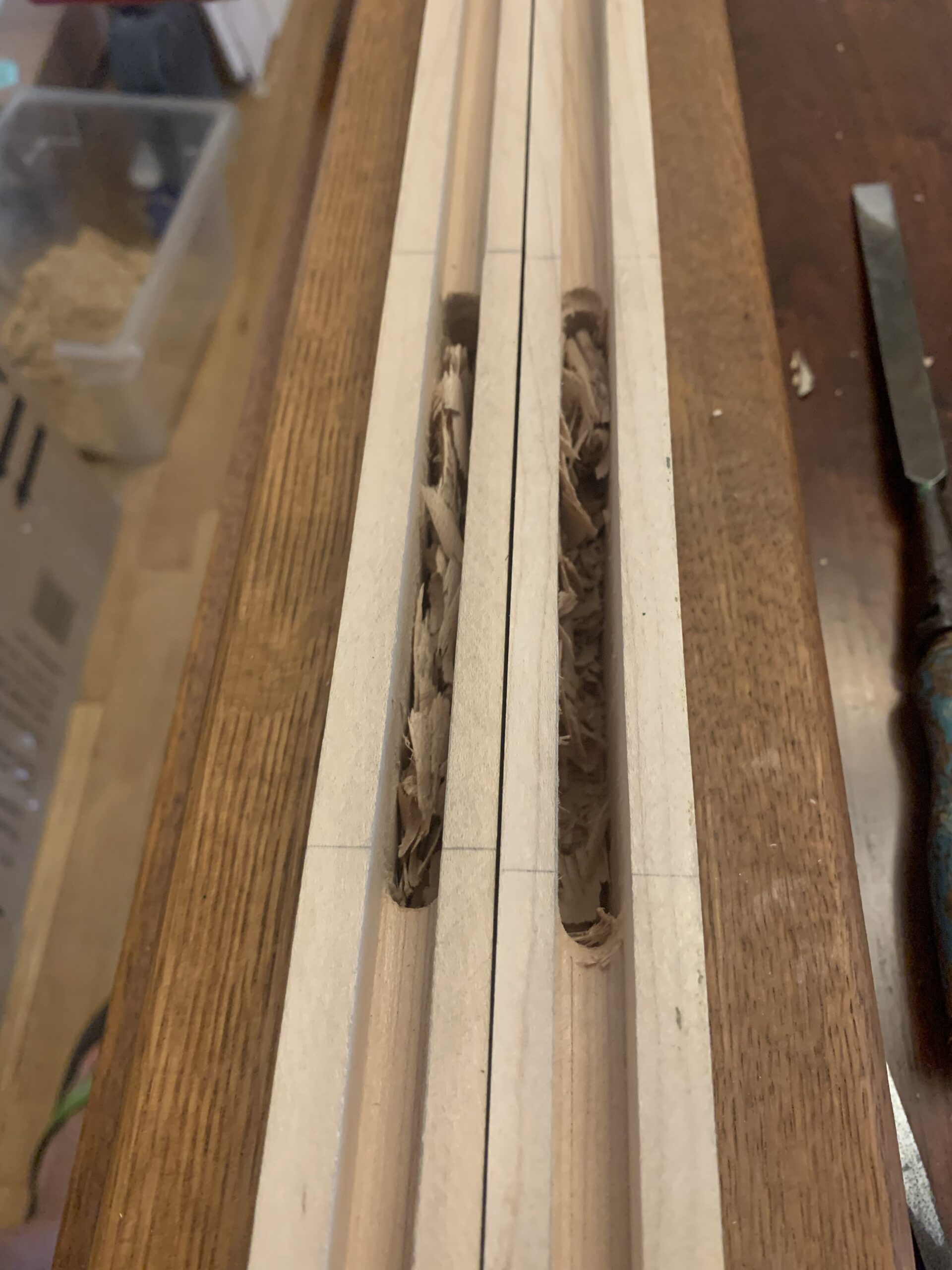
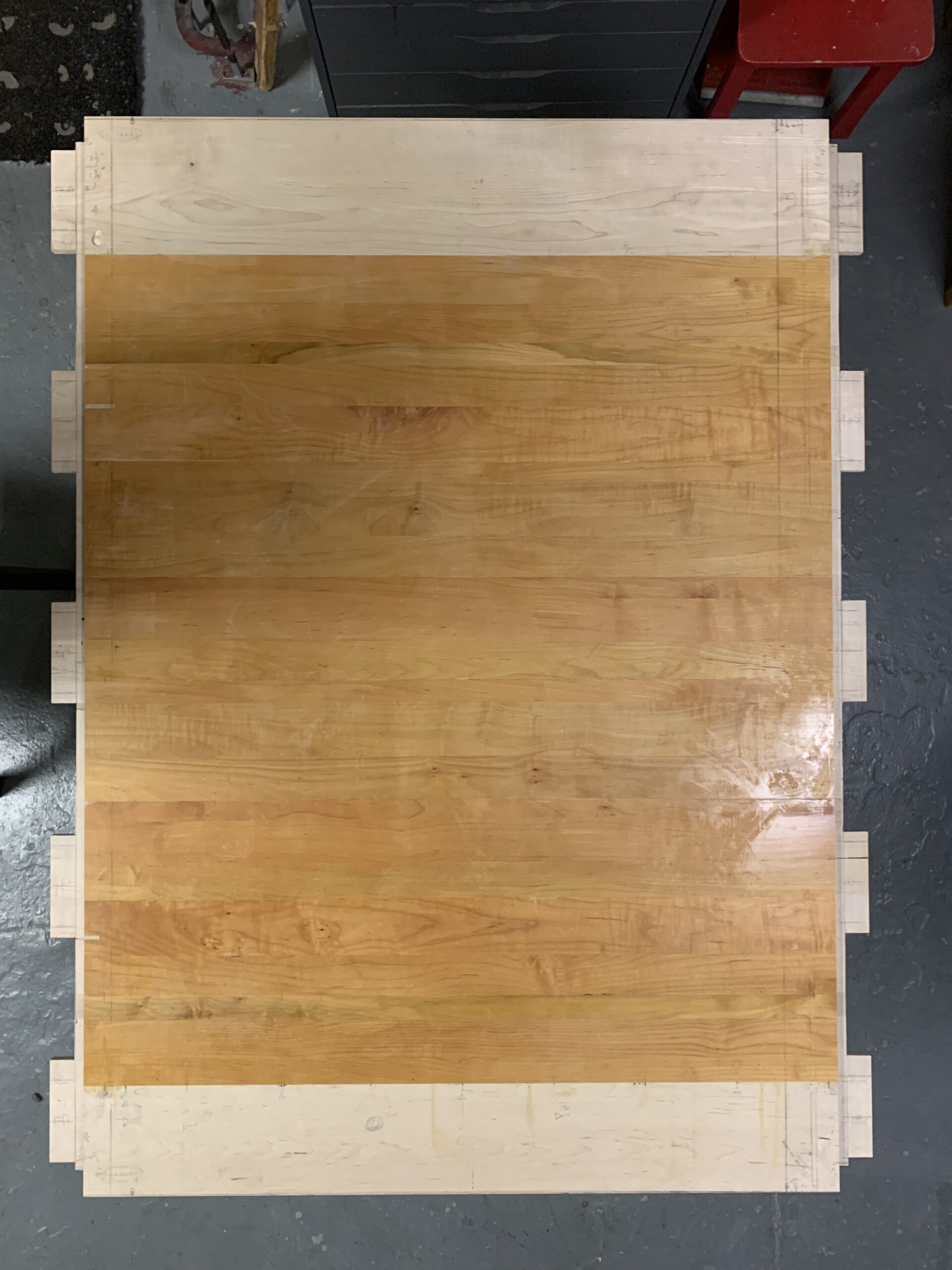
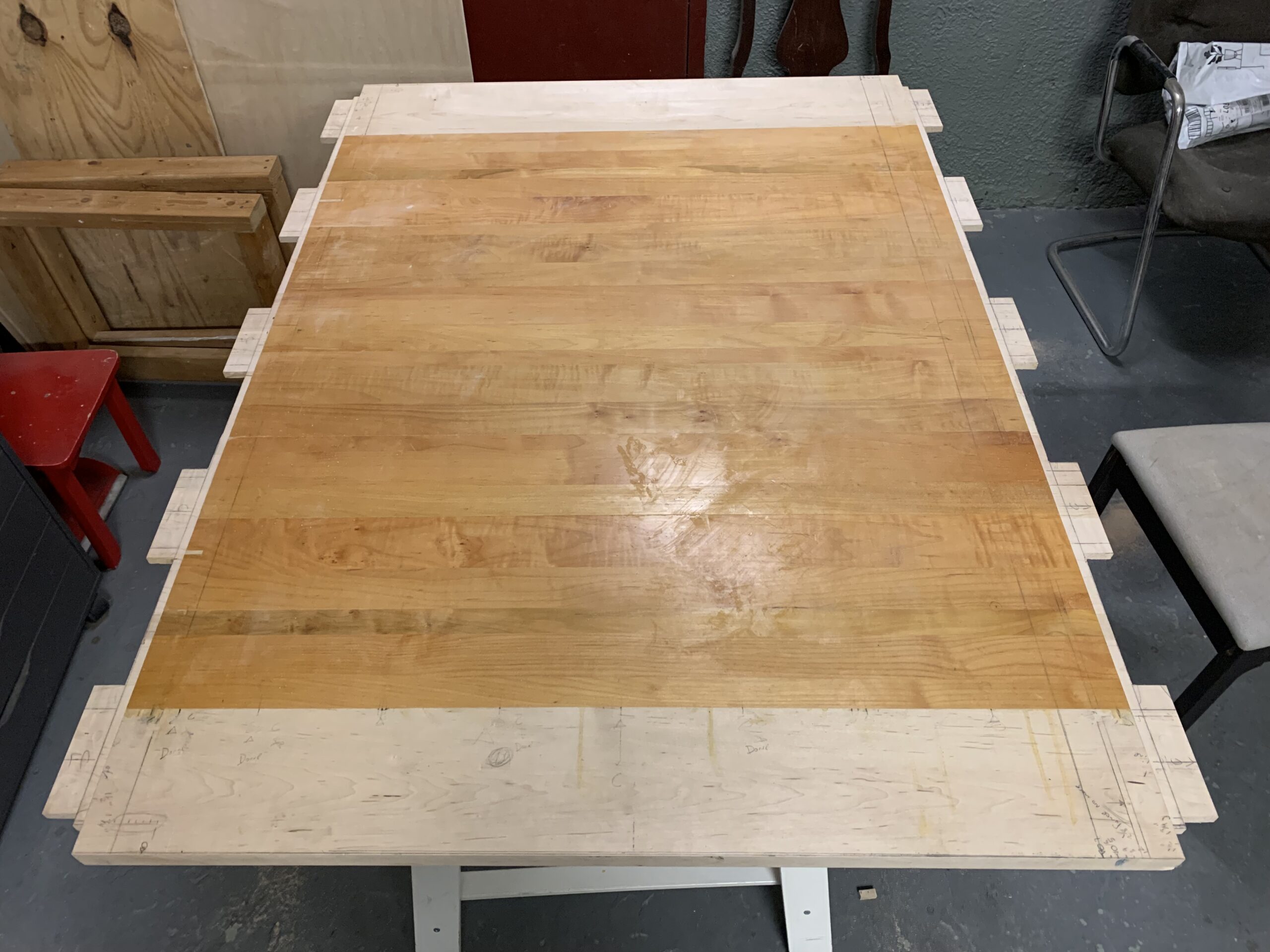
Kitchen Island
Ok, full disclosure: I am a total trash-panda who can’t pass up quality discarded lumber.
A friend of mine texted me one day to alert me about some maple shelving that was sitting outside in the rain next to a dumpster at a local elementary school, so I grabbed my stretch wrap and a cart and went to investigate. The shelves were ruined from the rain, but the 1″ vertical sides were still fine, so I grabbed them and brought them home.
My wife and I were going to be moving to a smaller apartment that didn’t have enough room for our kitchen table, storage for trash receptacles and a small washing machine, so I designed an island for the space that would seat 4 and included a cabinet underneath for the washing machine, trash and recycling.
I made this on sawhorses in our mosquito infested back yard, using a circular saw and chop saw. The boards on the top were joined using a biscuit joiner. The entire thing was made so that it could be disassembled and stored flat for moving and storage
- Maple top
- Pine cabinet (scavenged bed slats)
- Storage underneath
- Easily disassembled for moving
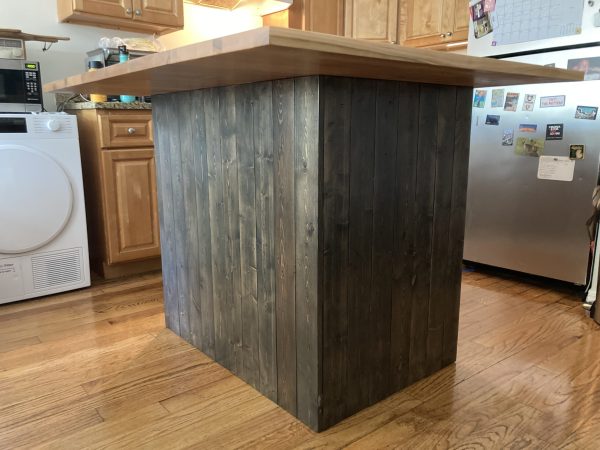

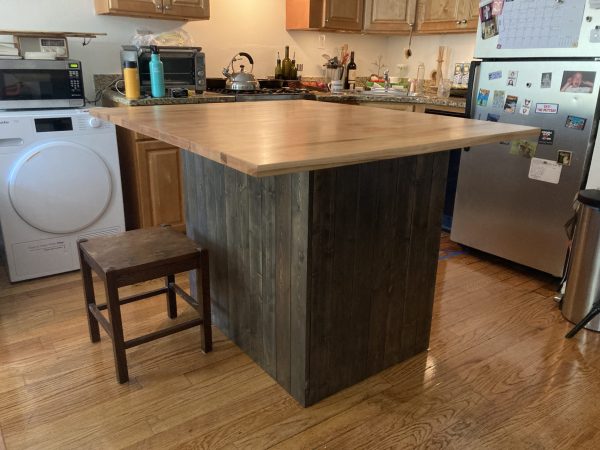


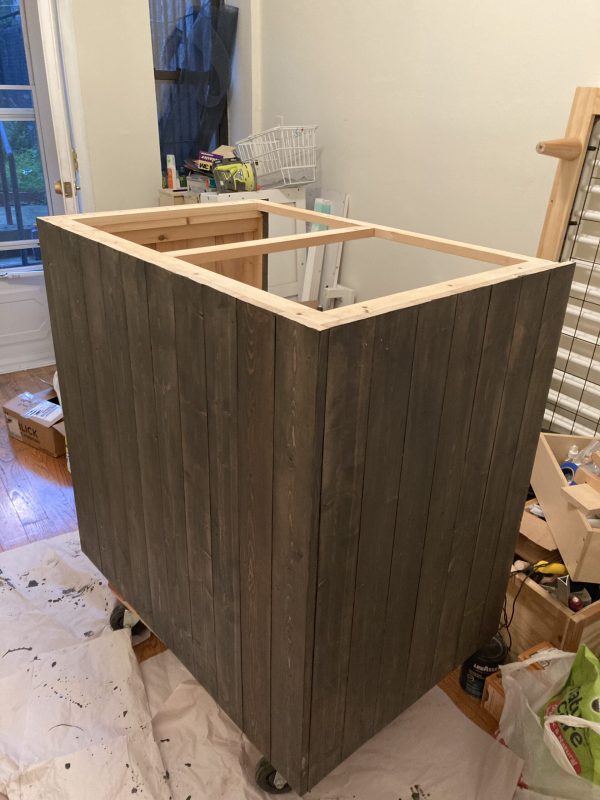
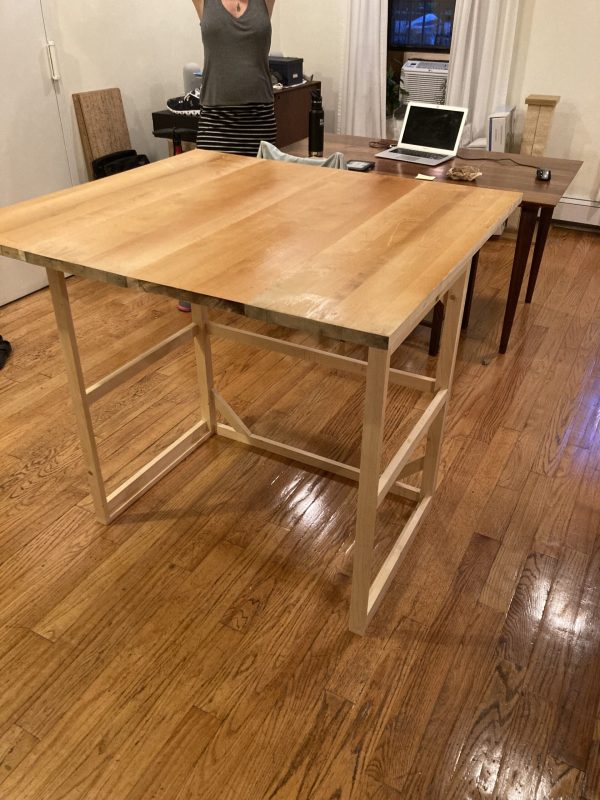
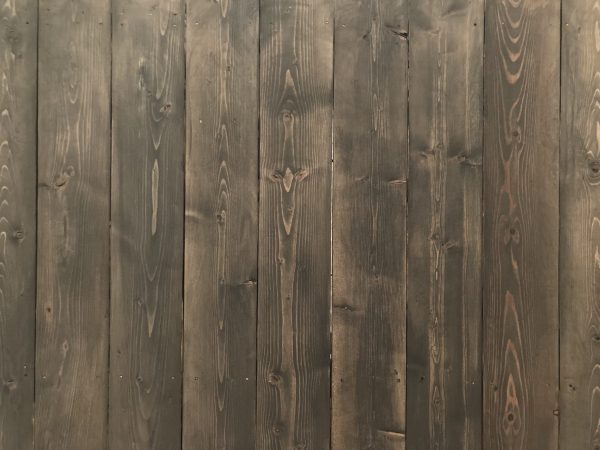
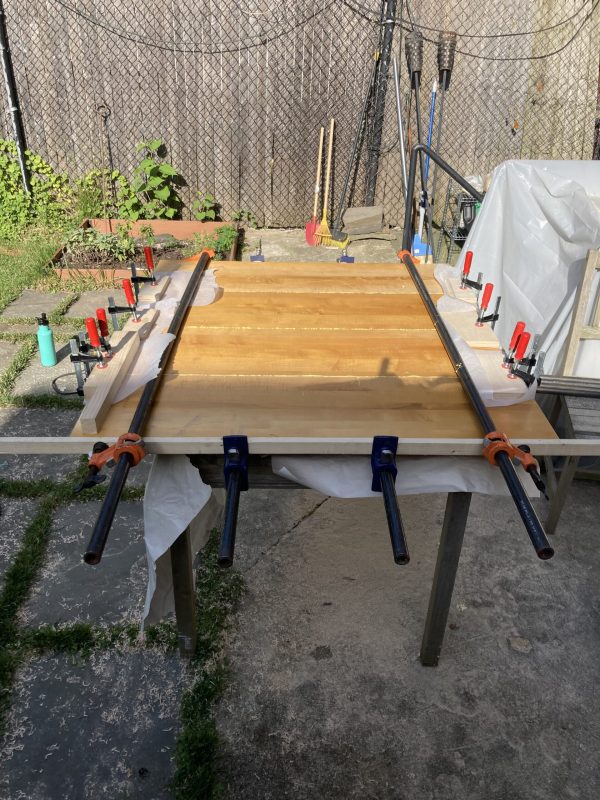
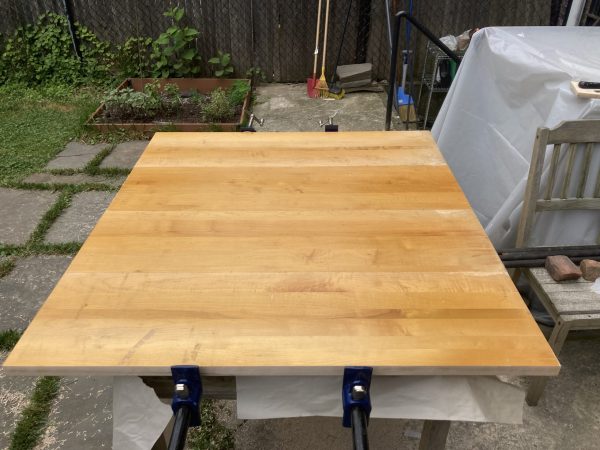
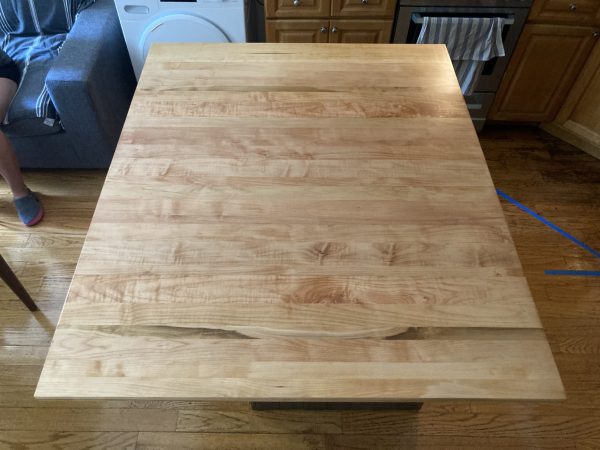
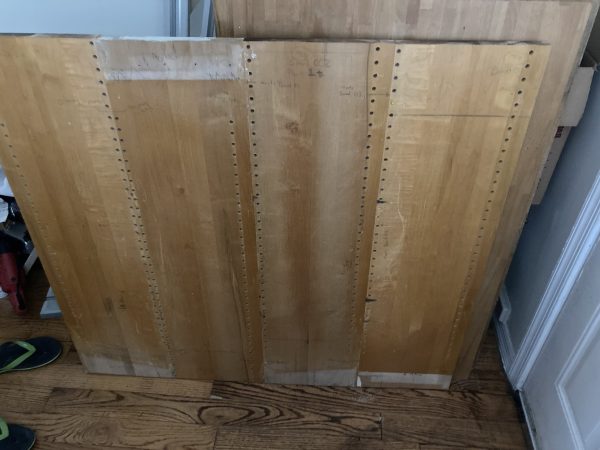
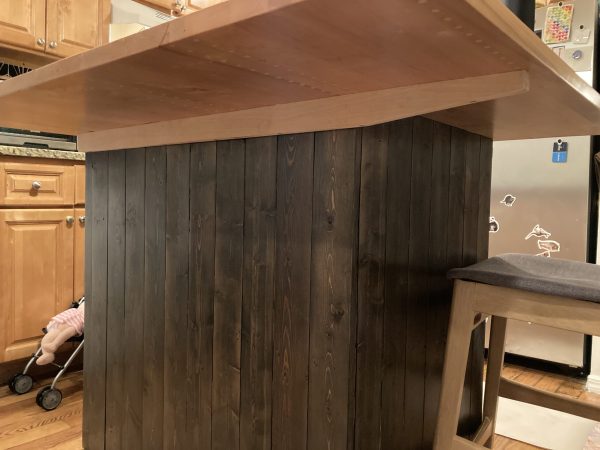
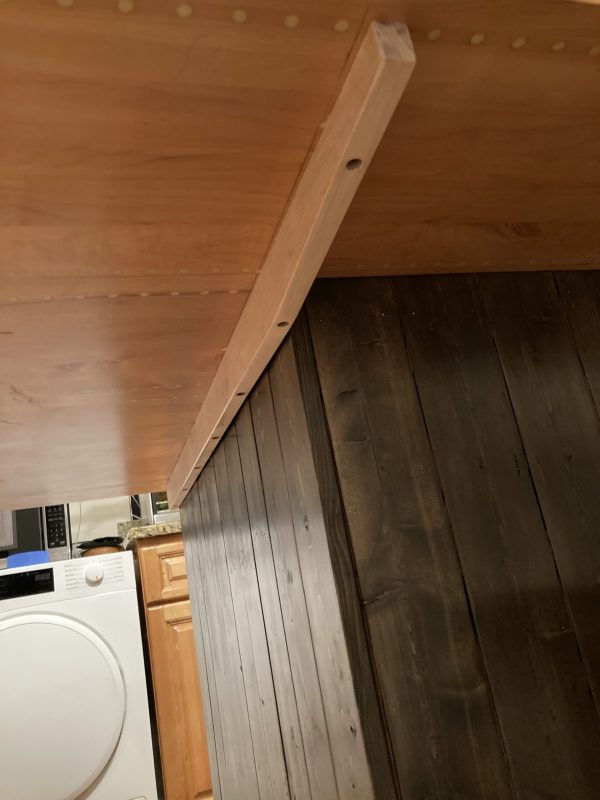
Platform Bed
Years ago, I was on my way to work and noticed that a local school had thrown out these amazing hardwood shelves. I couldn’t stand to see them go to waste, so I took them home and cleaned them up. Soon after, I bought some cherry and made frames to drop the shelves into, which I cut to size. At the time, I was experimenting with steel hairpin legs, so I bought a set and incorporated them into the design. Next time, I won’t be using hairpin legs, because I just don’t like them. Wood legs from now on.
- Repurposed oak shelves
- Cherry frames
- Steel legs
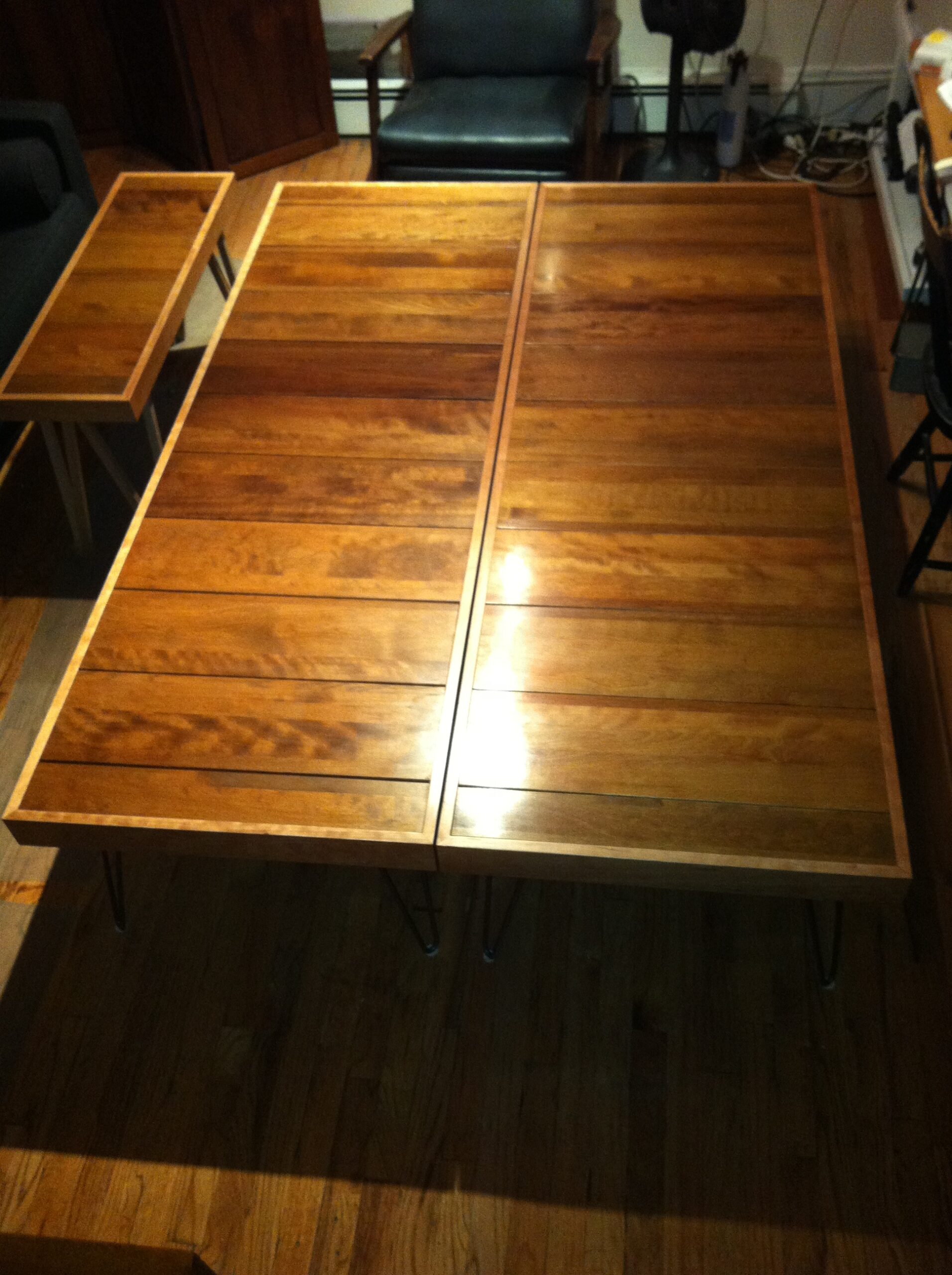
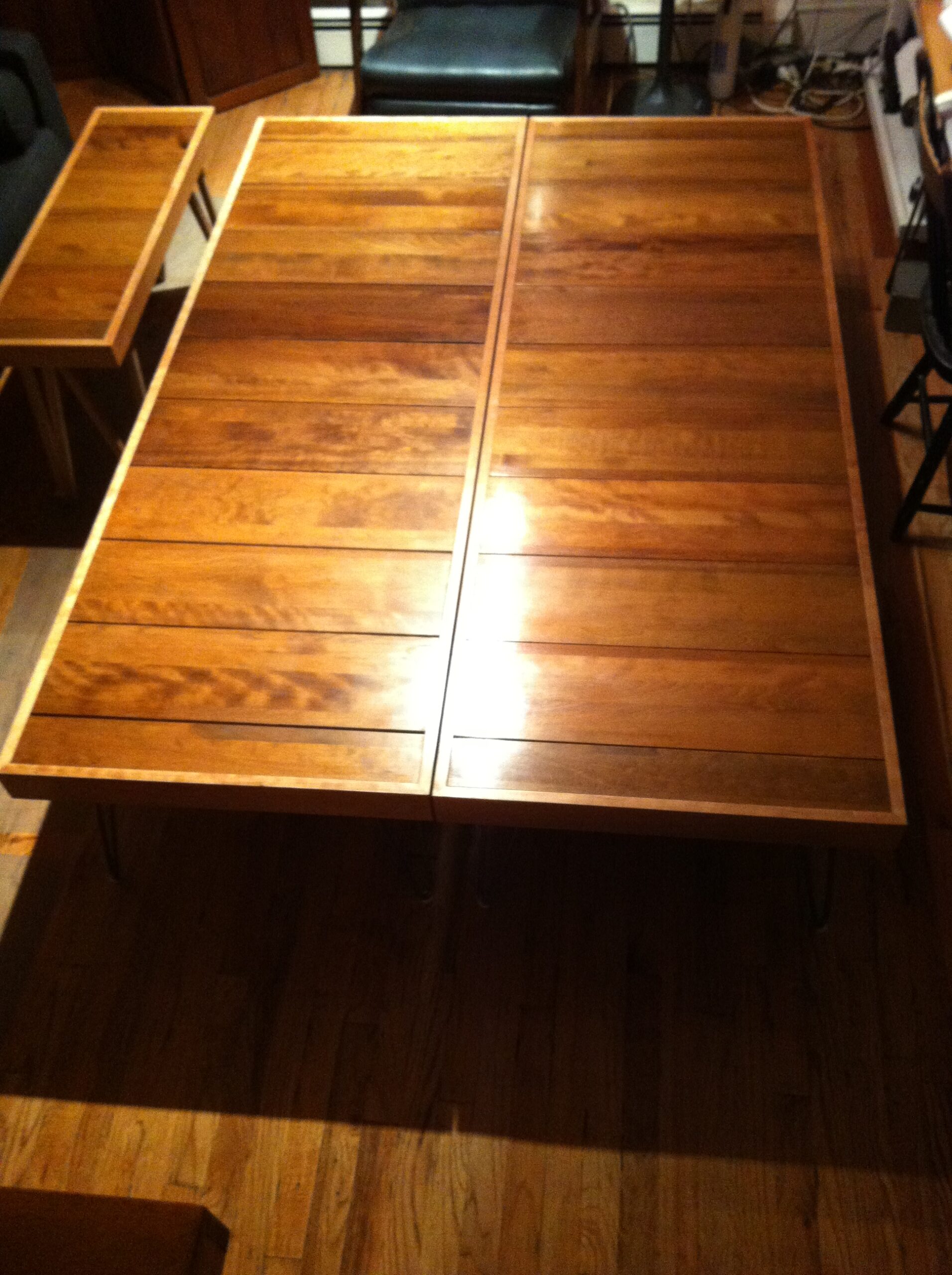
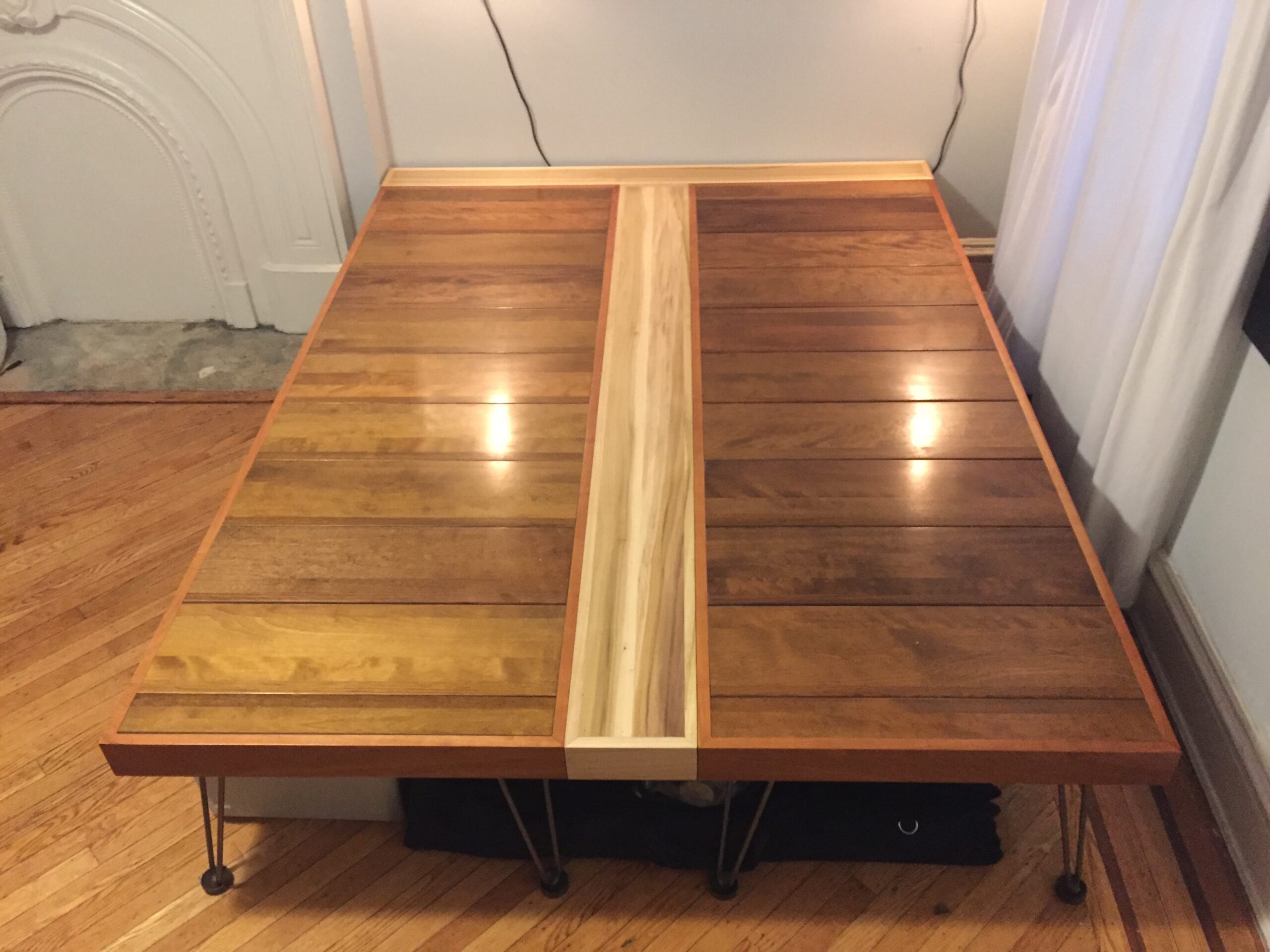
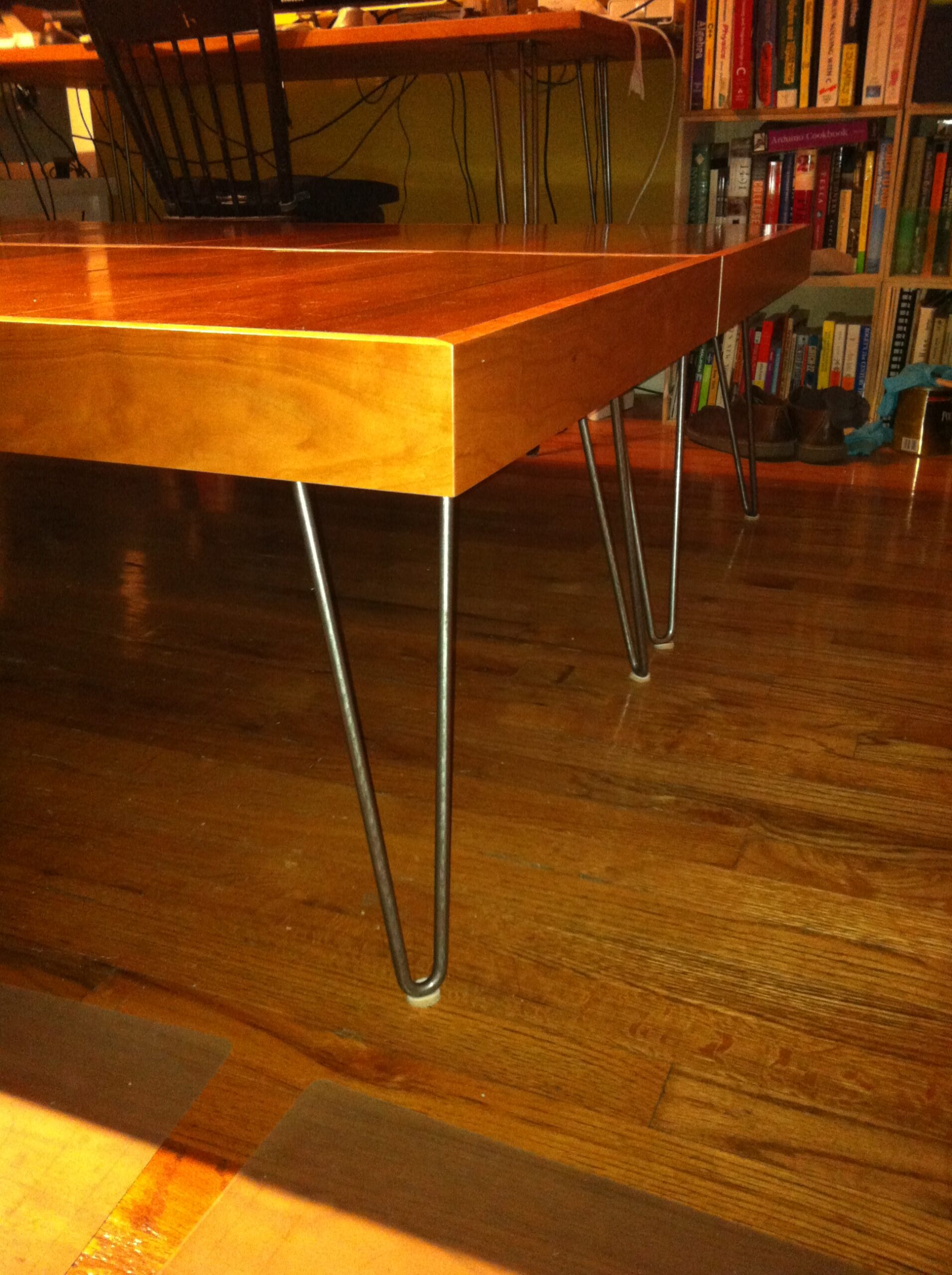
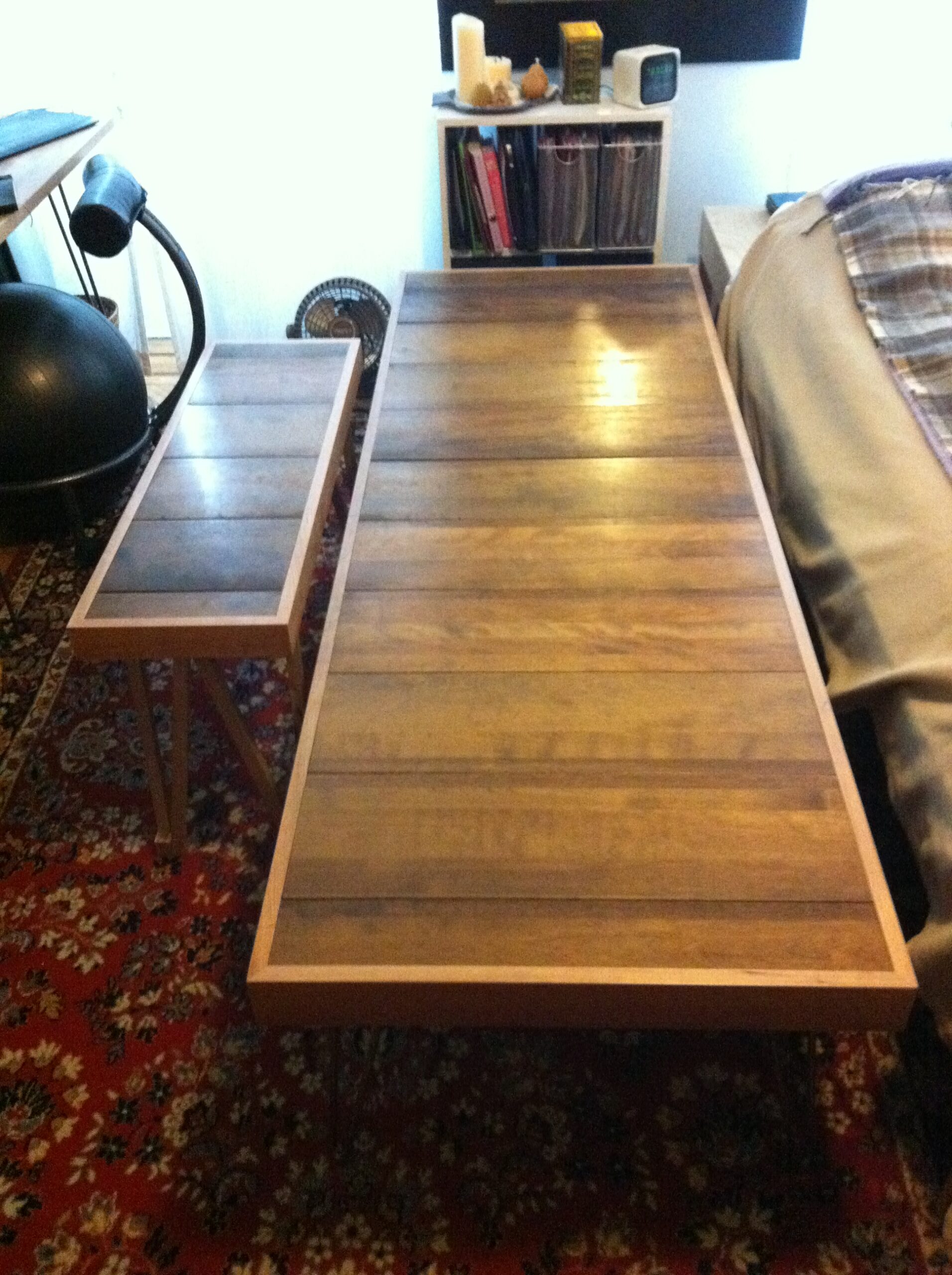
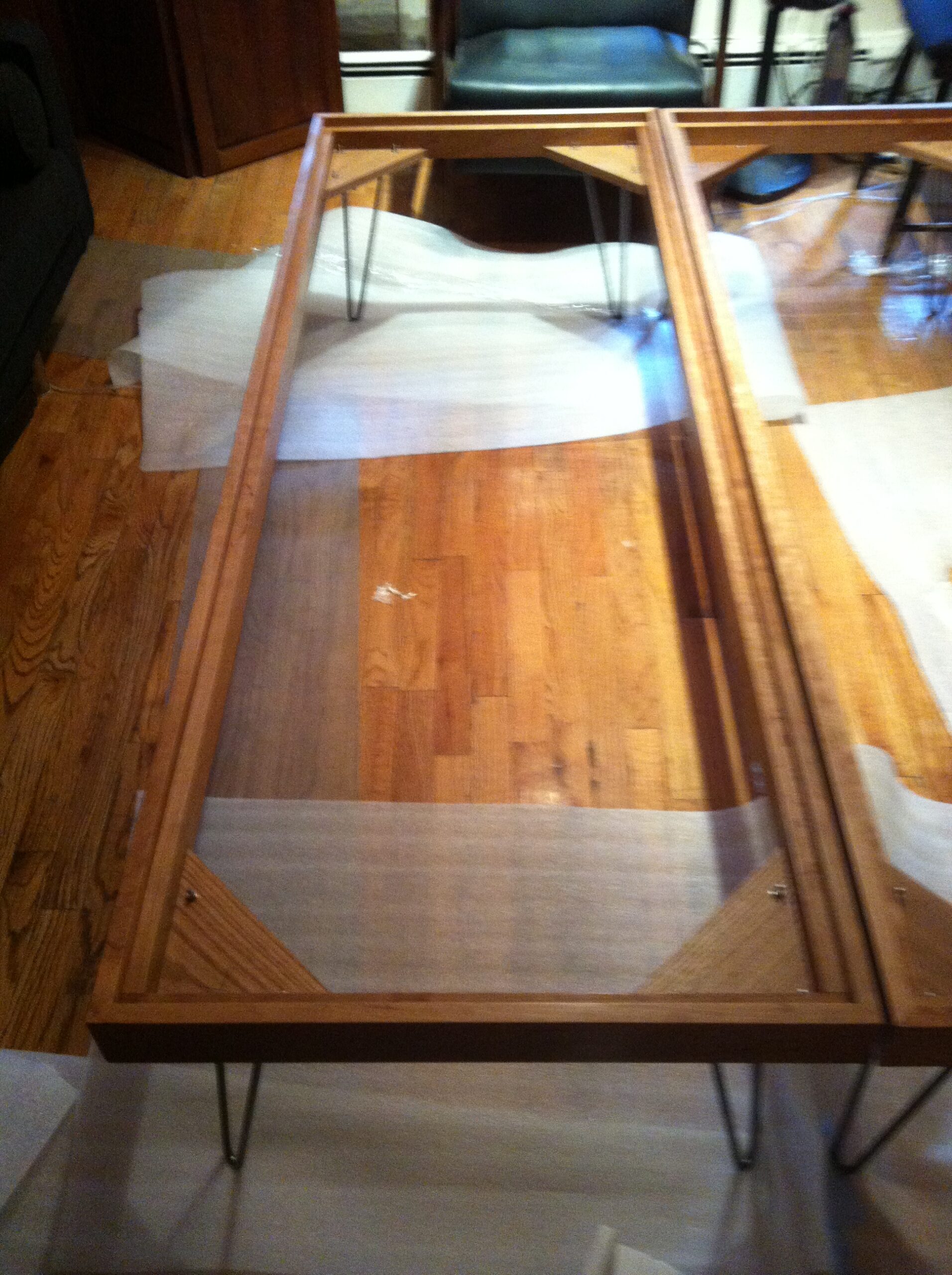
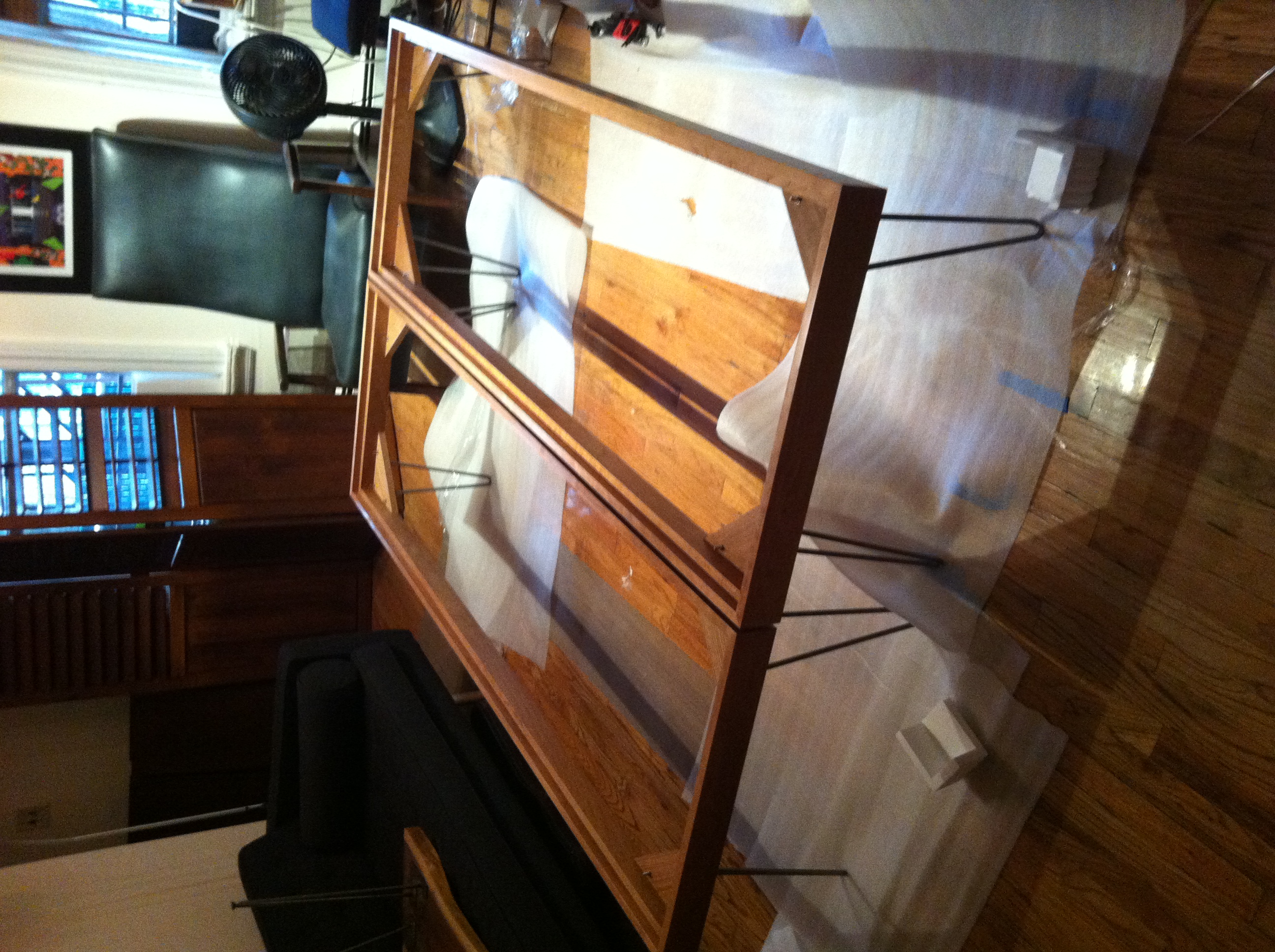
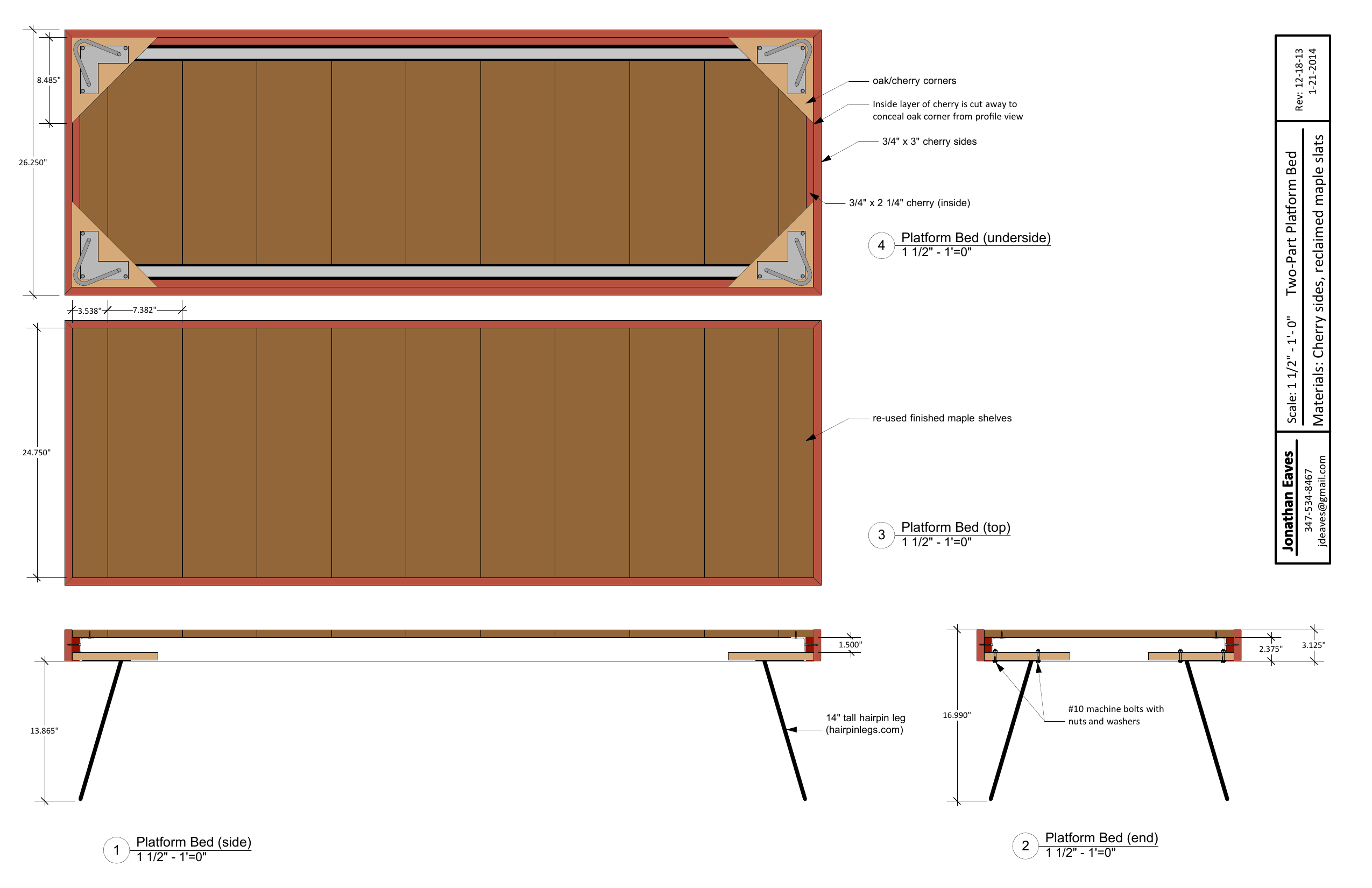
CNC Bass
Several years ago I was working at a place where I made CAD files and ran the CNC router. I was really interested in having a full size stand-up bass at the time, so in my down time I drew this thing up in AutoCad and cut it out of some scrap birch plywood that we had laying around. The fingerboard is made from hard maple.
If I were to do it again, the entire thing would have fewer parts and be constructed entirely of maple, due to the intense string tension. It was a great project for attempting to learn how to play bass.
- Materials: Birch plywood, maple and hardware.
- Second specification list hereEasy to disassemble for storage
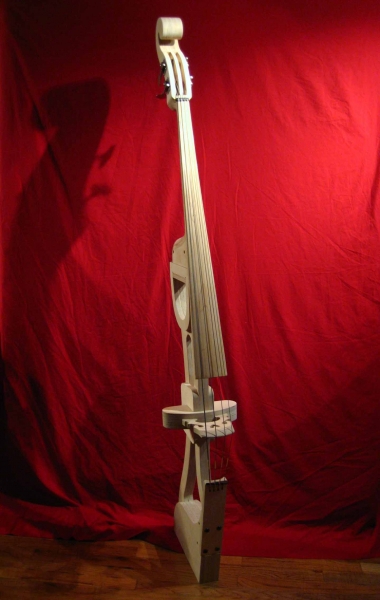
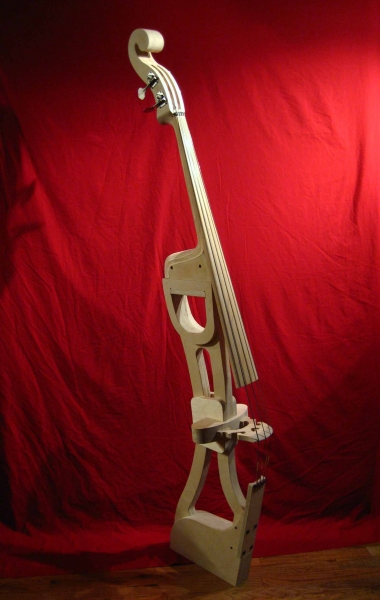
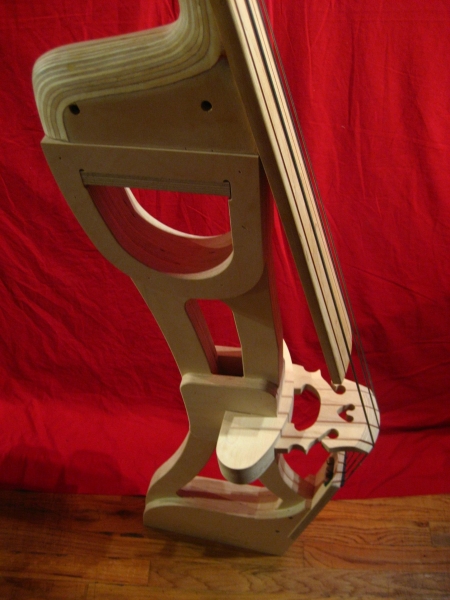
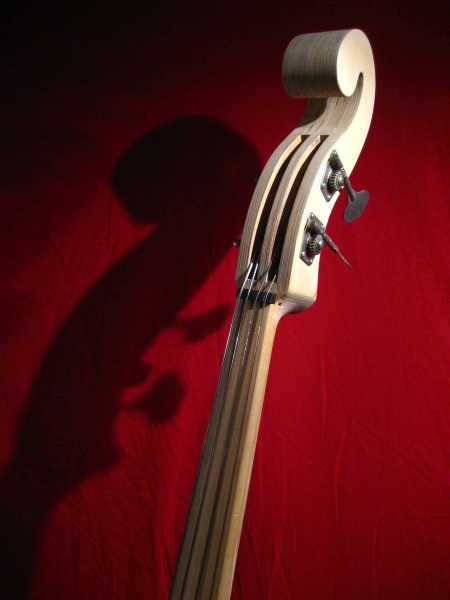
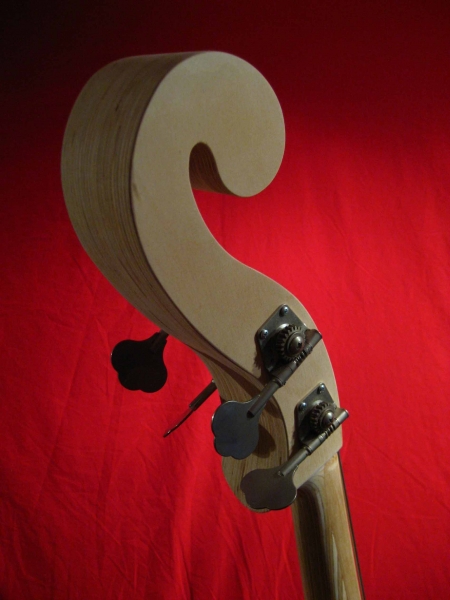
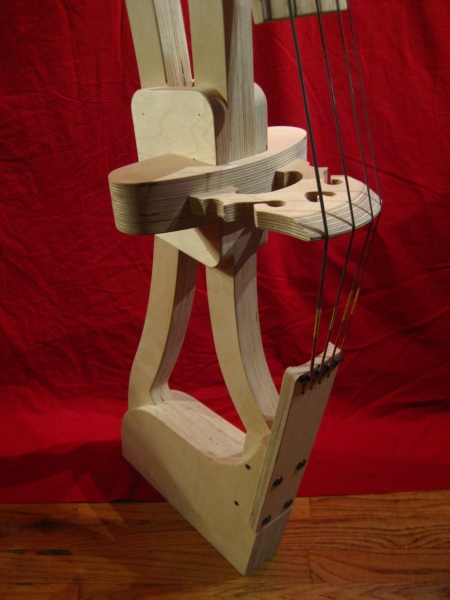
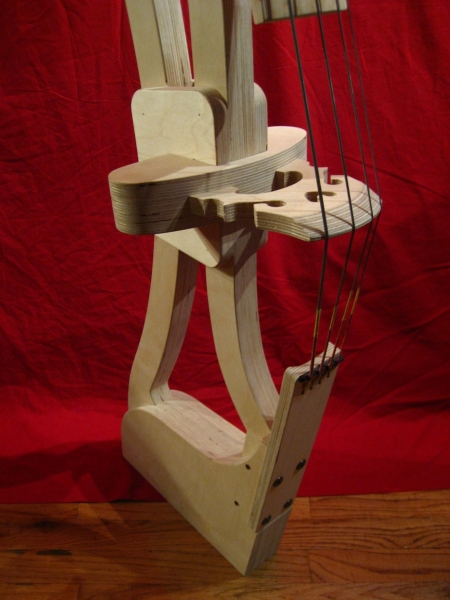
Tool Boxes
Recently, I was trying to figure out what to do with a stack of old scrap plywood that I had in my work area. While trying to organize my tools, I realized that I needed some tool storage solutions, so I threw together a few plywood boxes which have been pretty handy to have now that I live in a place with even less storage space.
- Materials: Scrap maple veneer plywood and pine
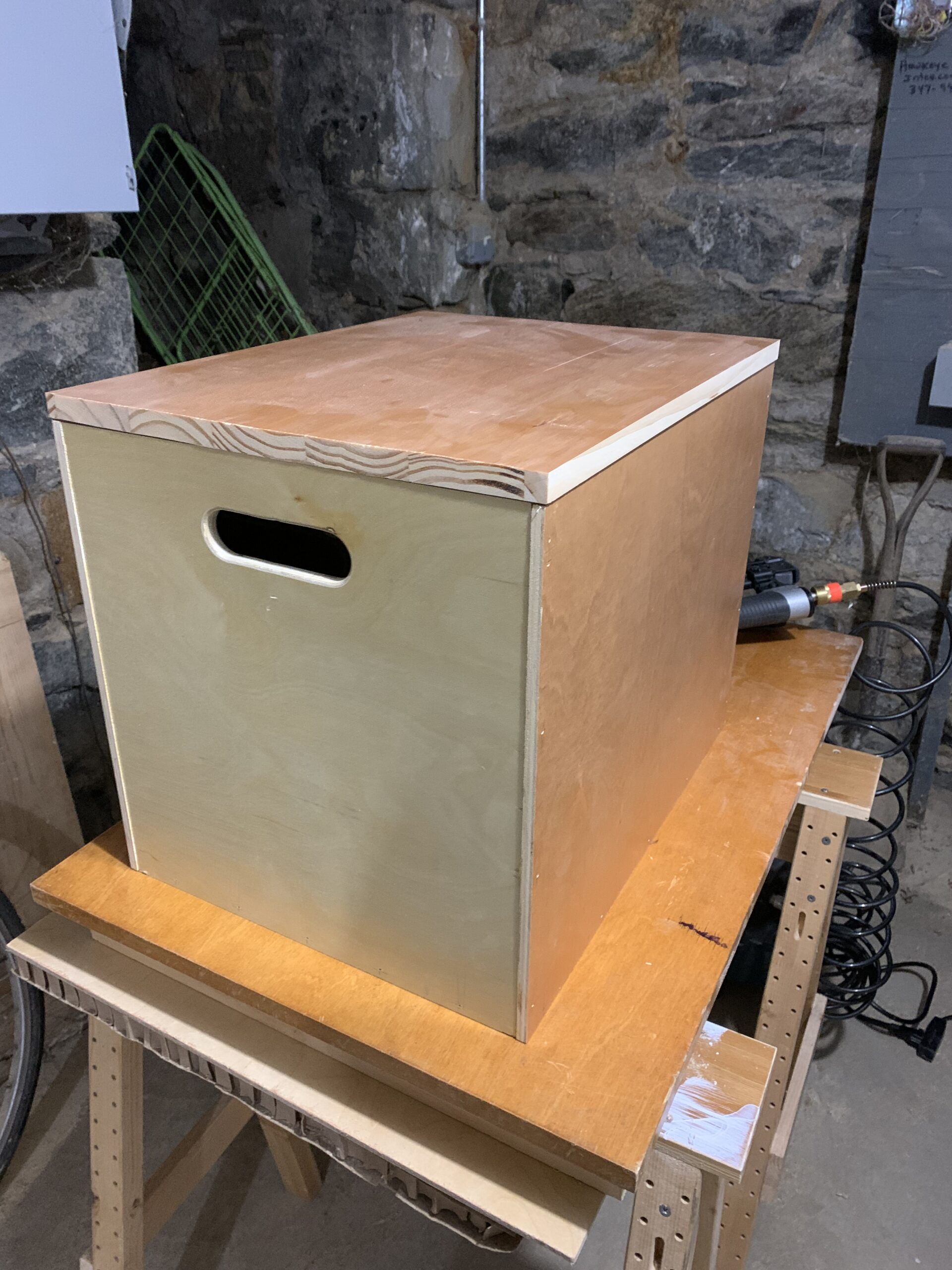
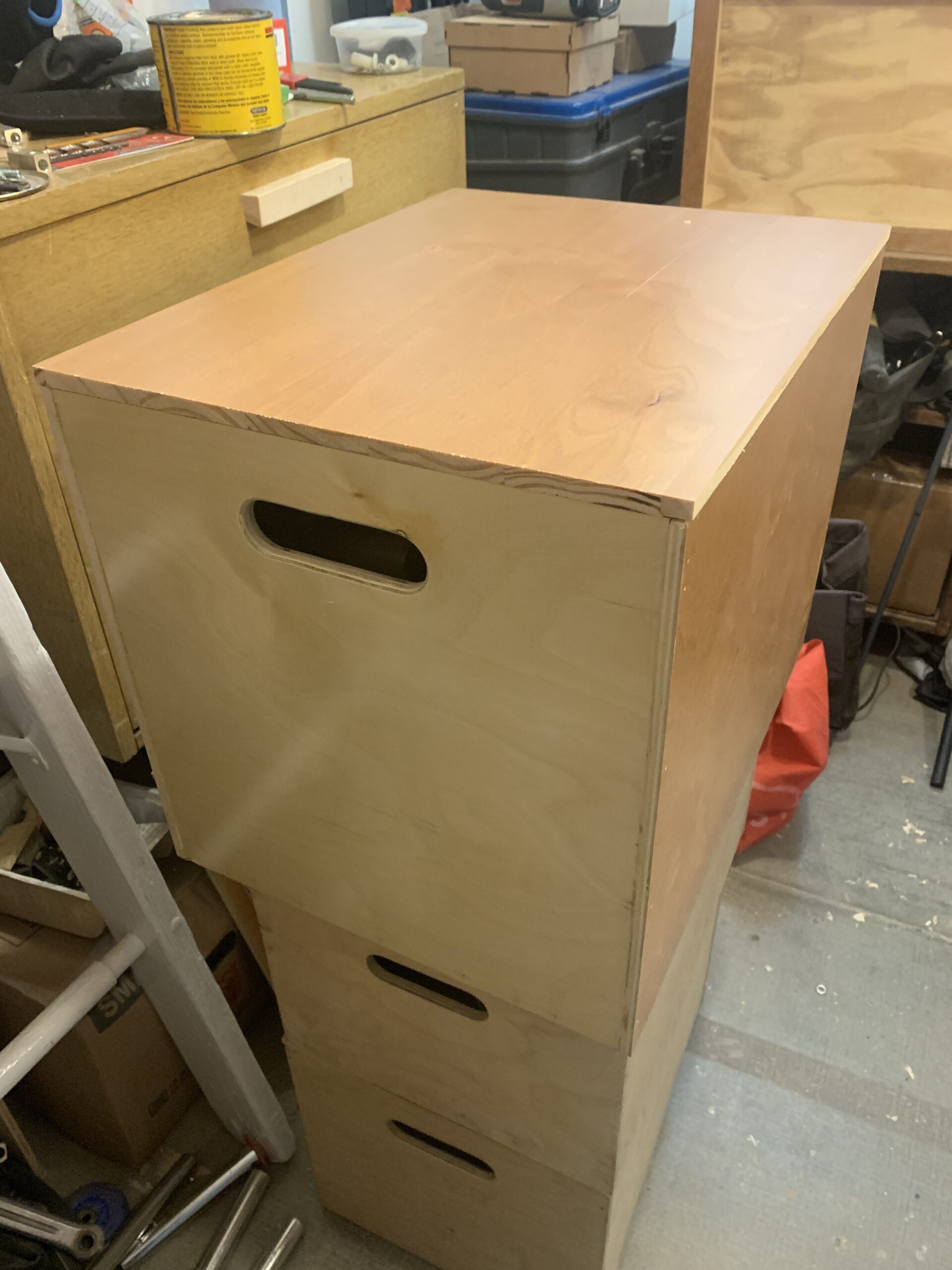
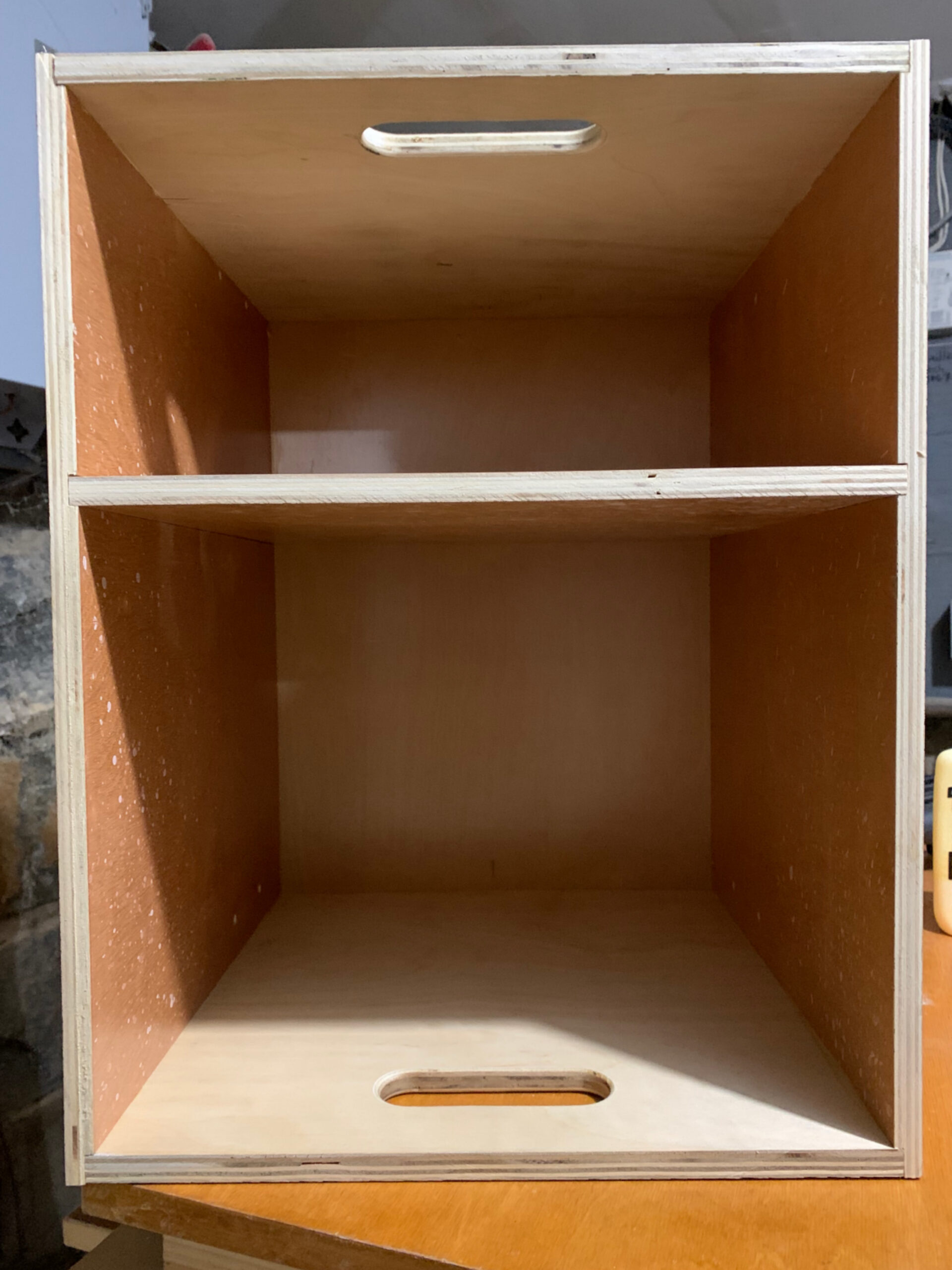
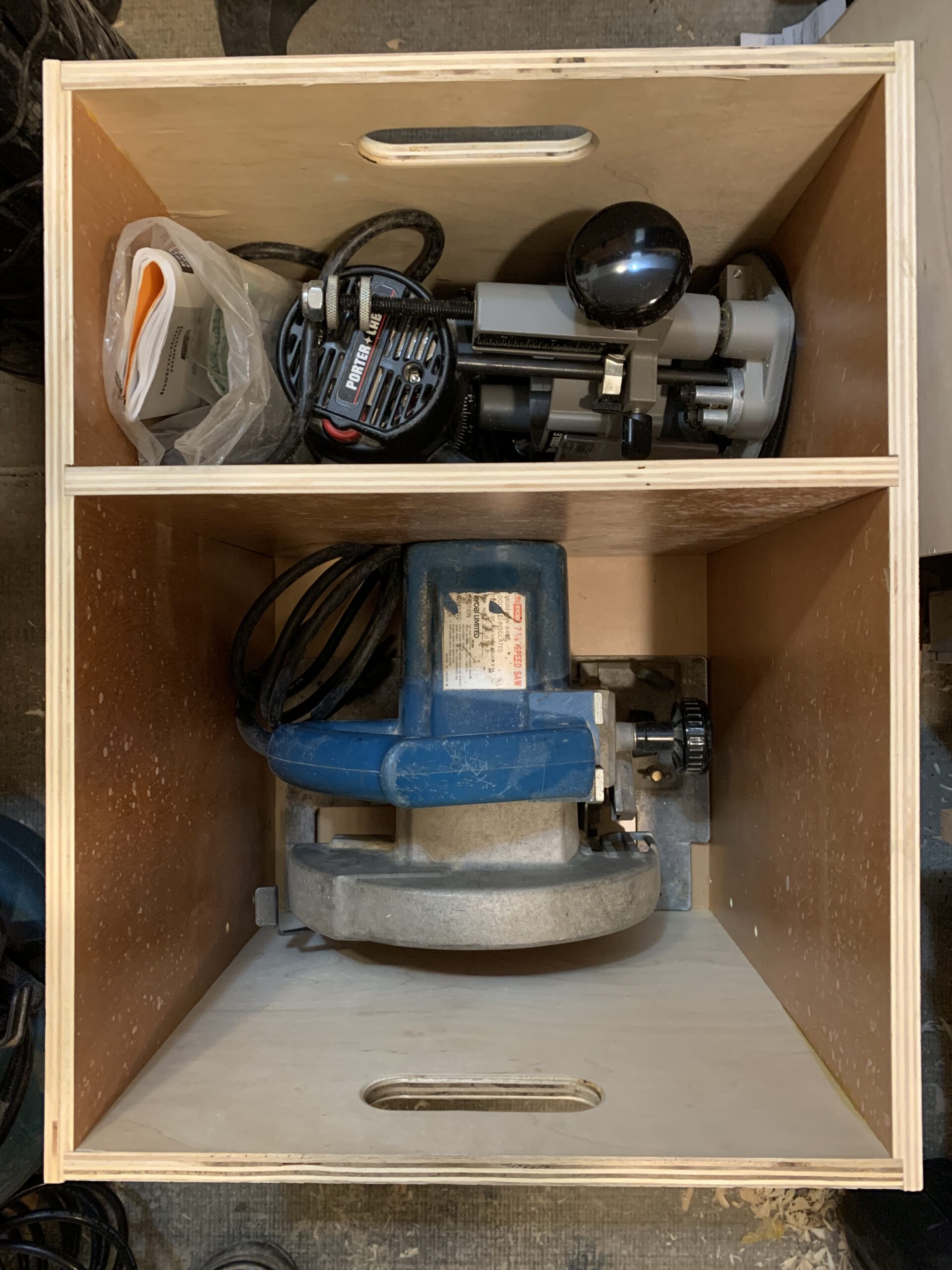
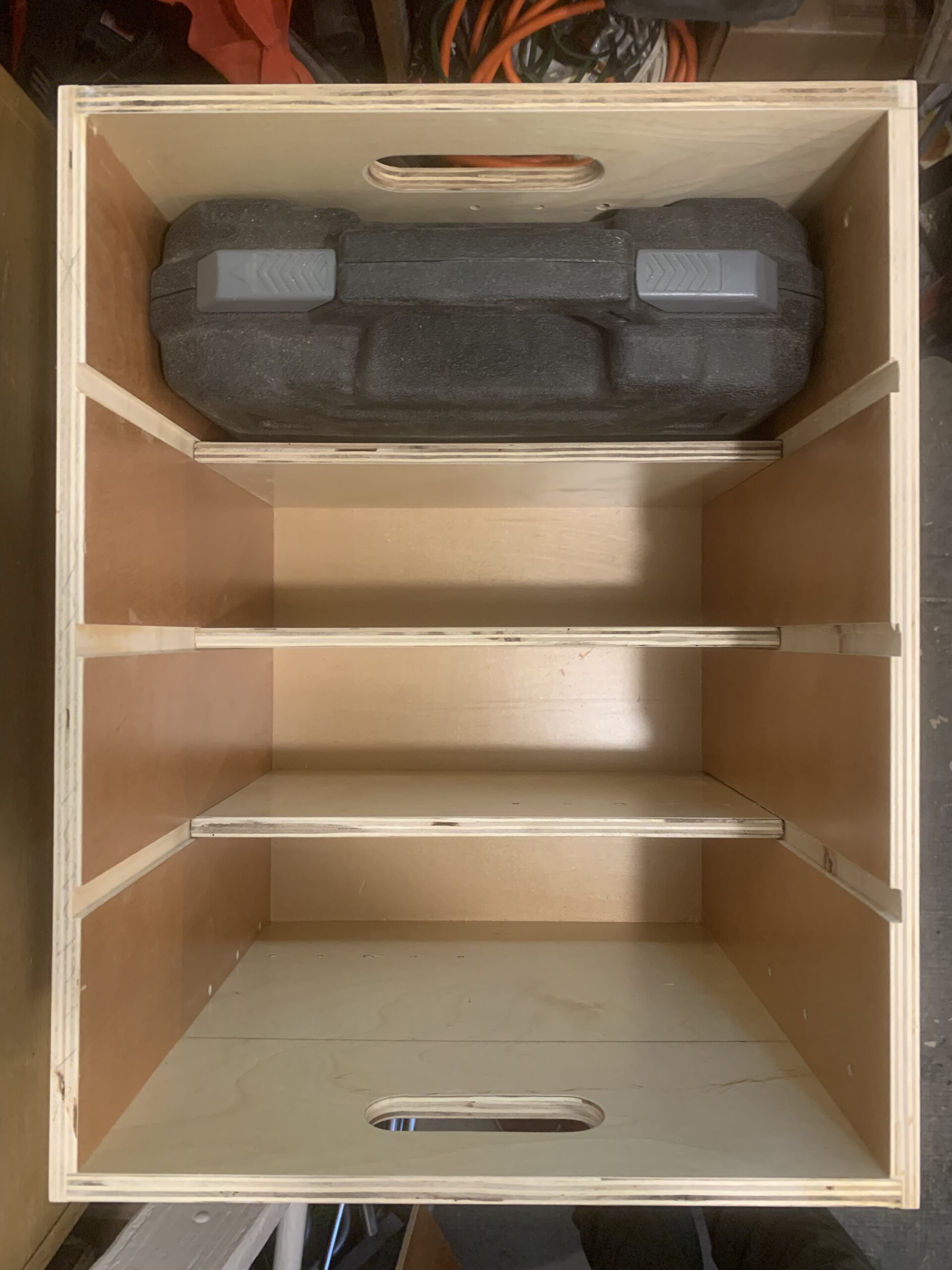
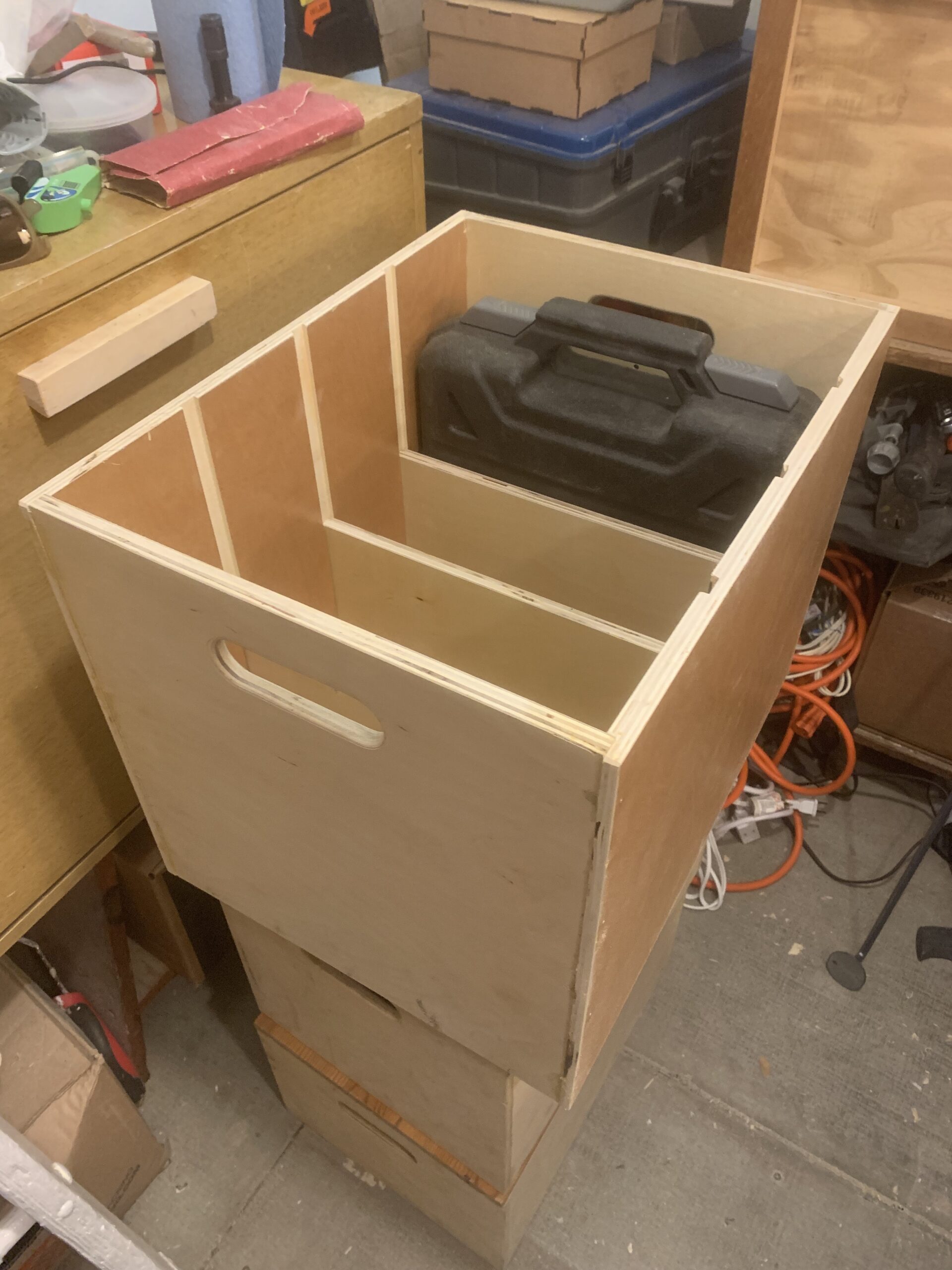
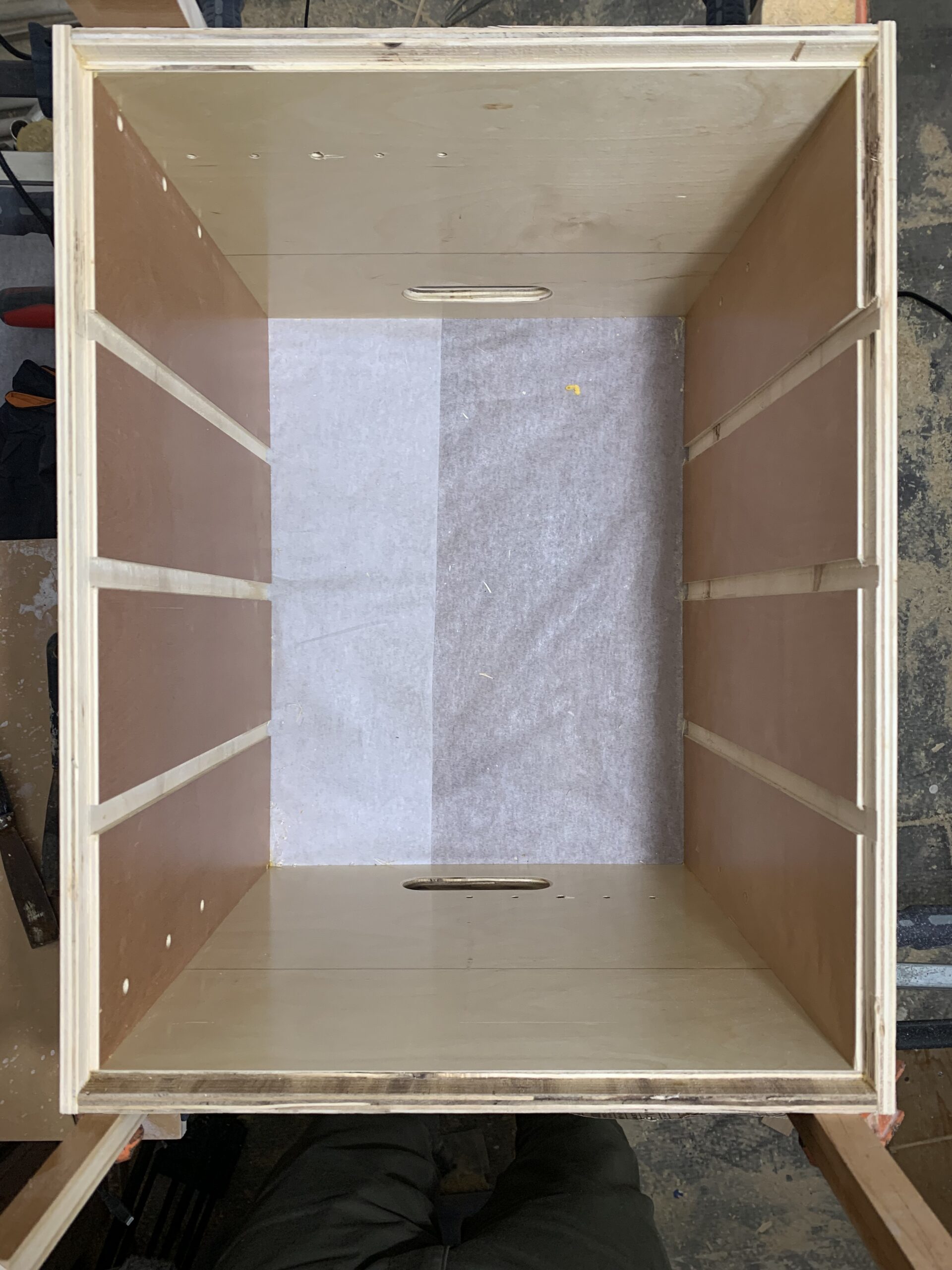
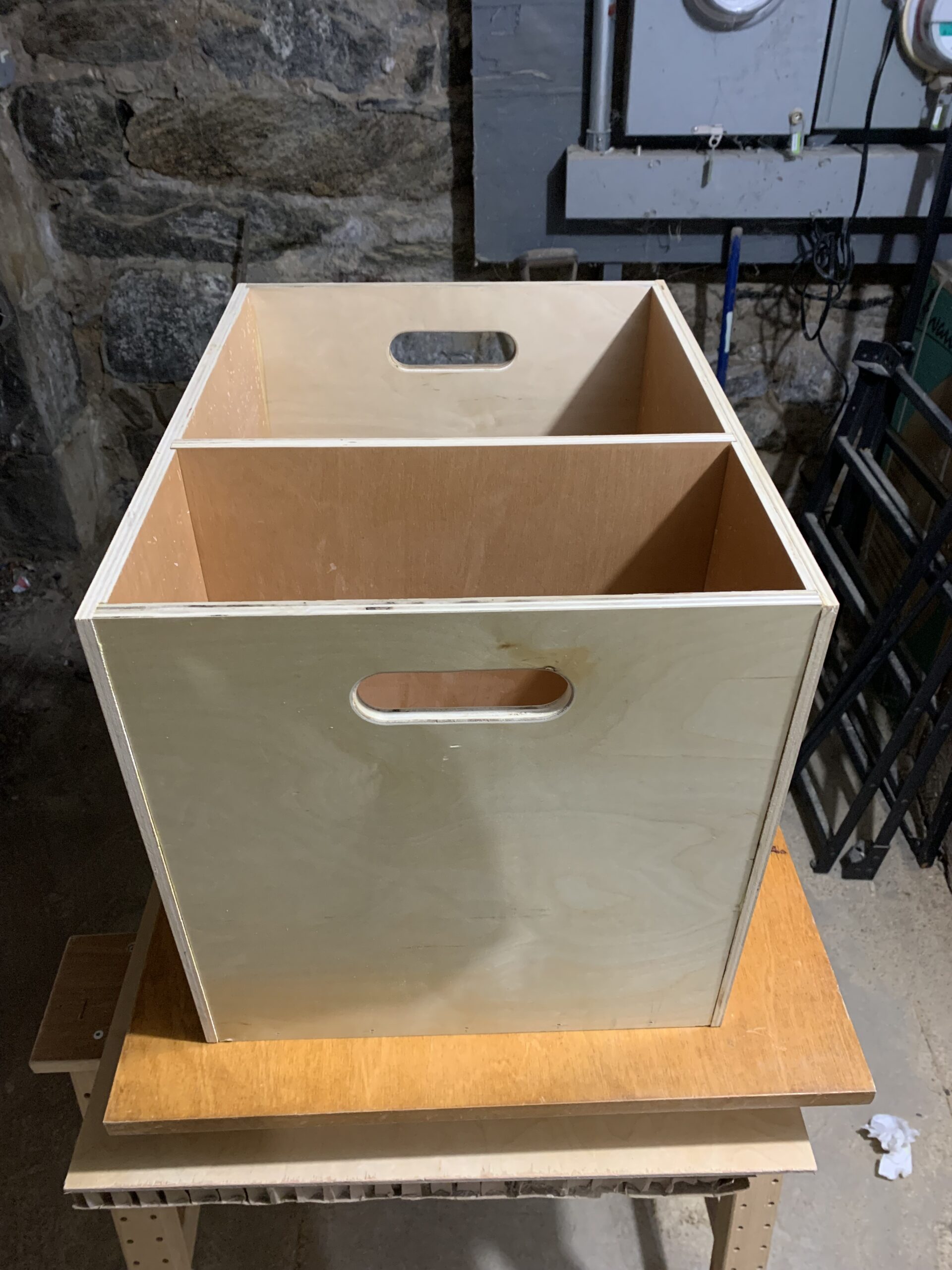
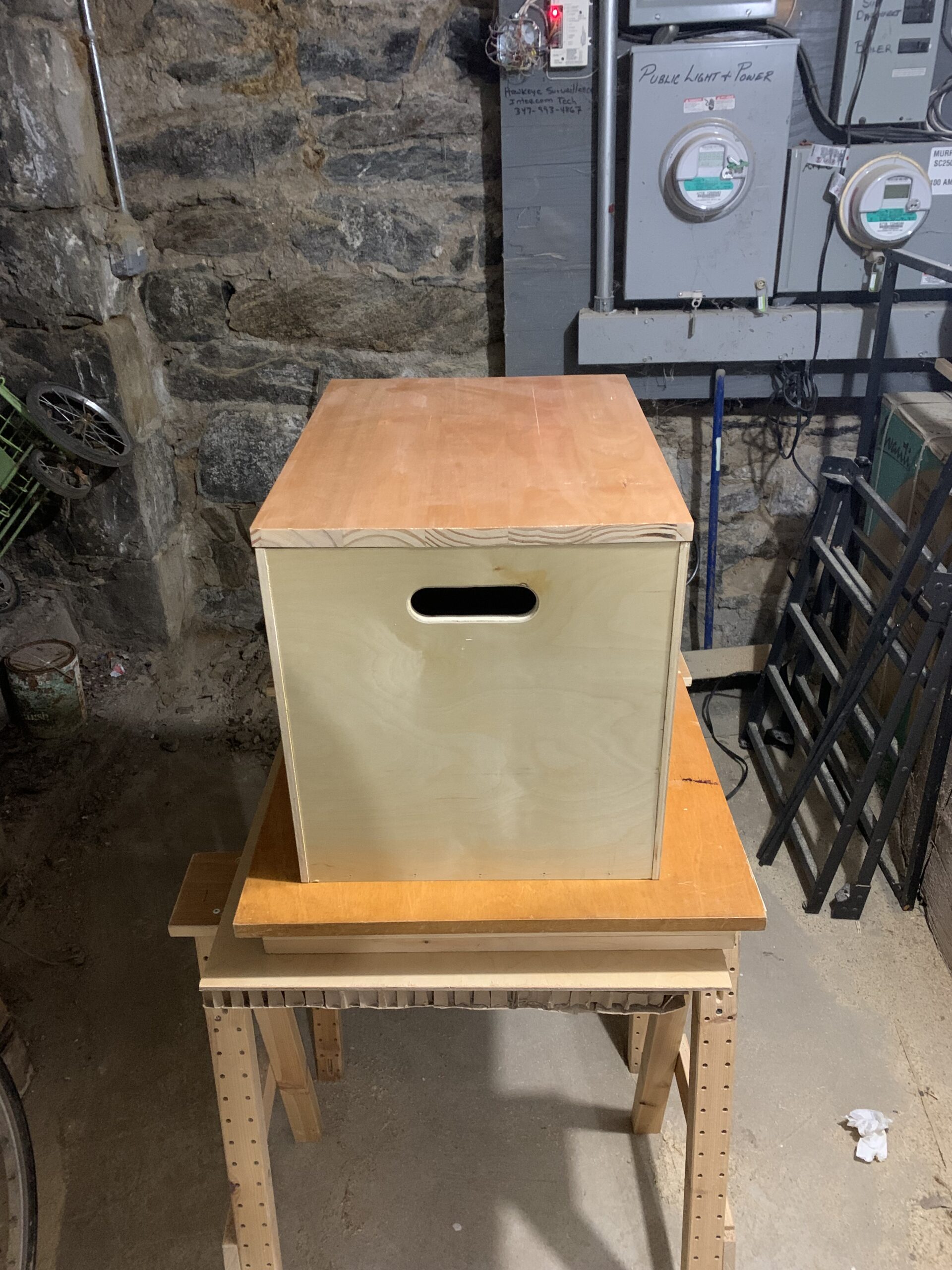
Bottle Capper
Long ago I tried my hand at making apple cider. At one point, I realized that I needed a new bottle capper after accidentally breaking the cheap, handheld capper that I had bought at the time. Rather than buy an expensive plastic bench capper, I decided to use the access to a CNC router that I had to make my own out of some scrap wood. I reused the steel bell from the old capper and bought some hardware for $15 or so to make it happen. The design was fun, and it was fun to learn how to convert rotary motion into linear motion.
- Materials: Plywood, hardware
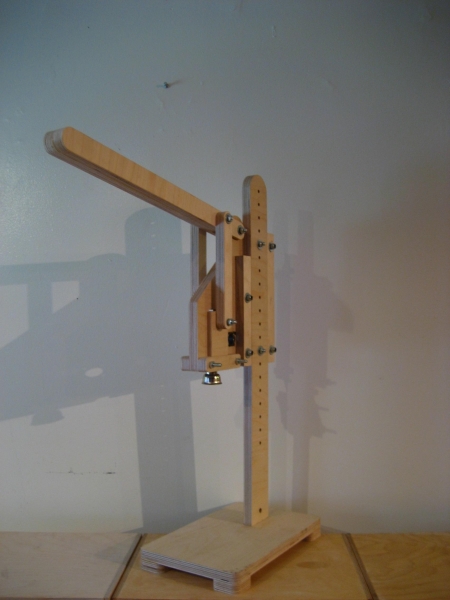
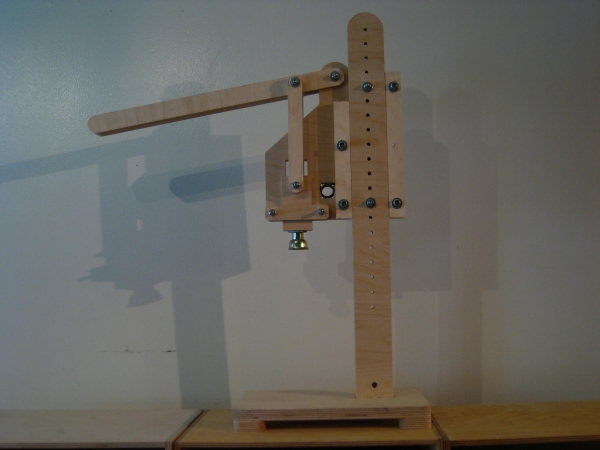
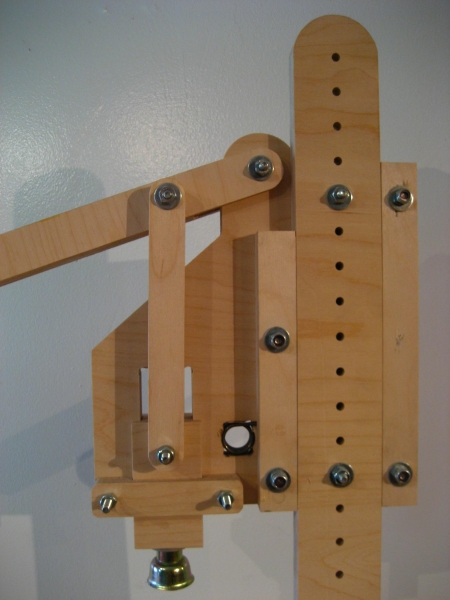
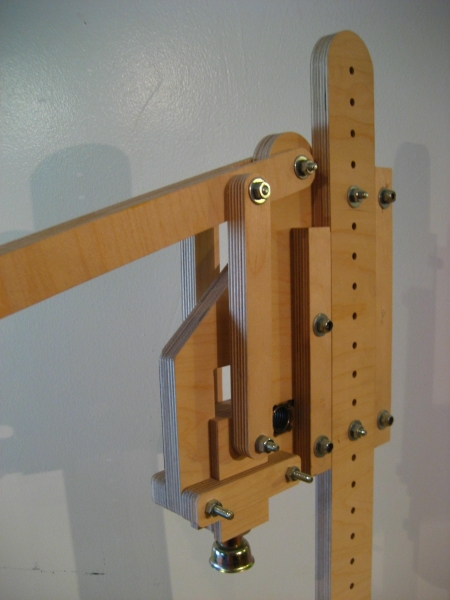
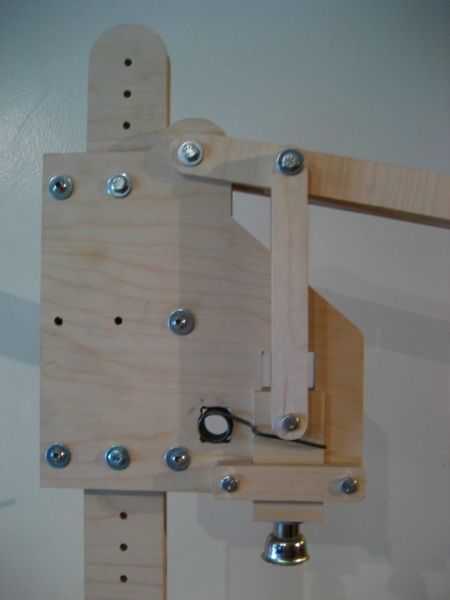
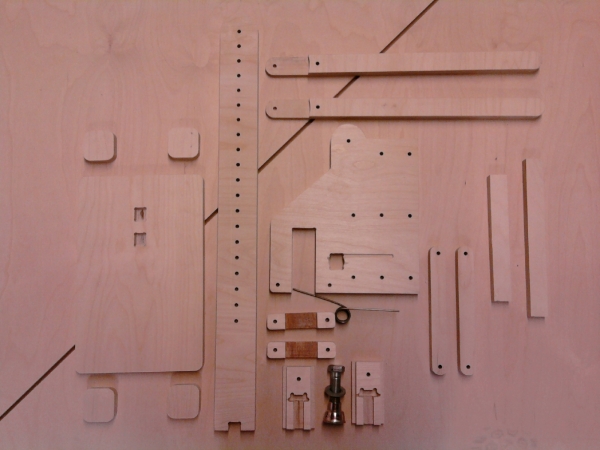
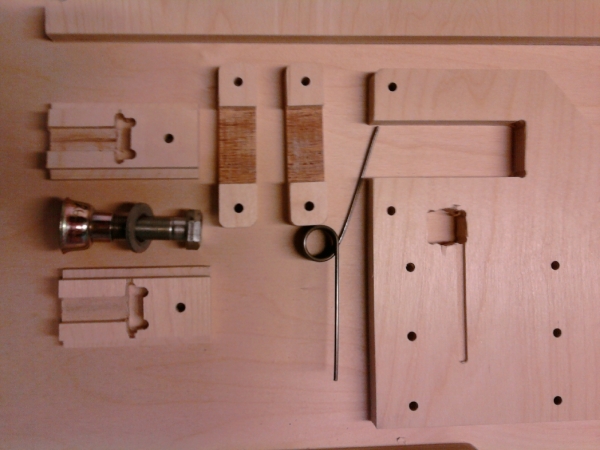
CNC Coffee Table
This is a little coffee table that I quickly designed and made for a friend from birch plywood on a CNC router.
- Material: Plywood
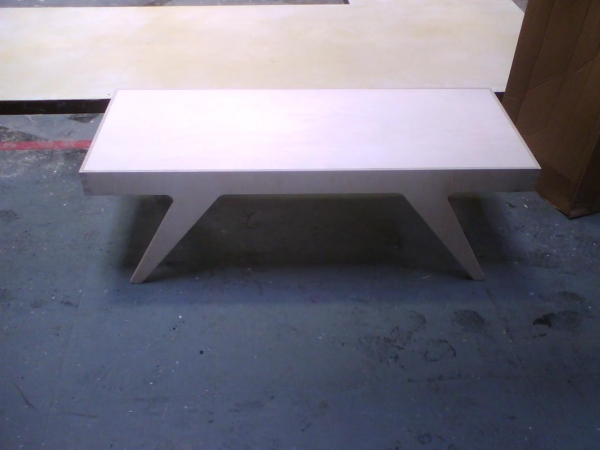
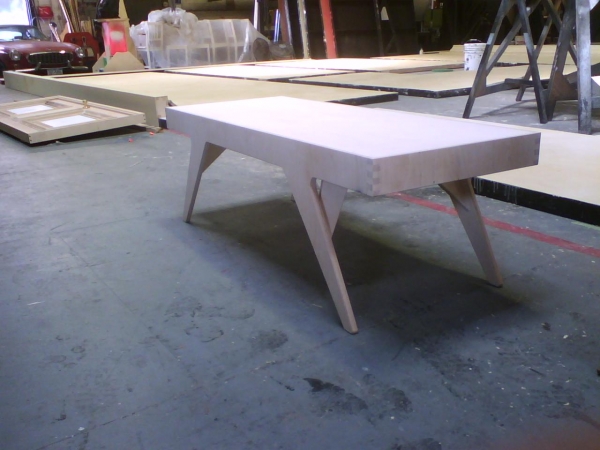
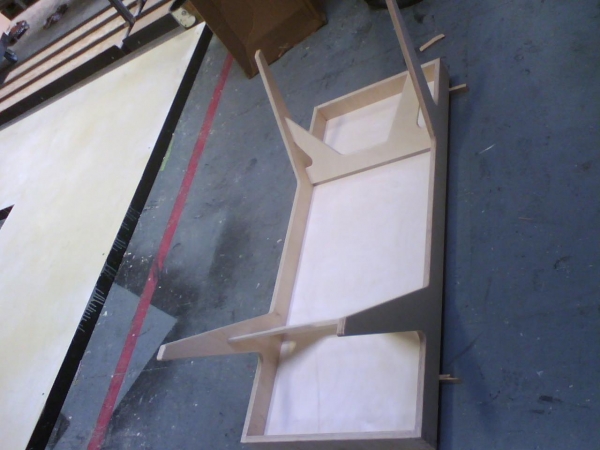
CNC Benches
I made these on CNC for a furniture designer who was prototyping some designs for a gallery.
- Material: Birch Plywood
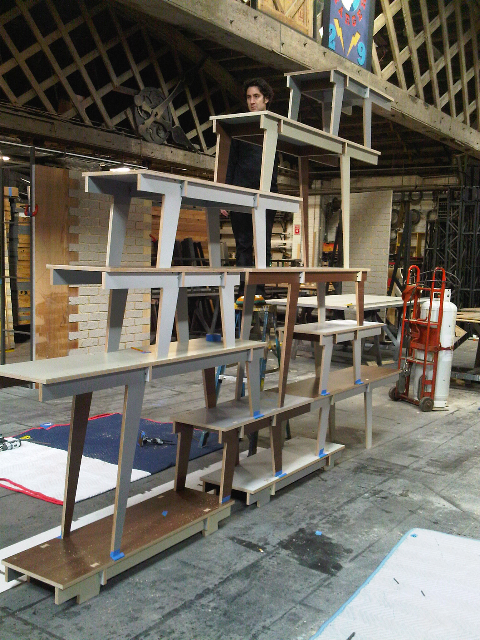
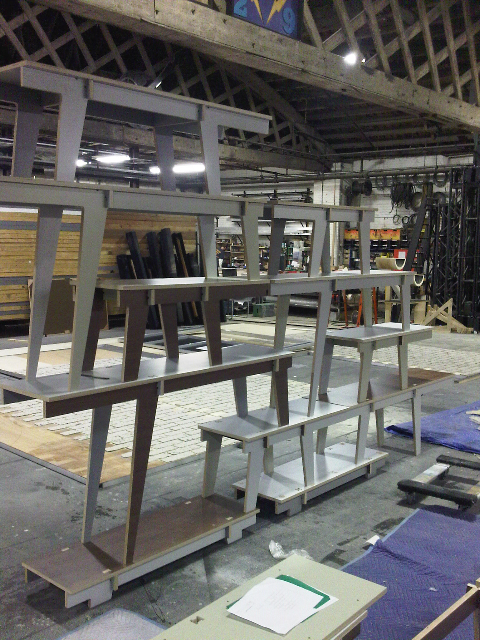
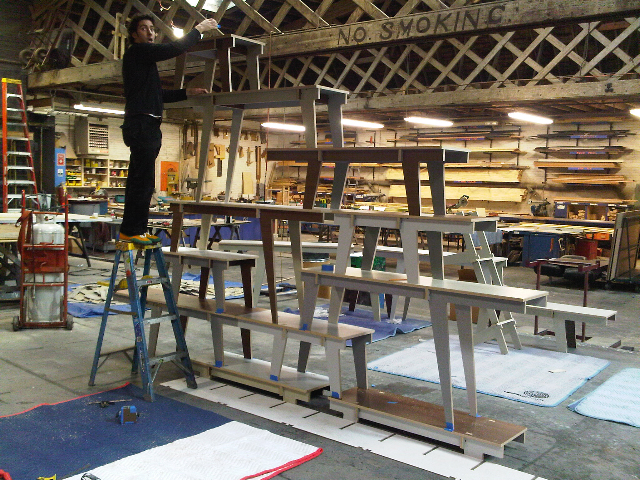
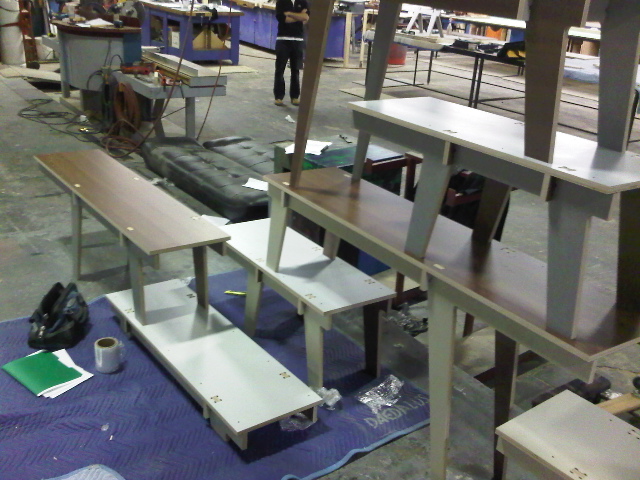
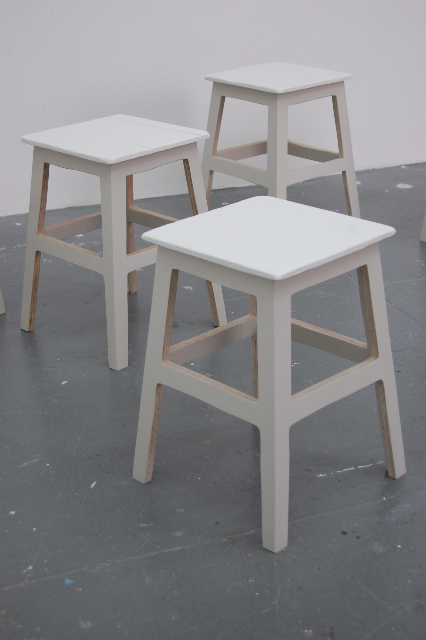
Laser-Cut Tracing Tools
These were designed to be used for tracing the profiles of archaeological artifacts.
- Material: Birch Plywood
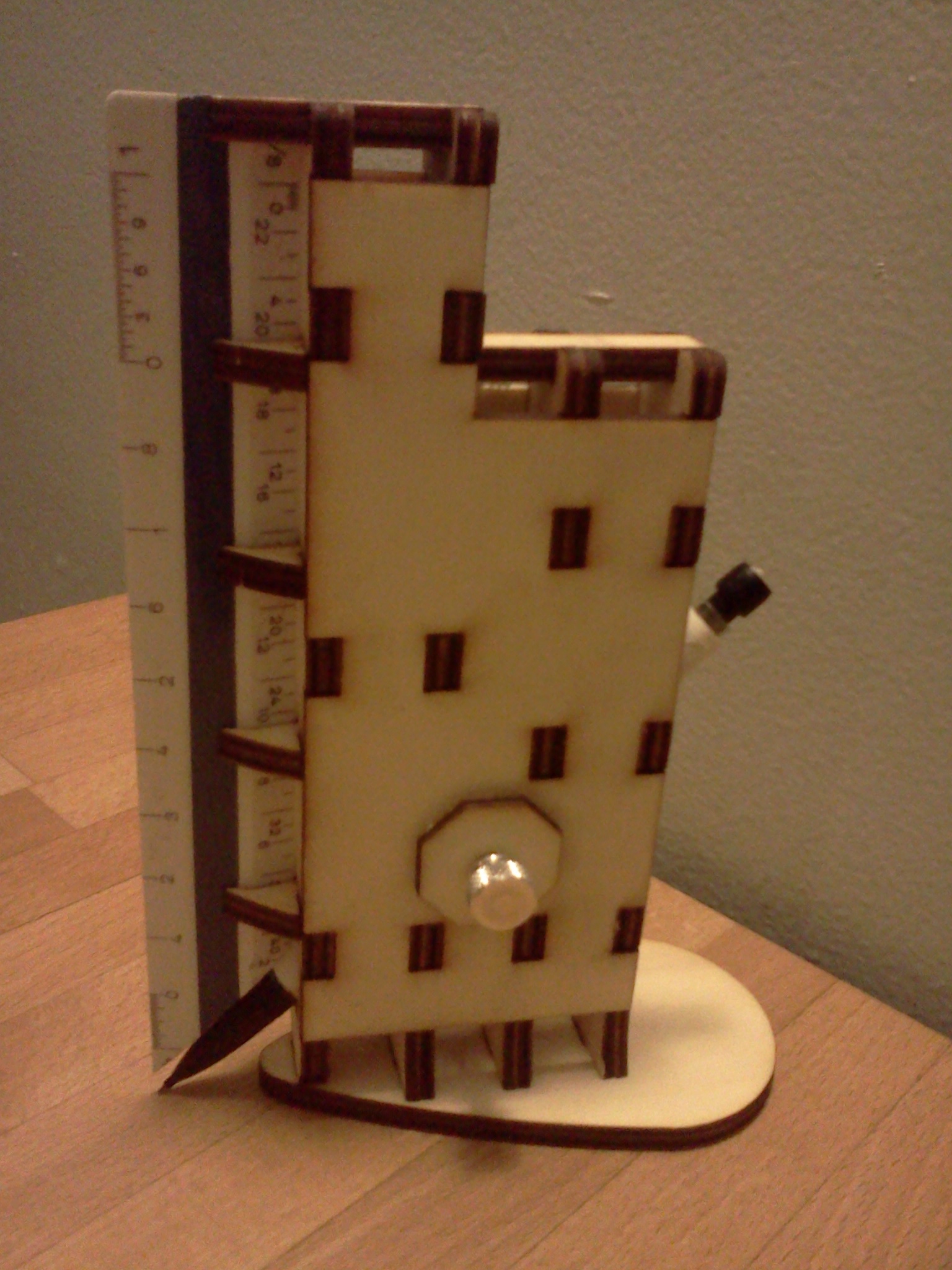
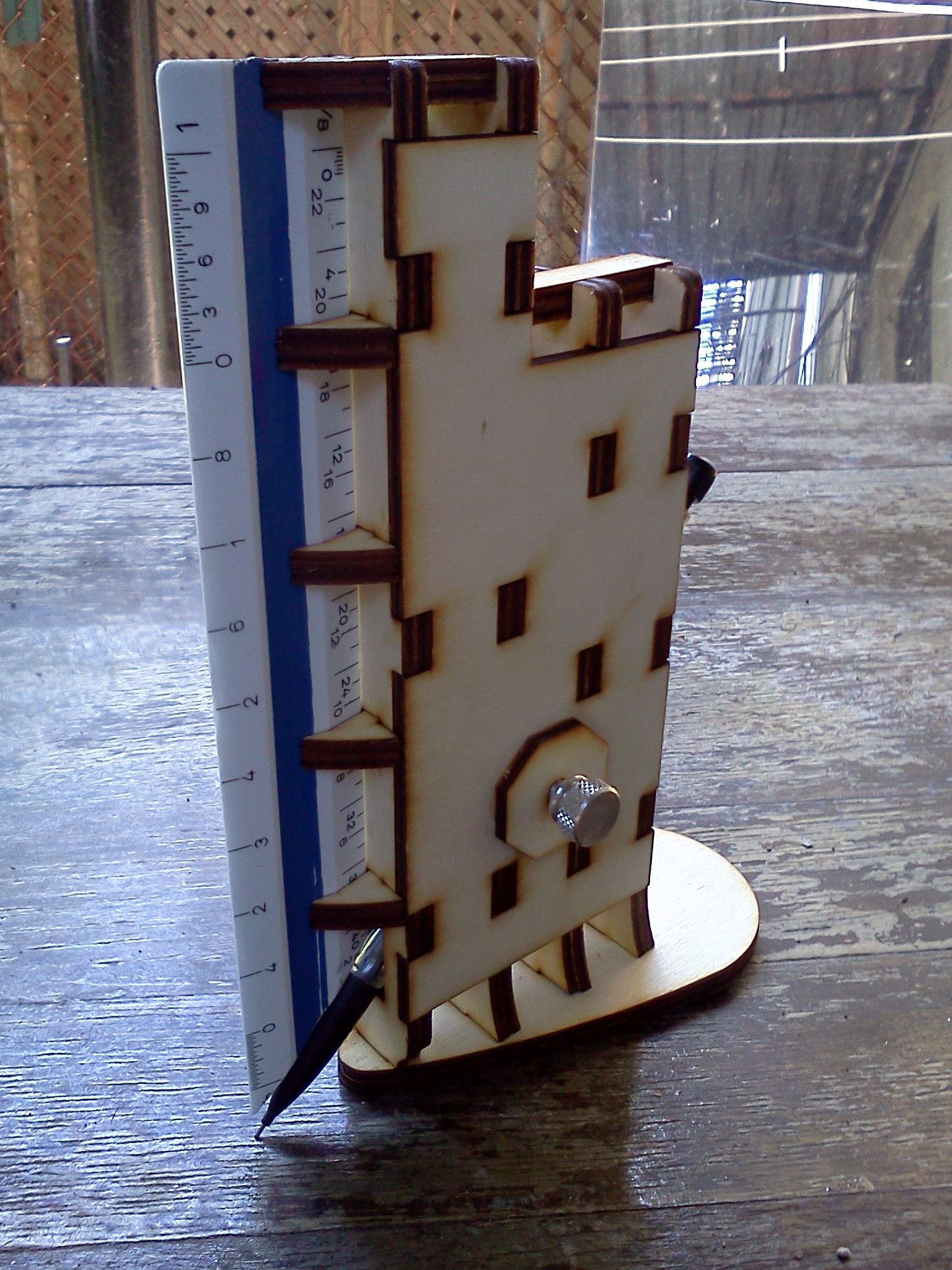
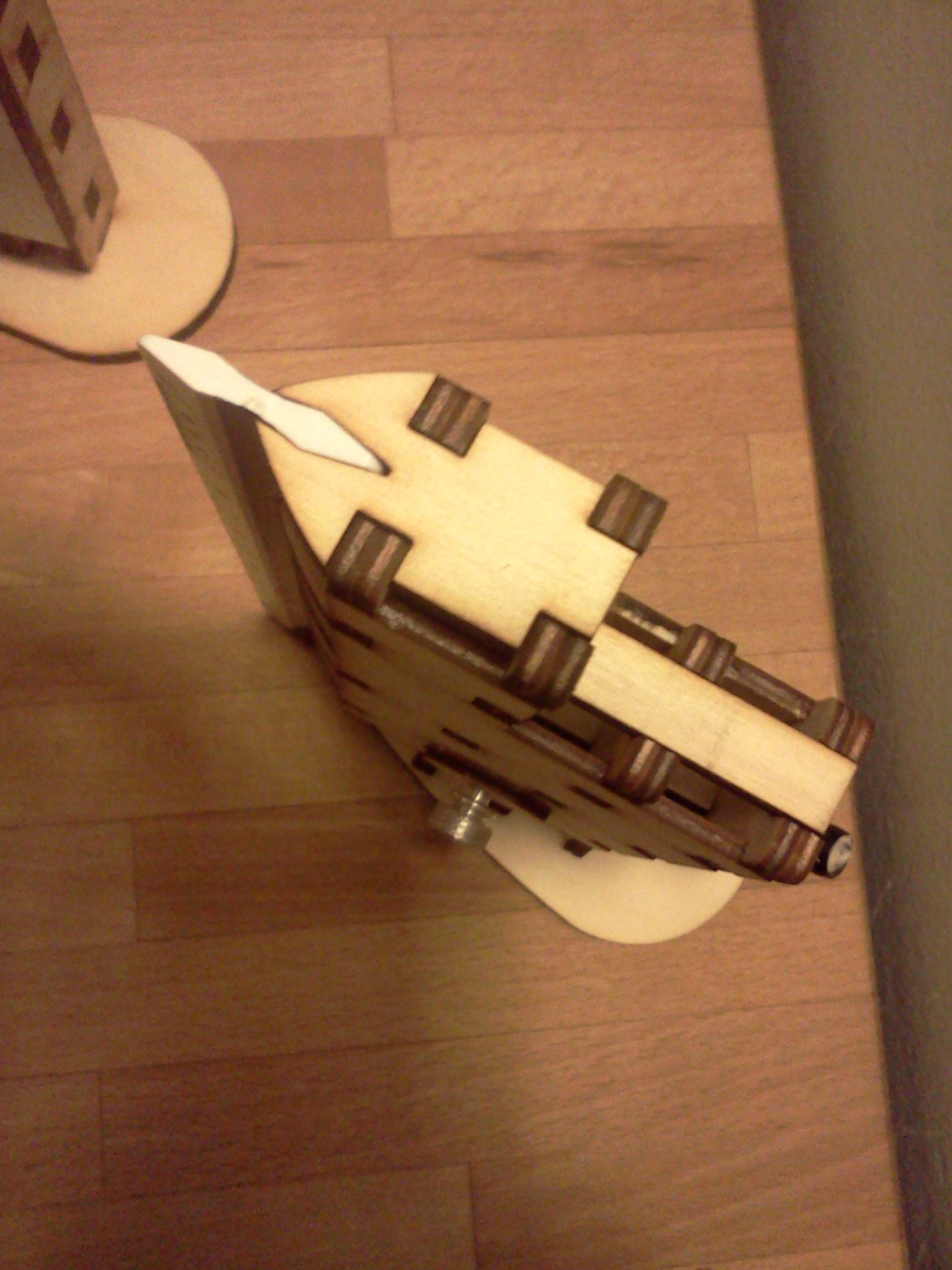
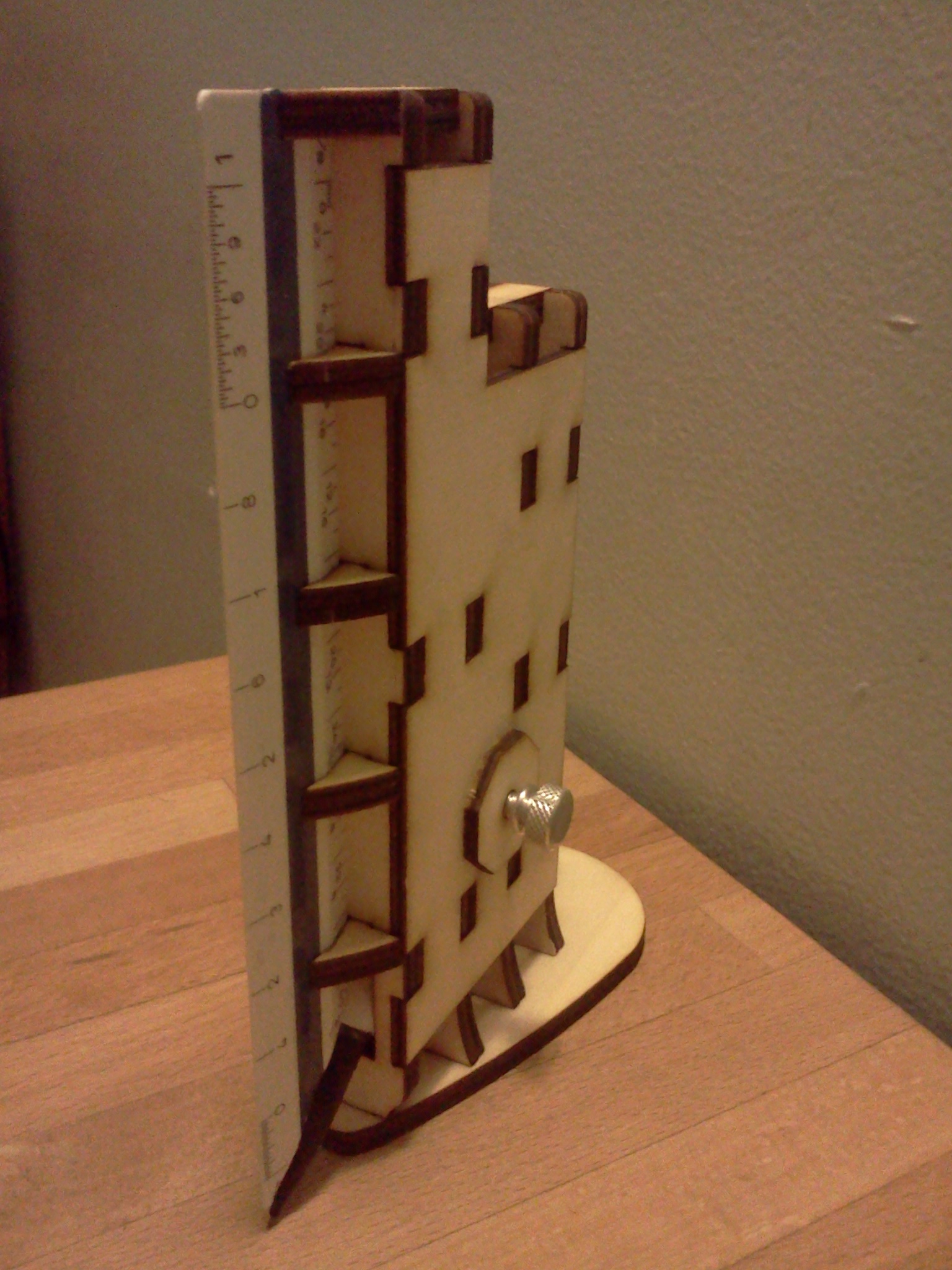
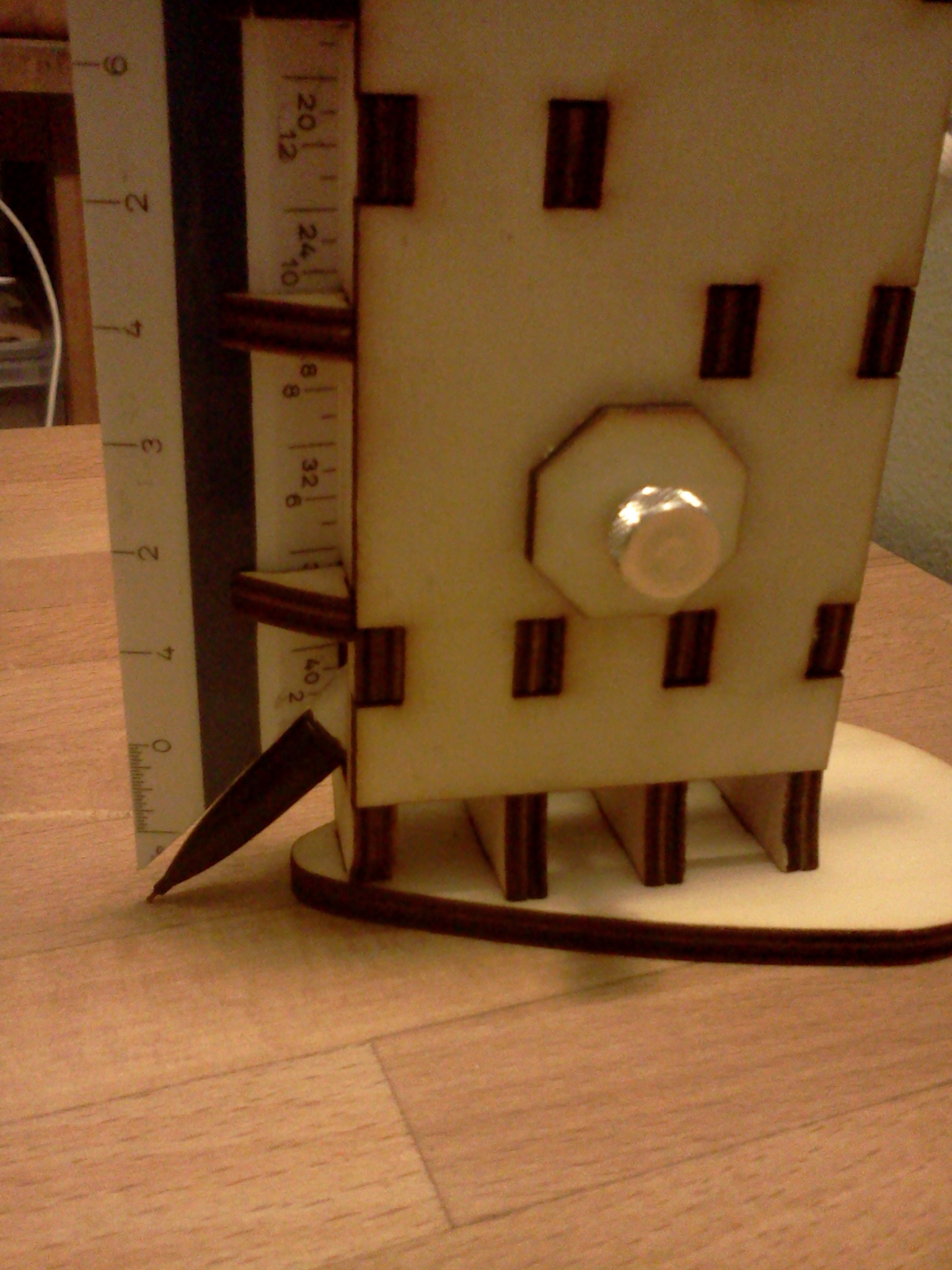
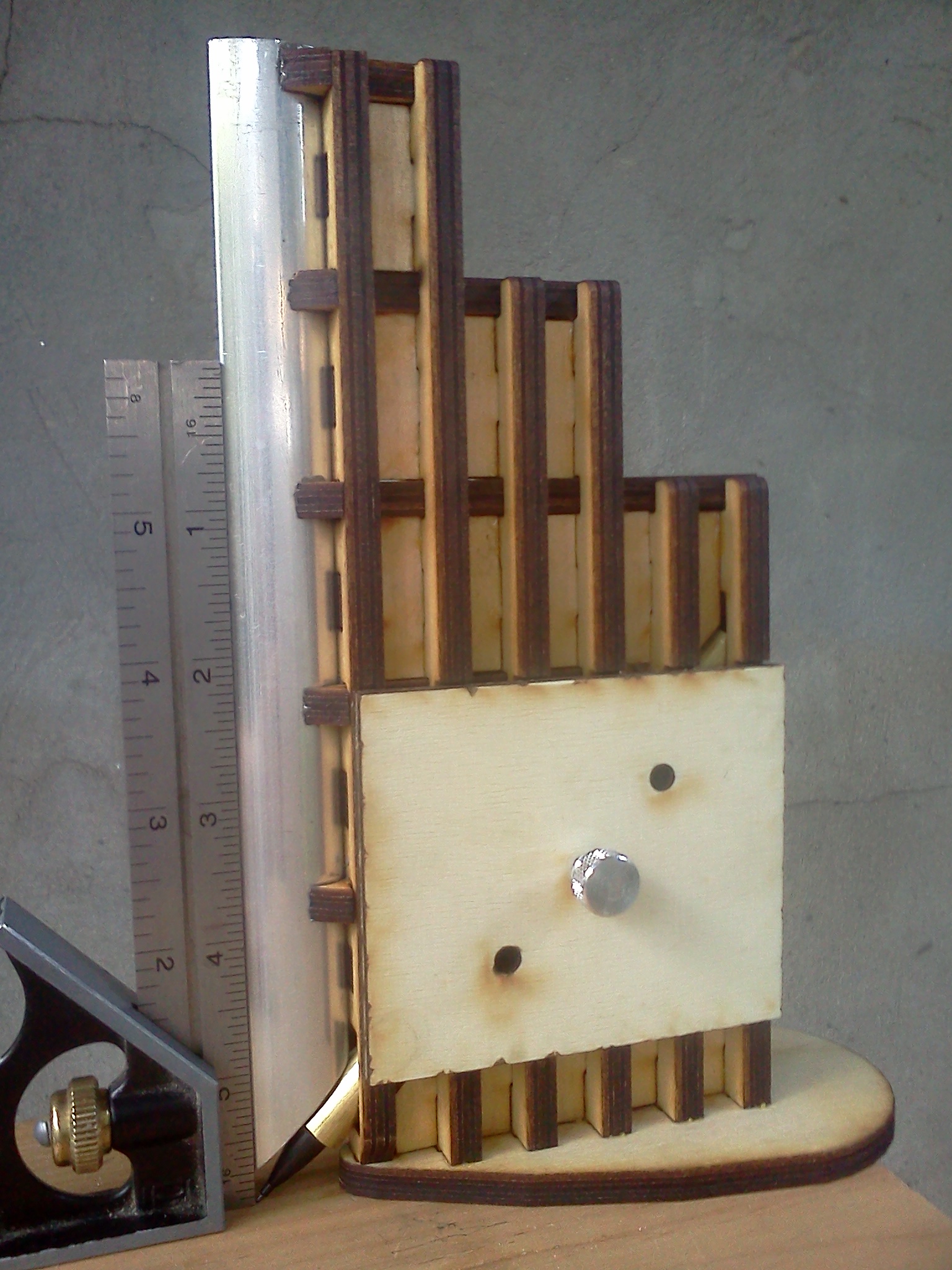
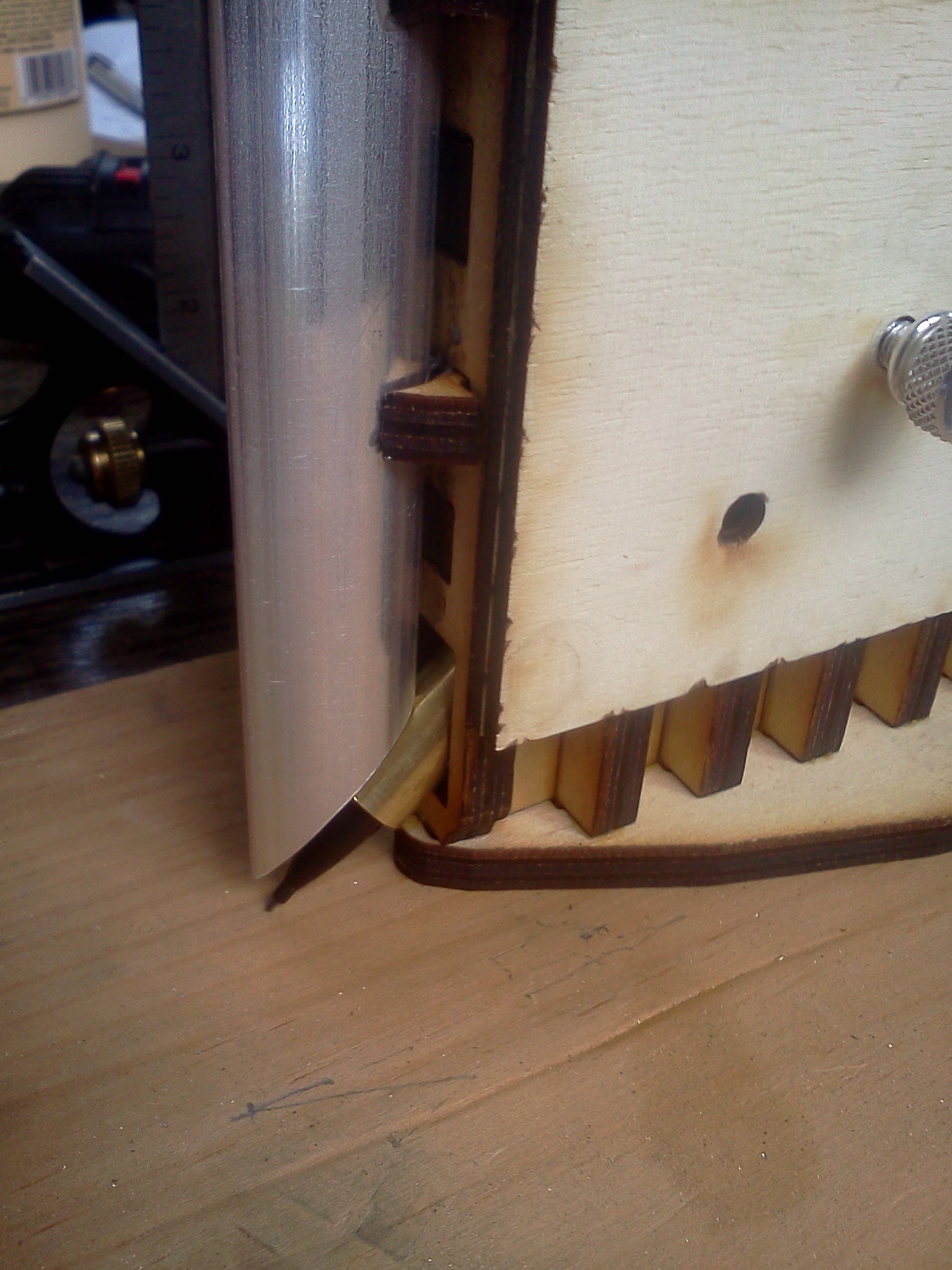
Rescue Bird Cage
A temporary cage and roost built for a client who was rescuing injured wild birds.
- Material: Lumber, fencing
